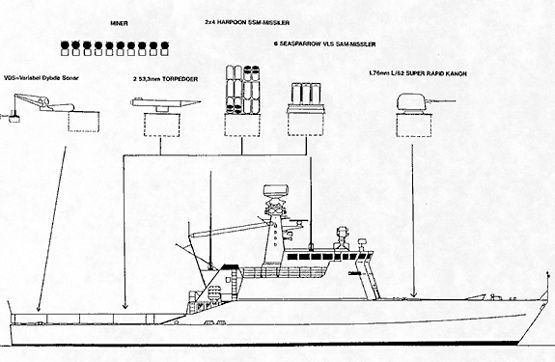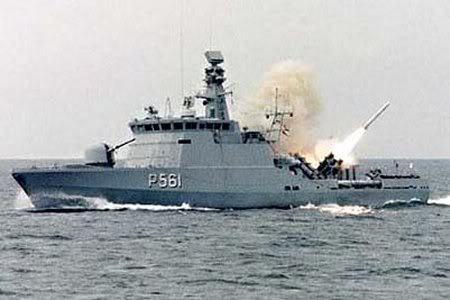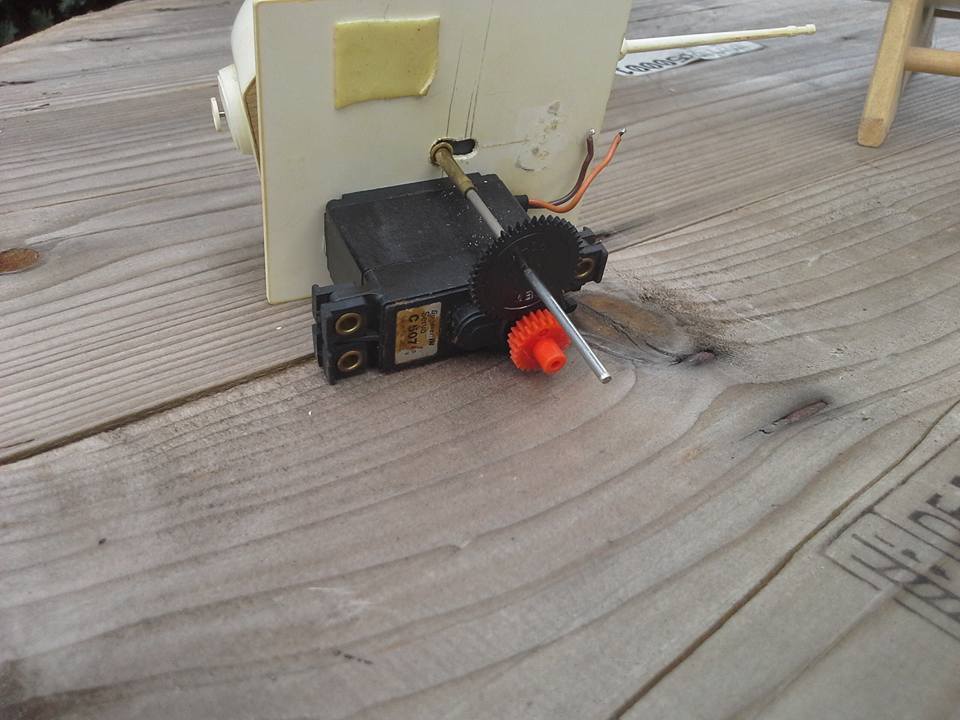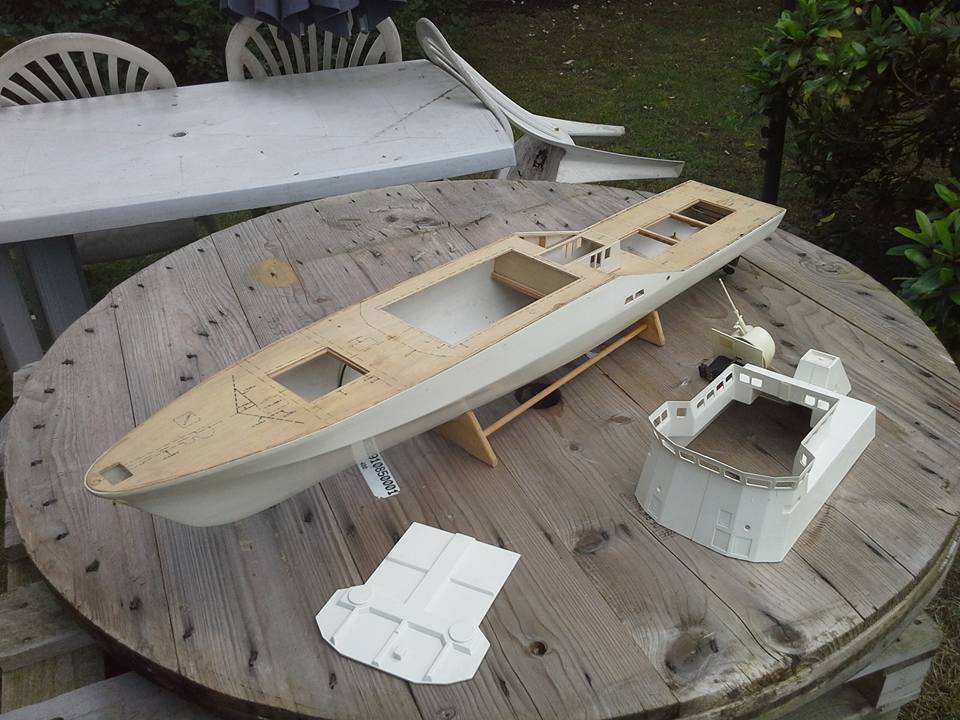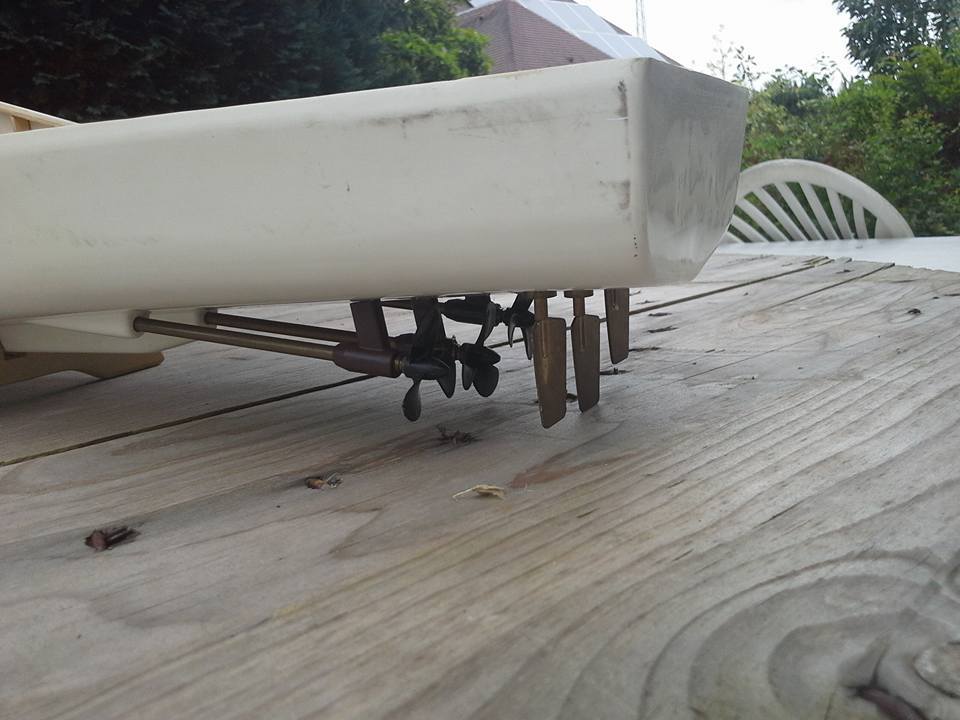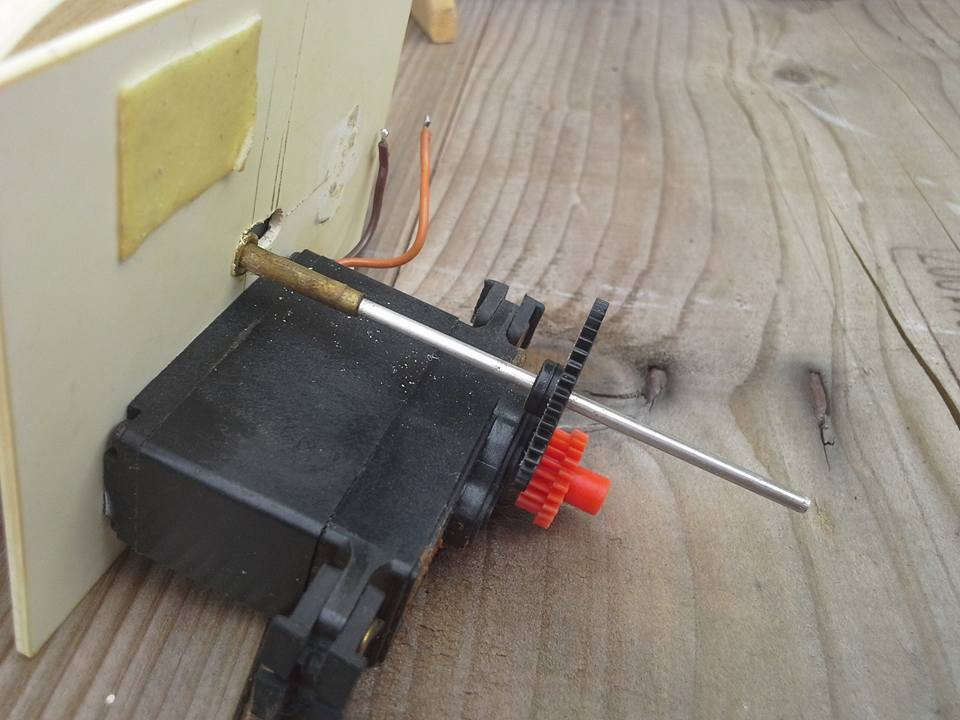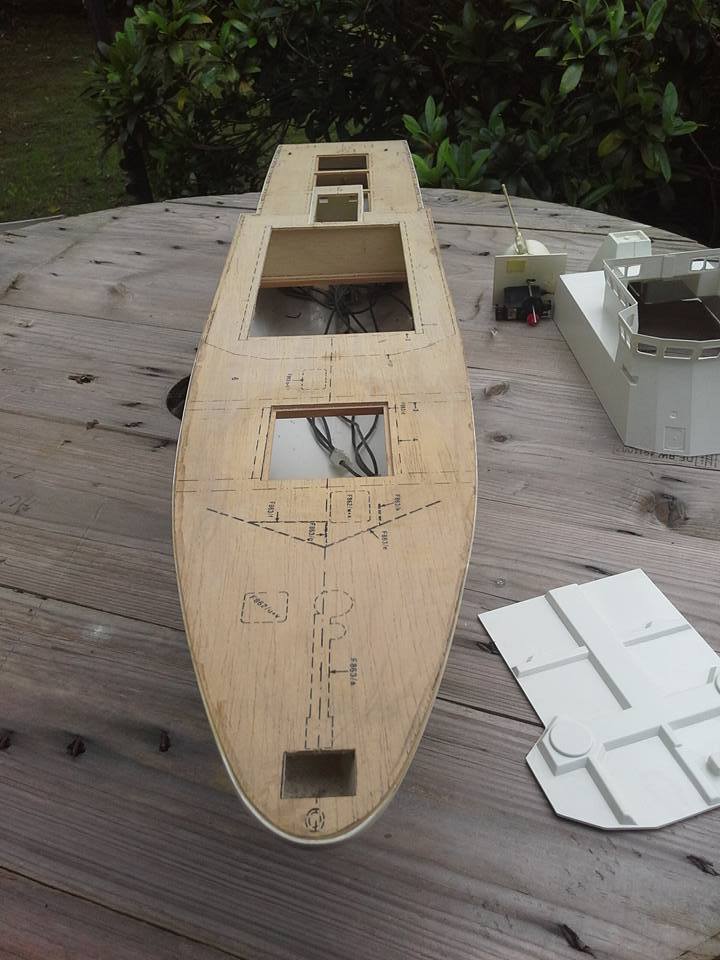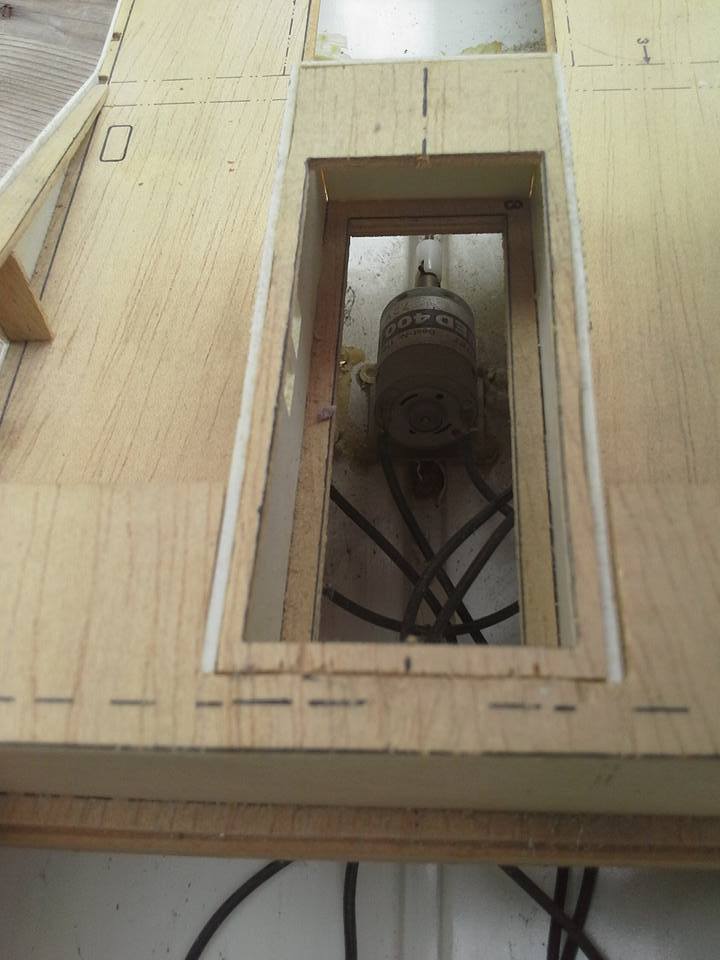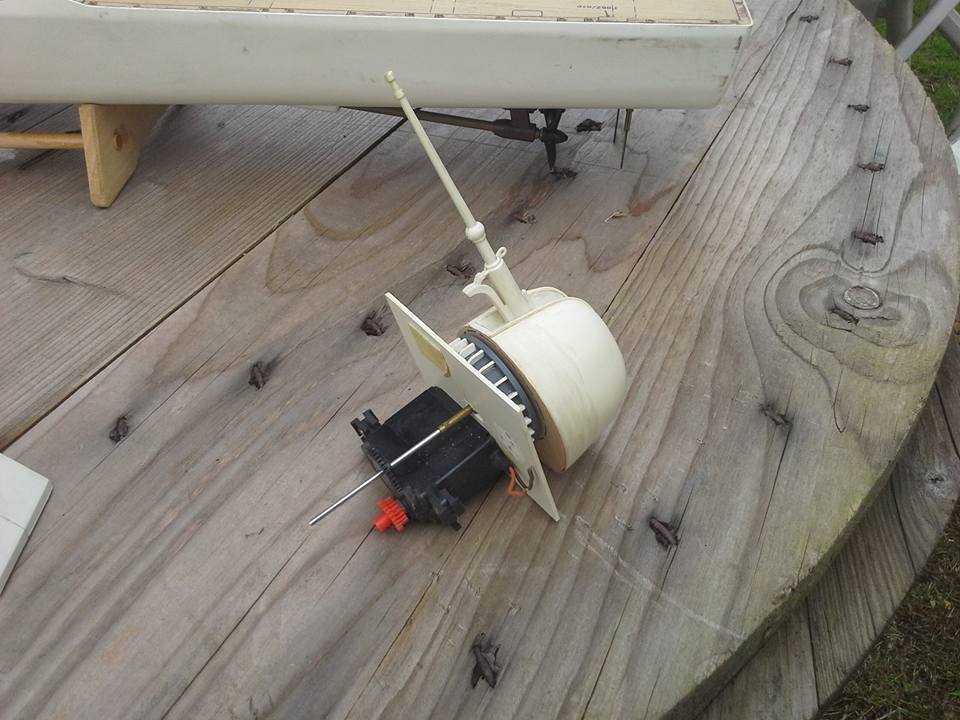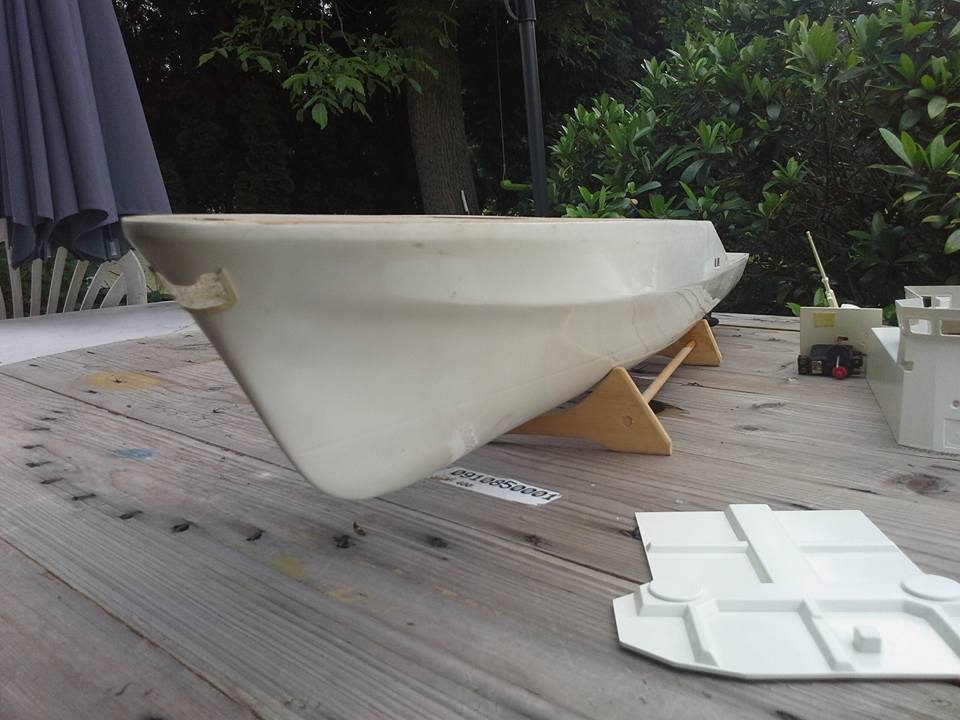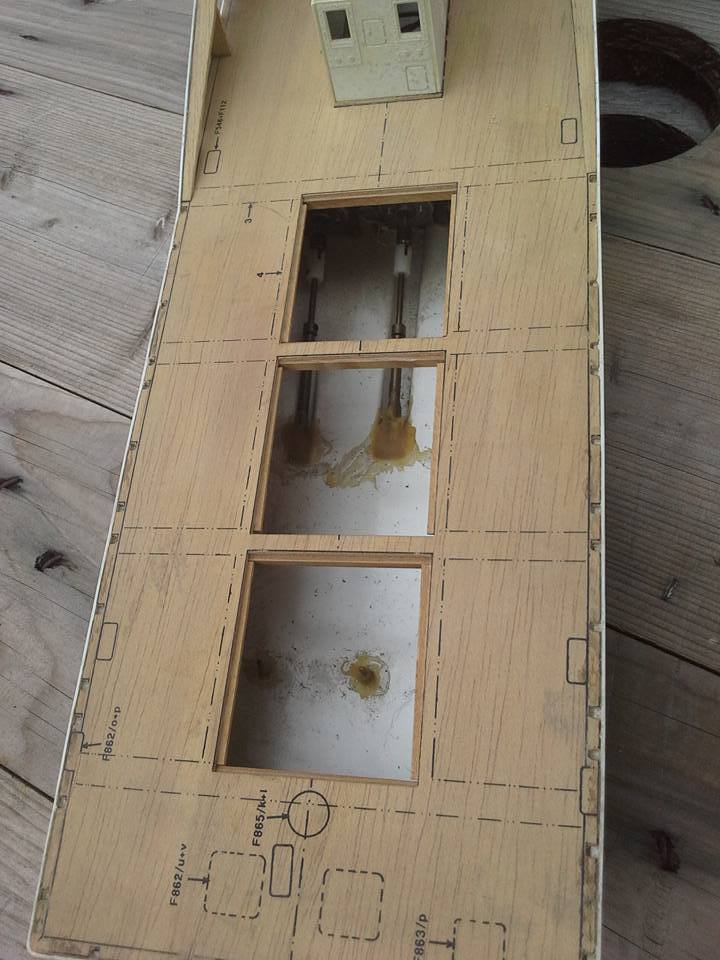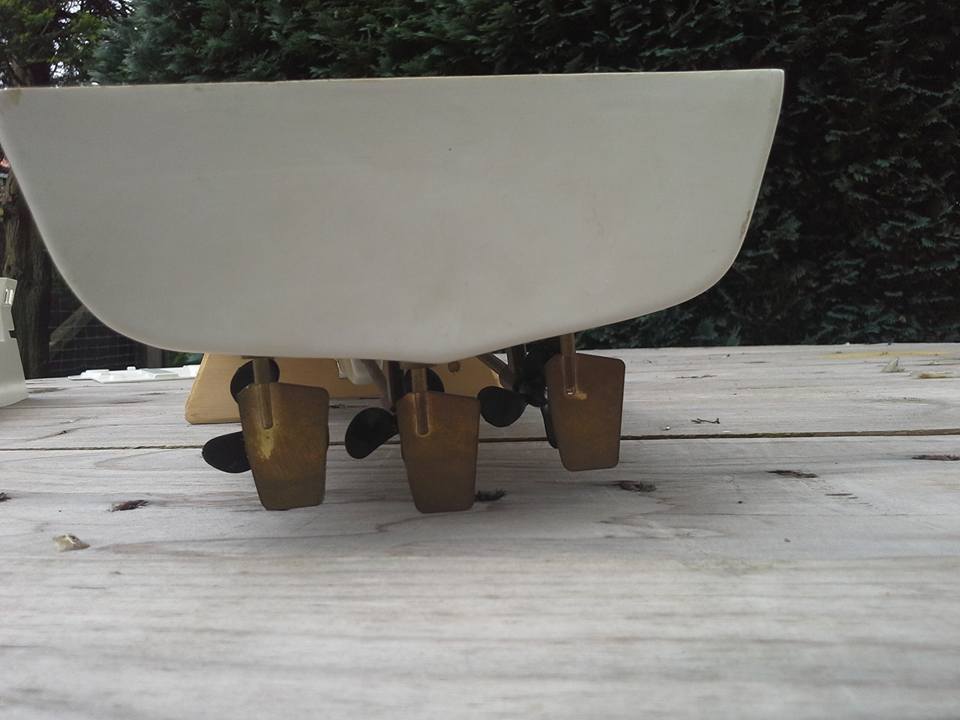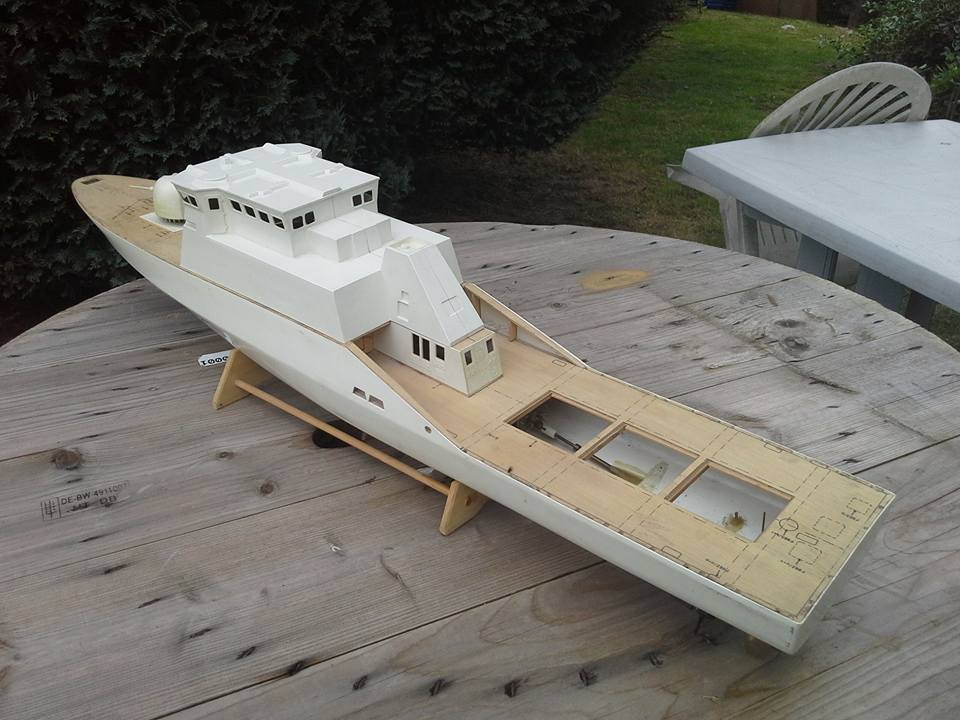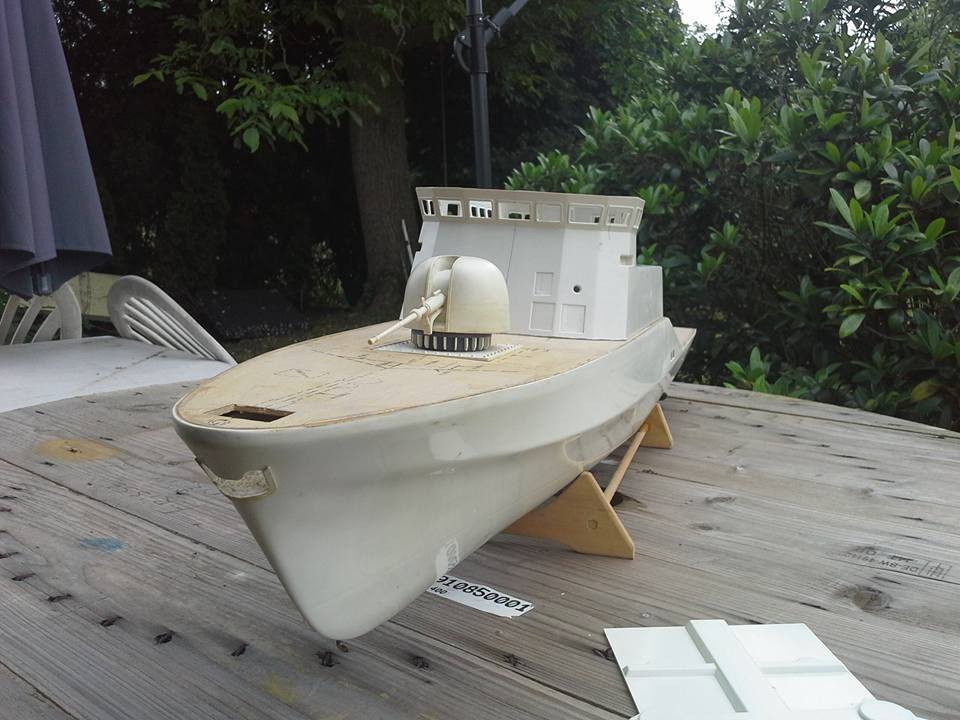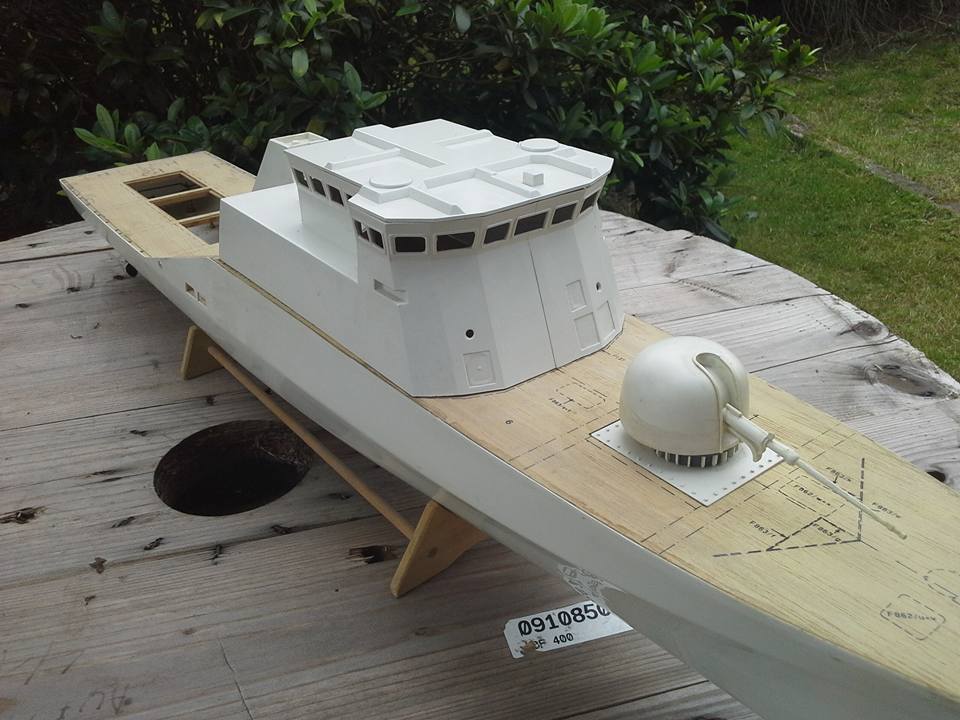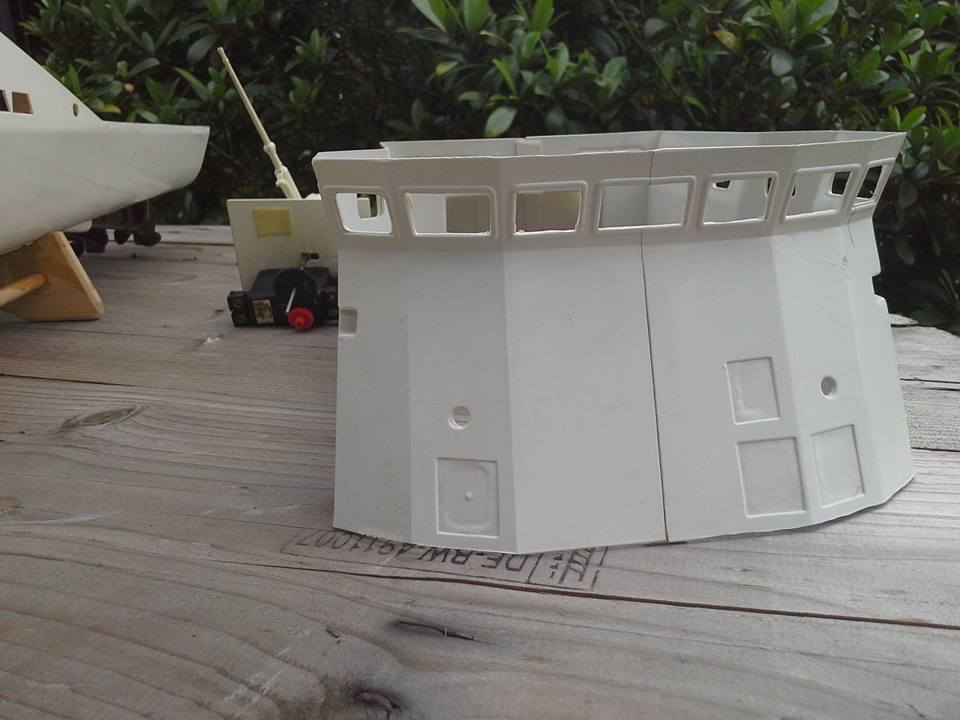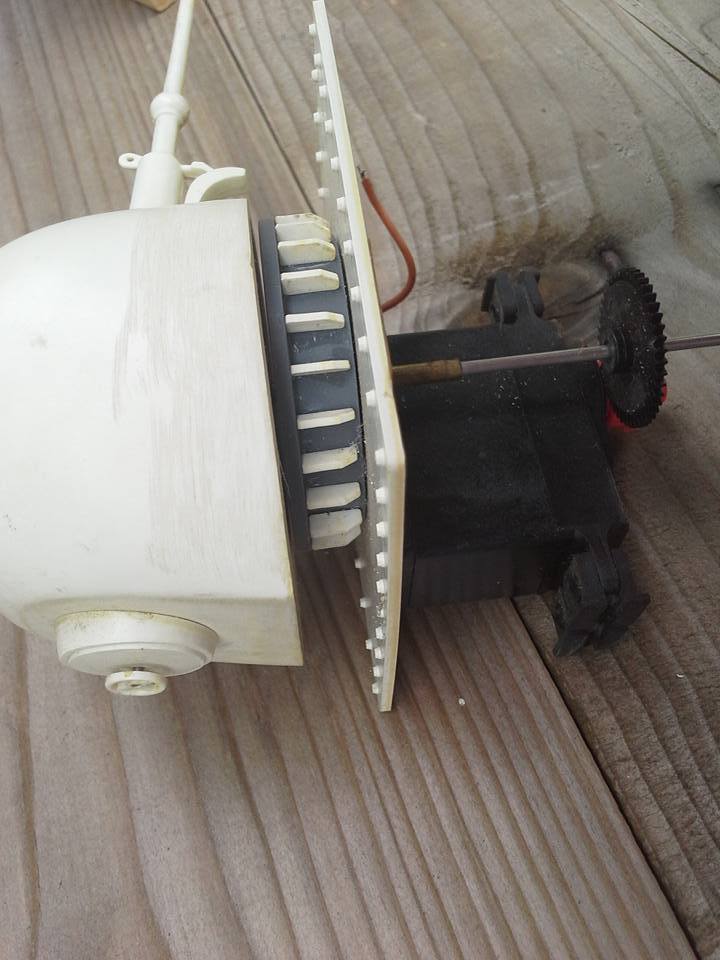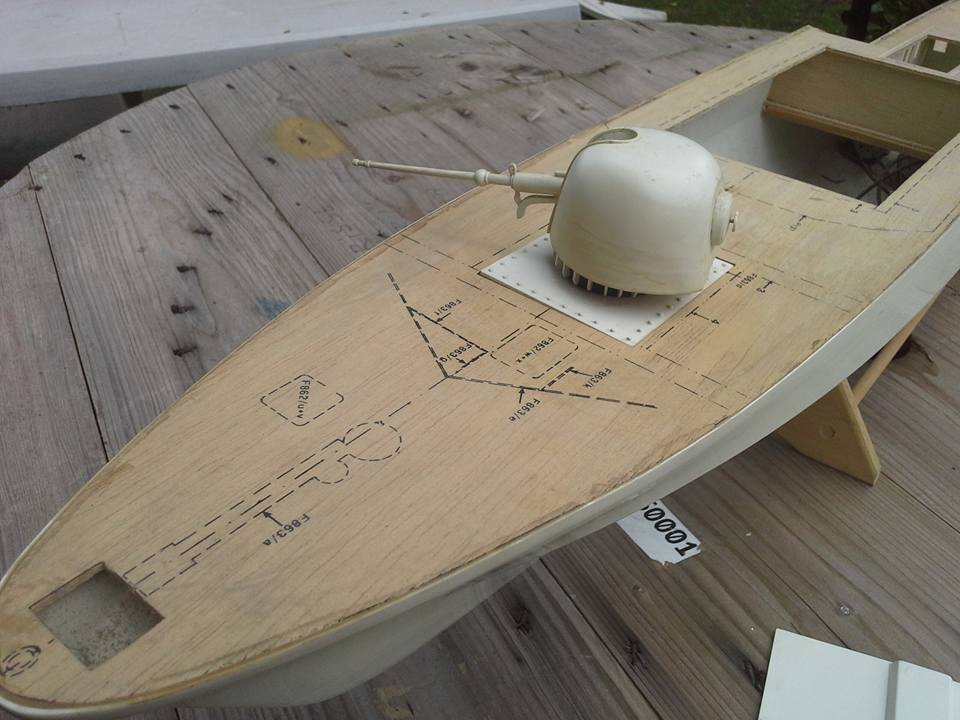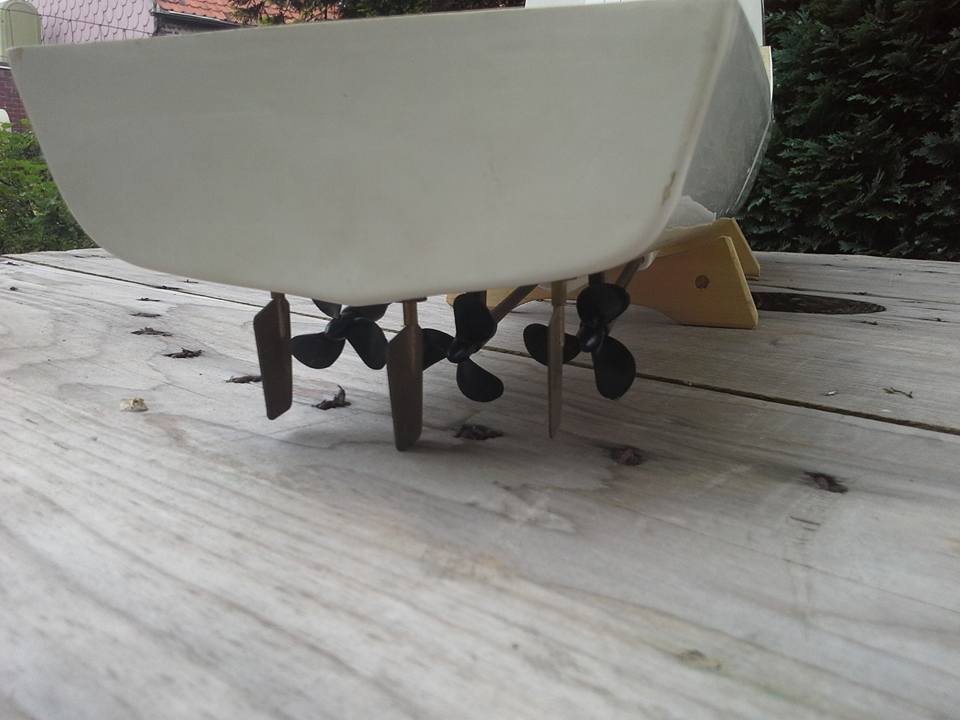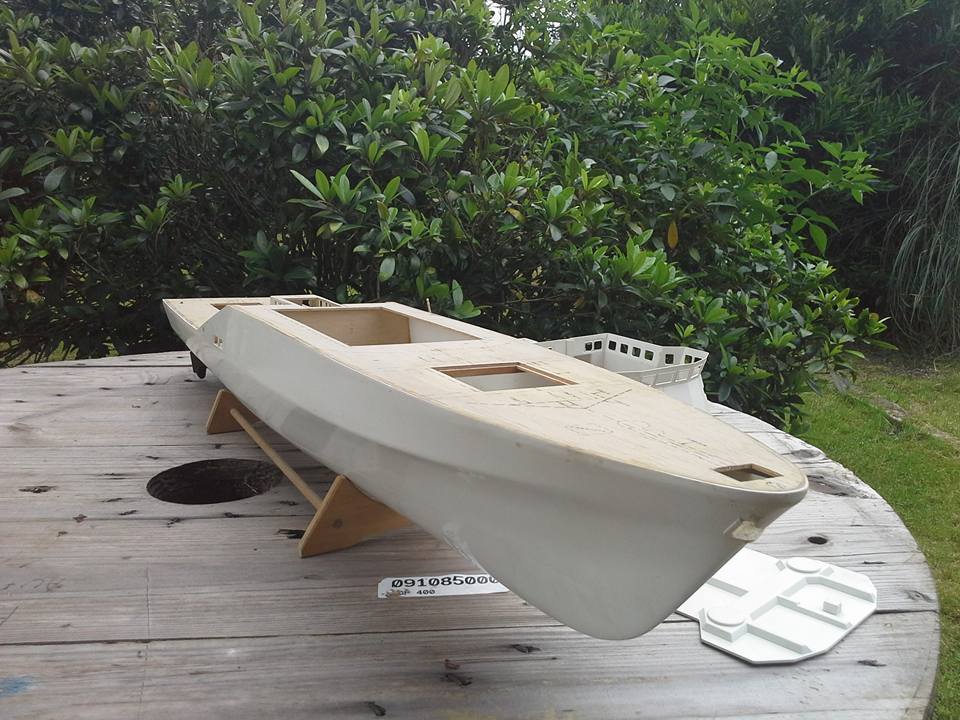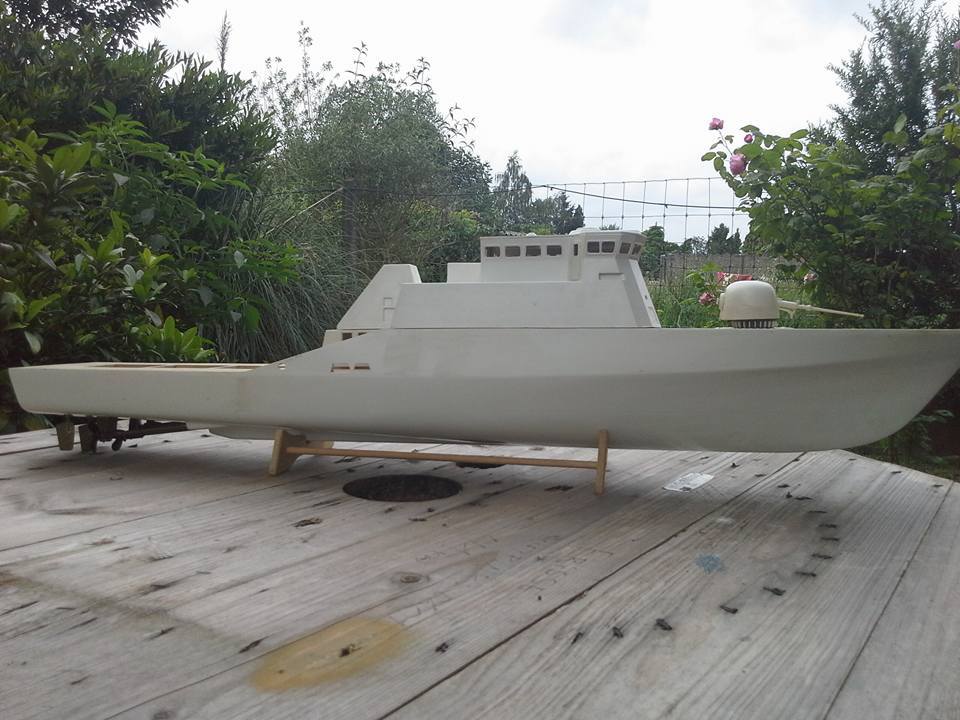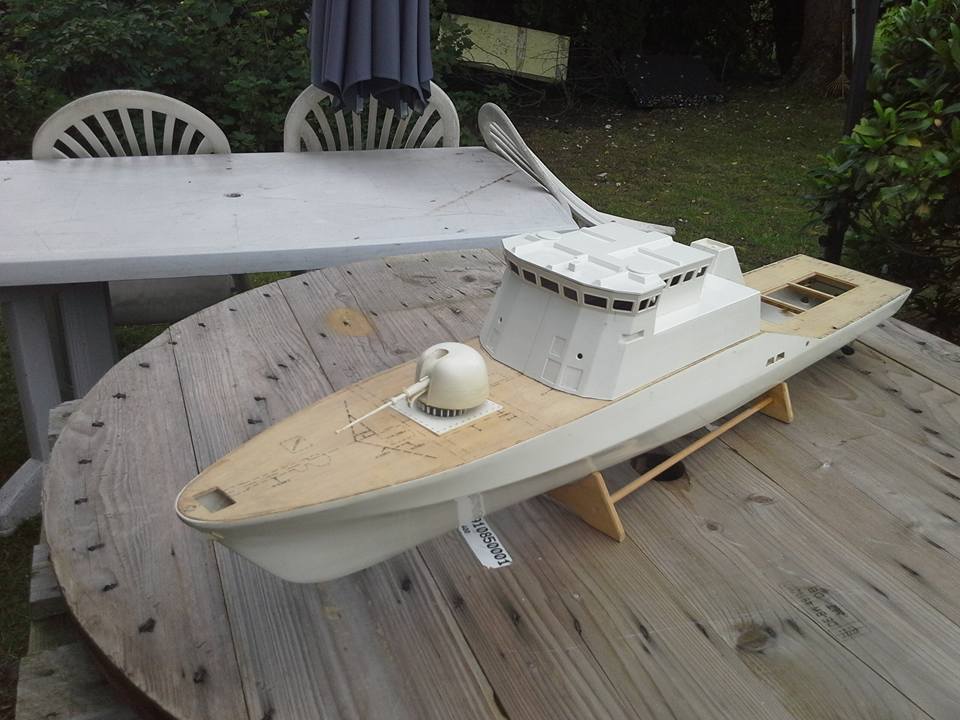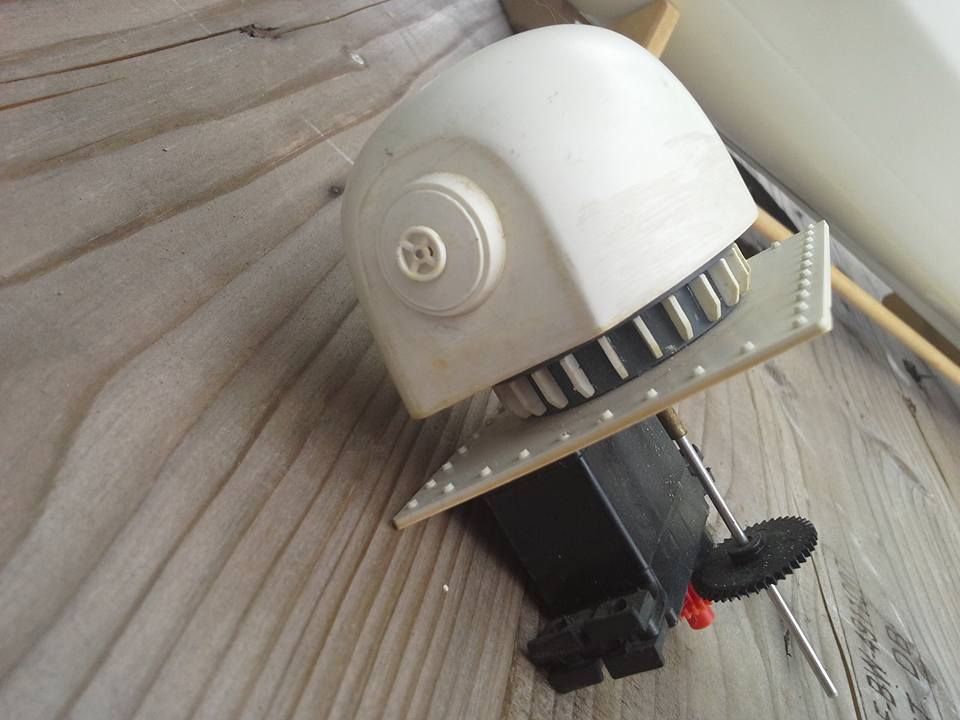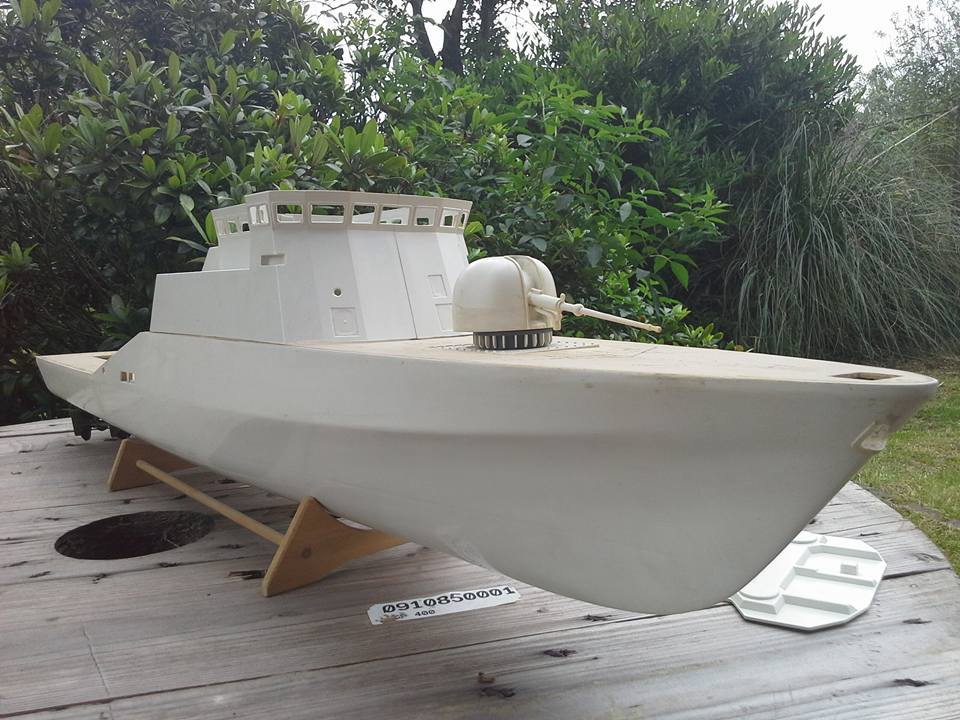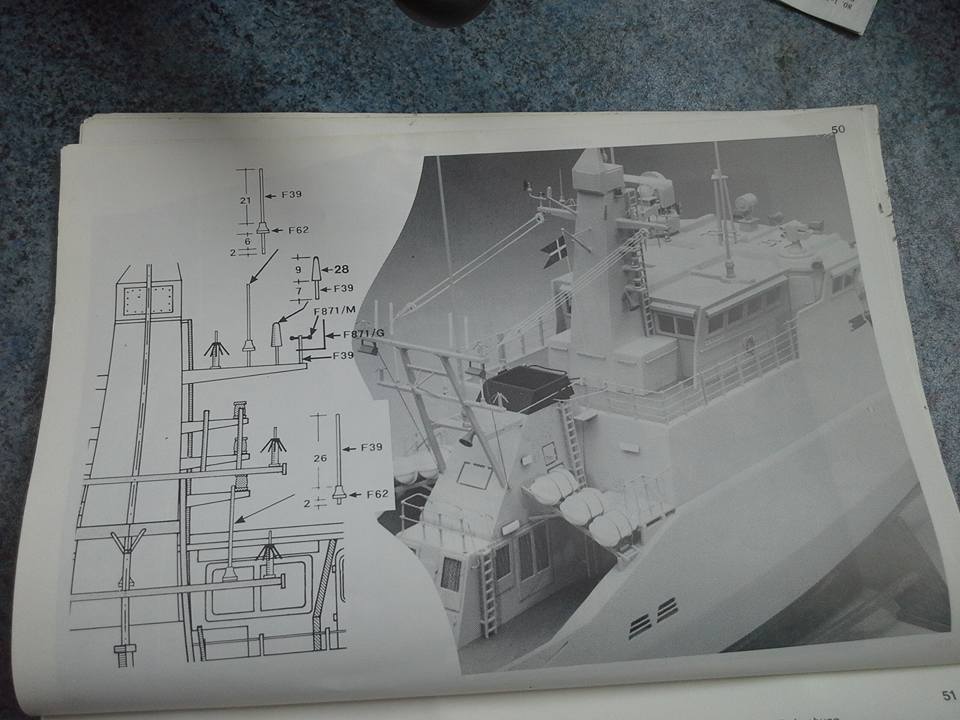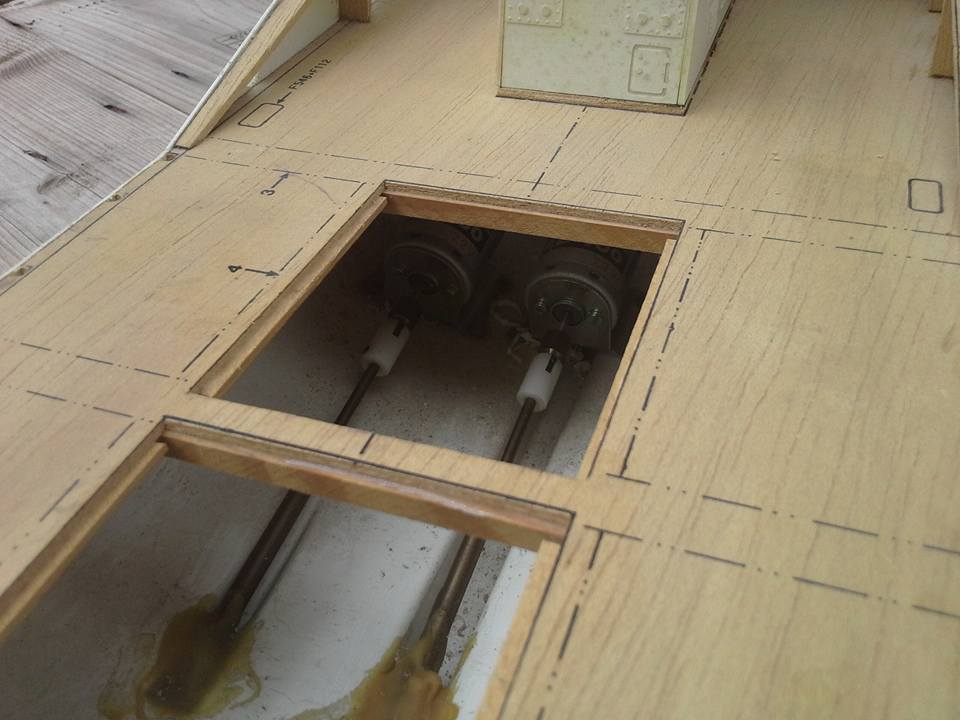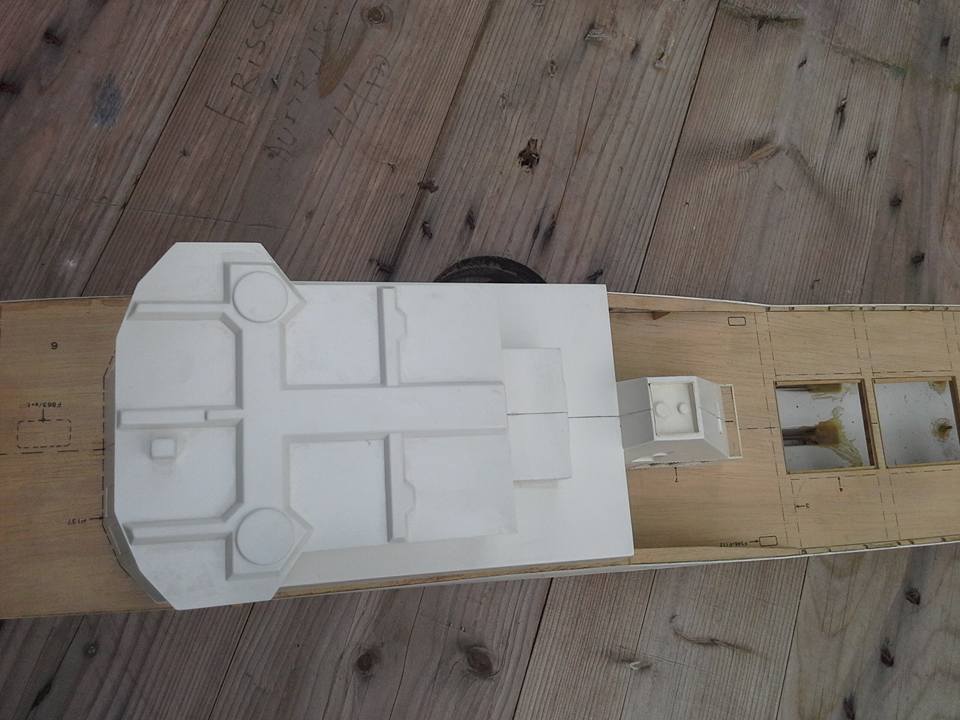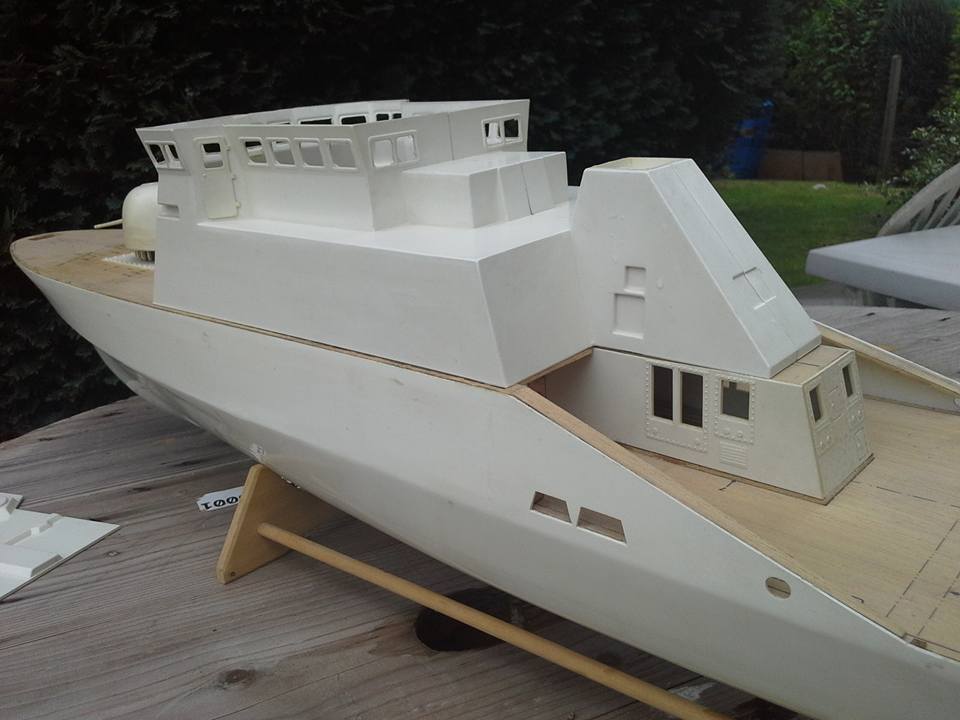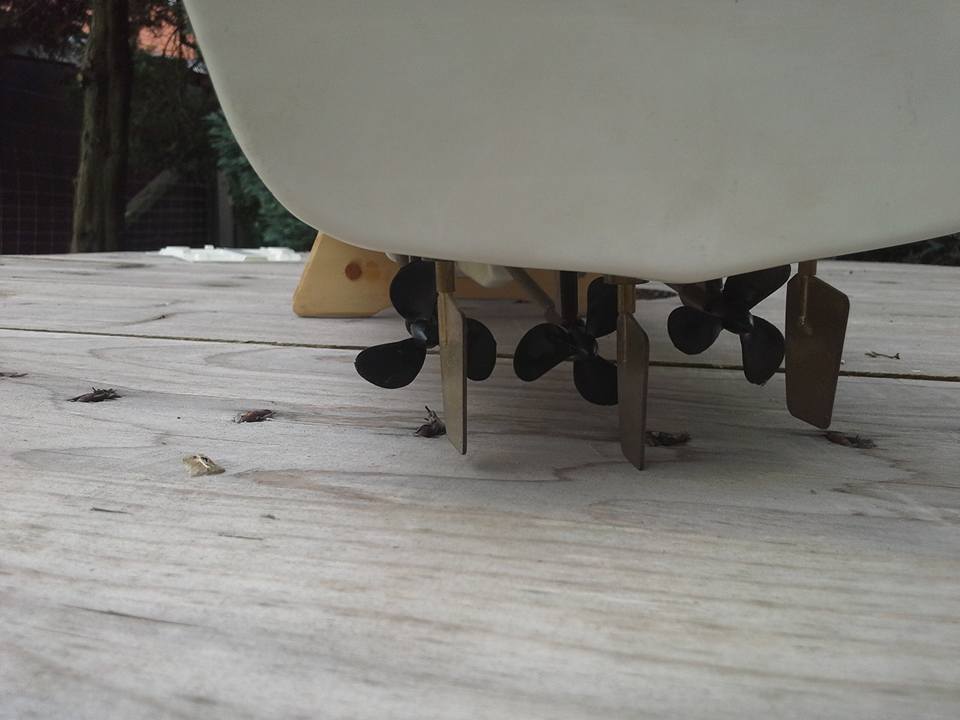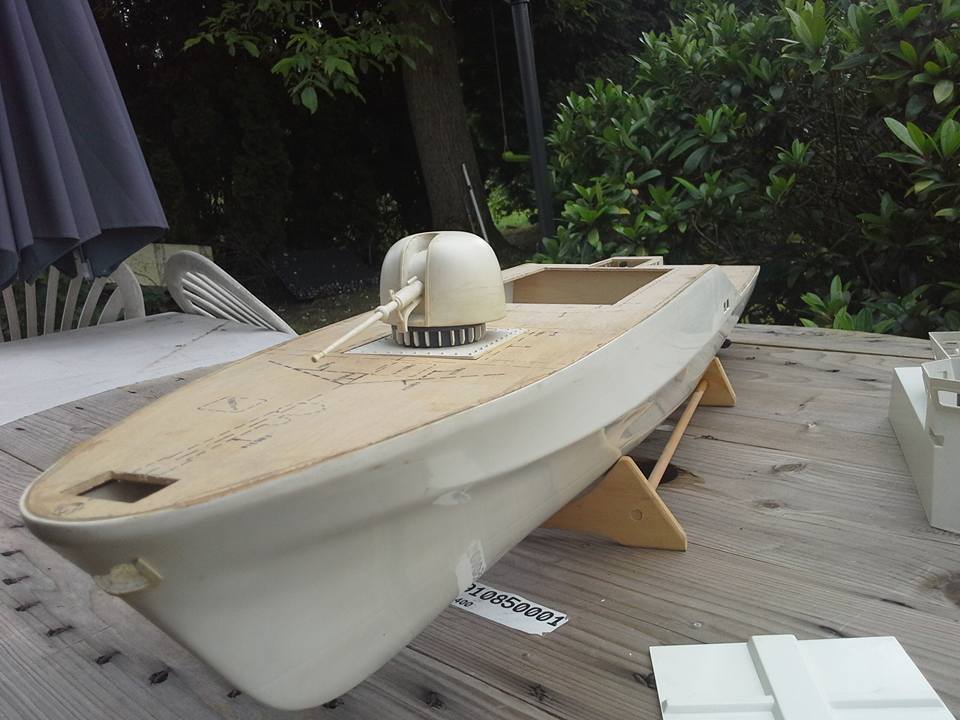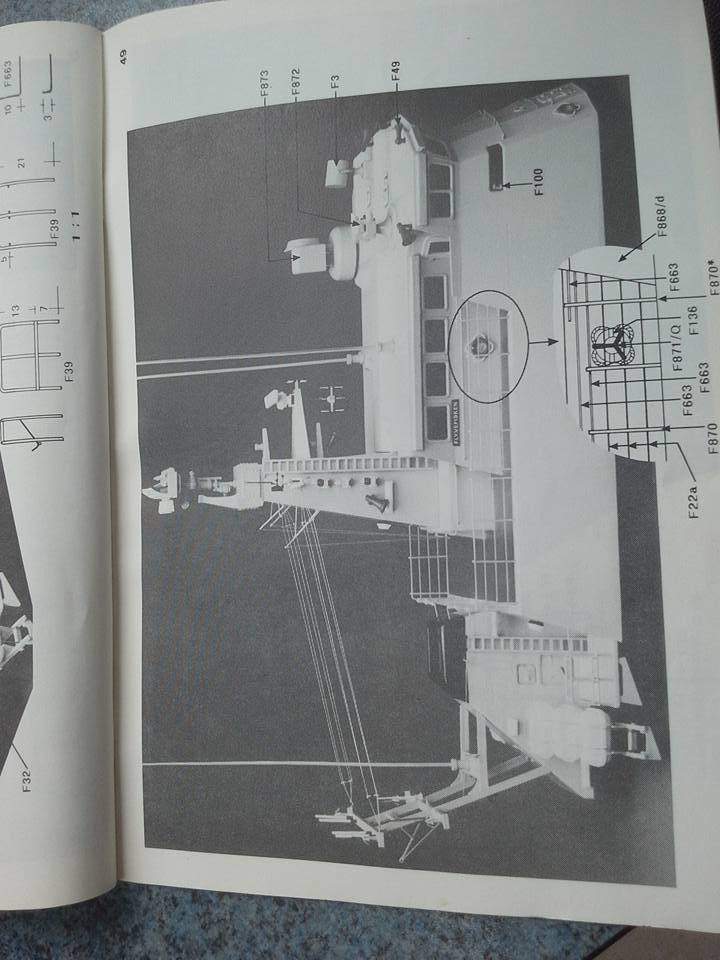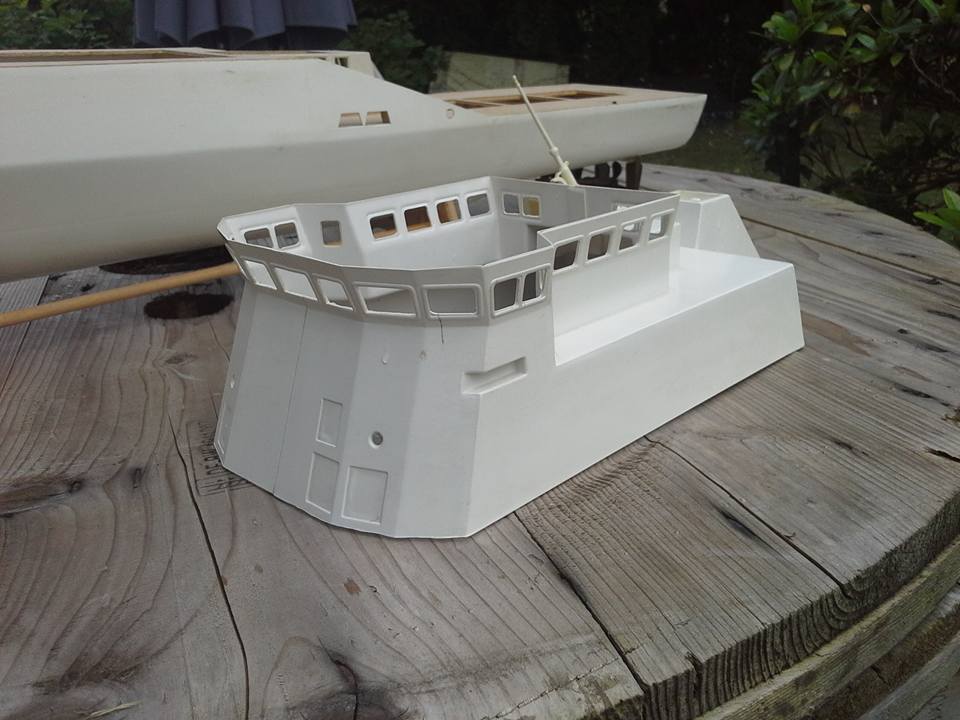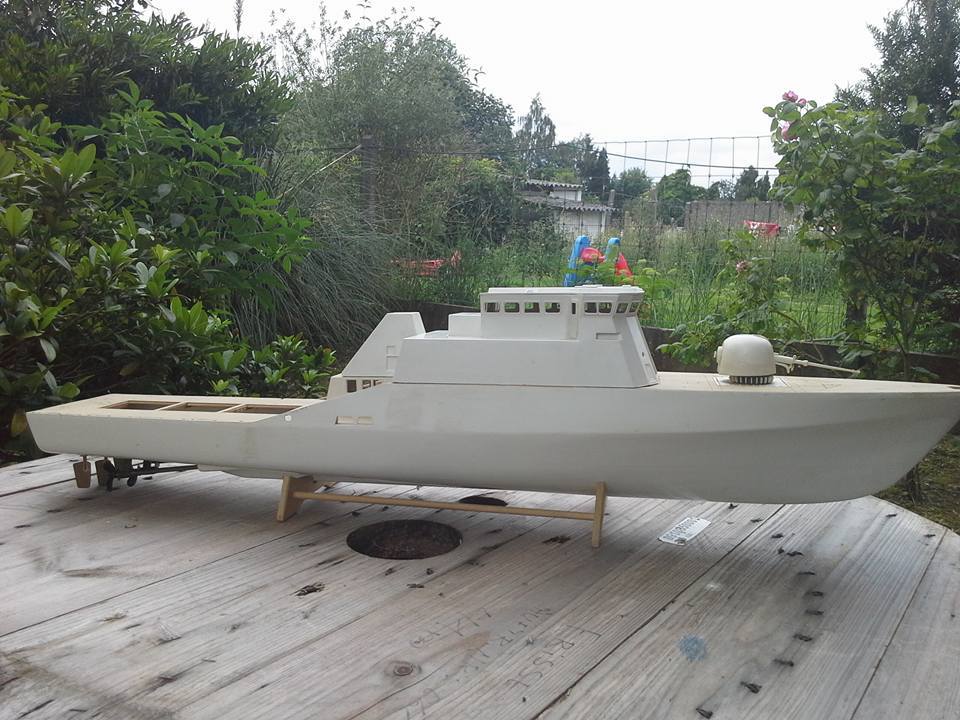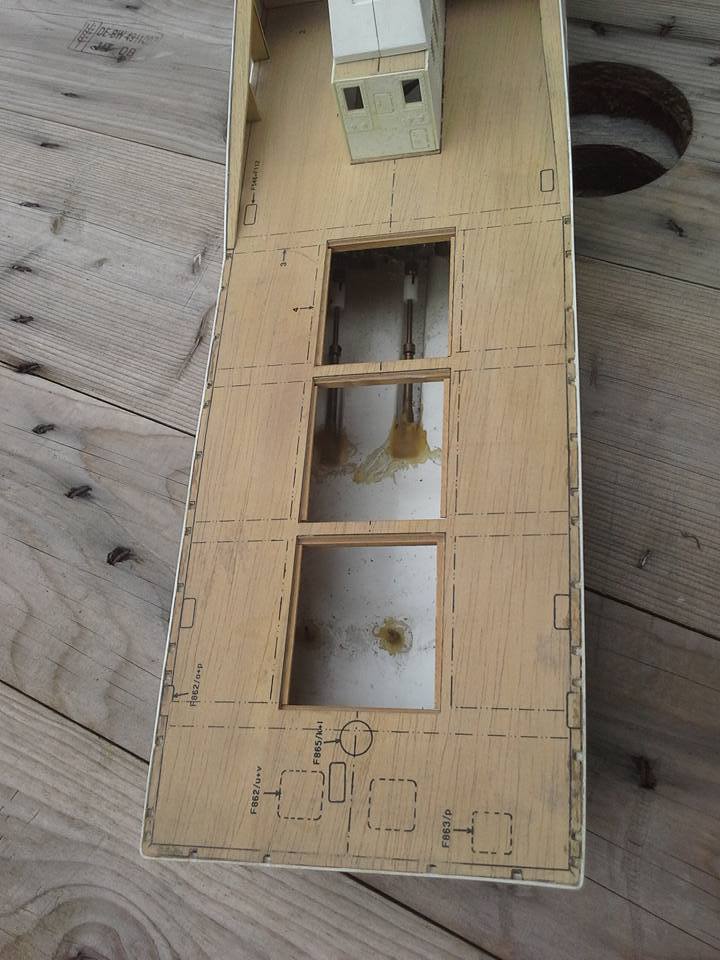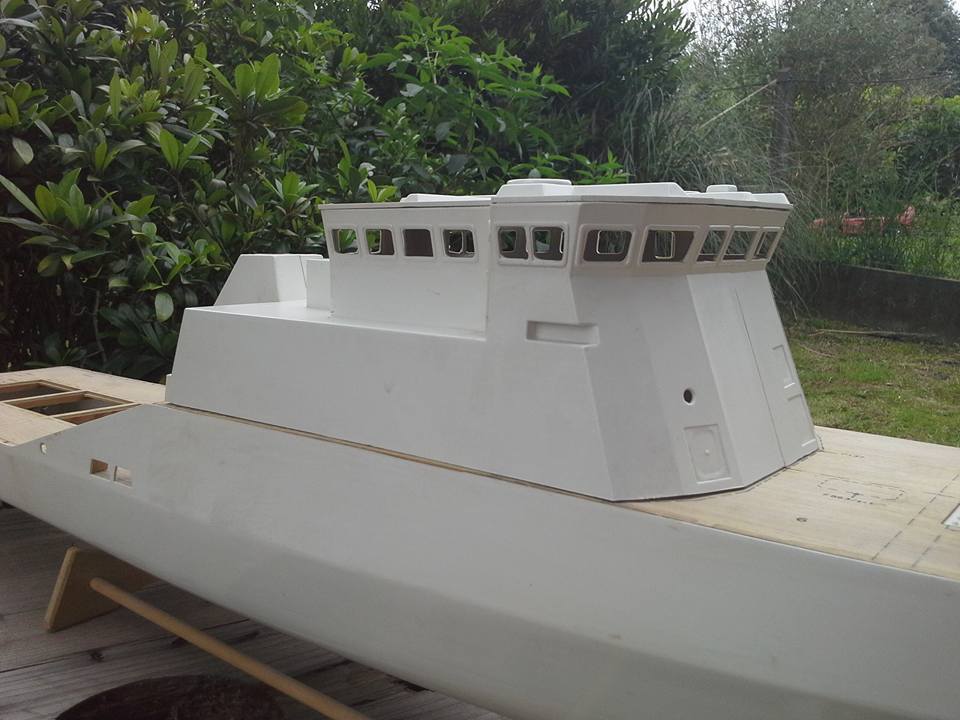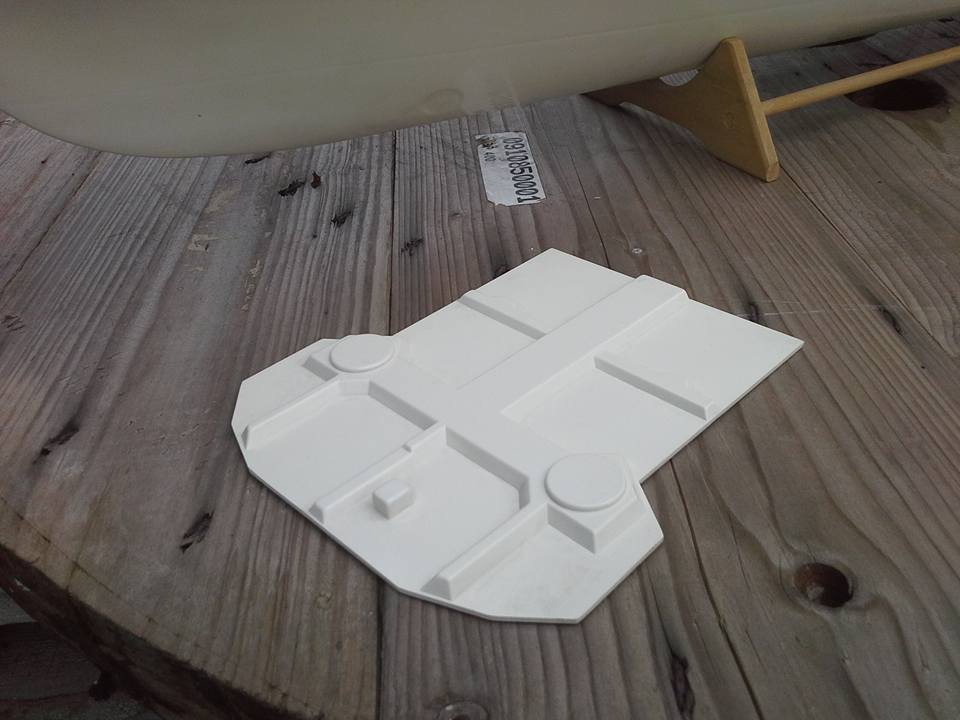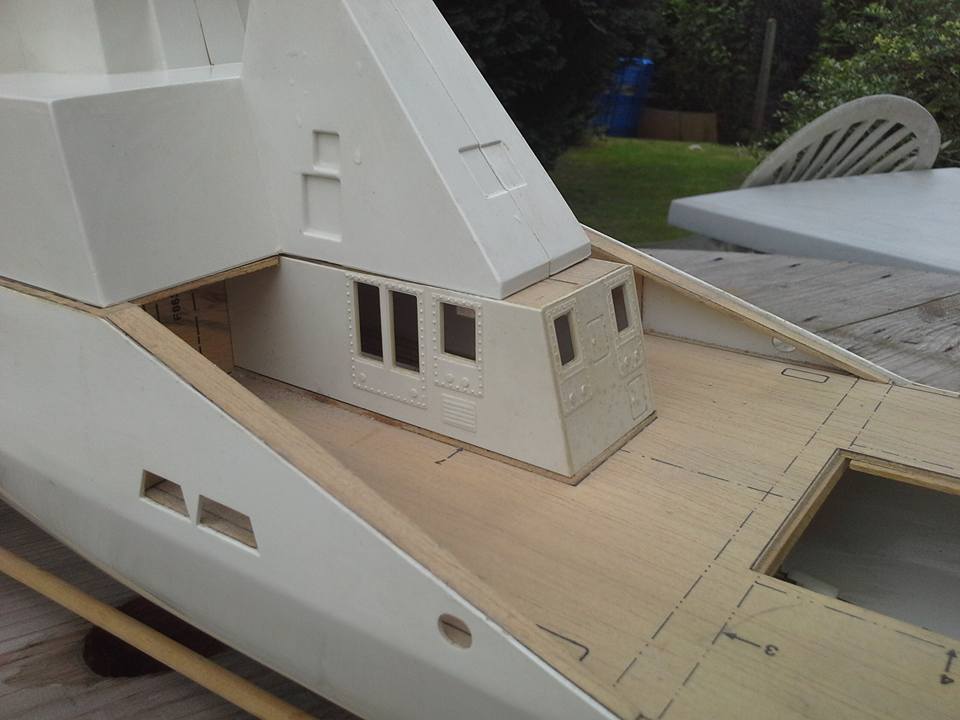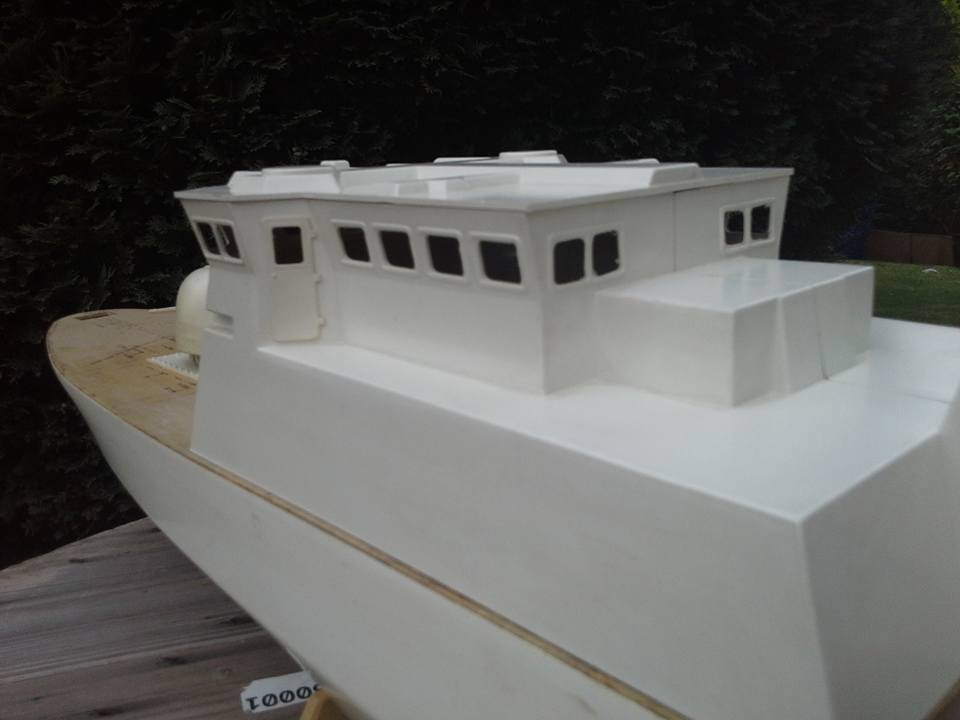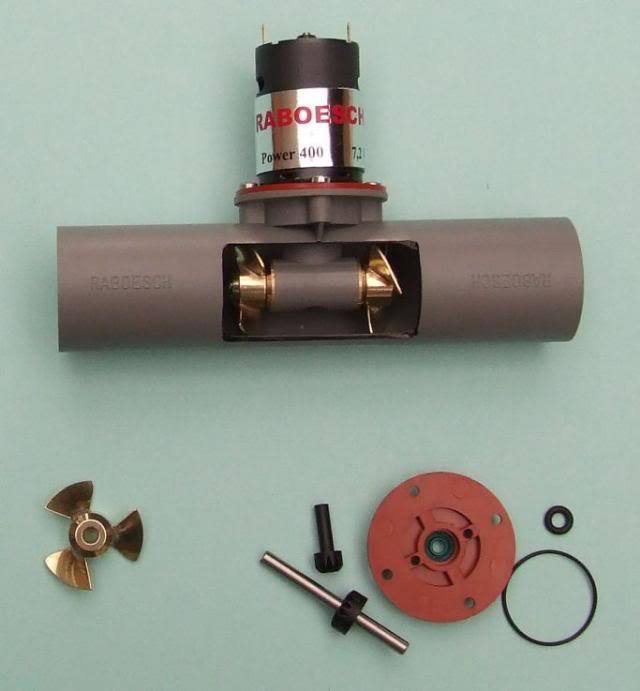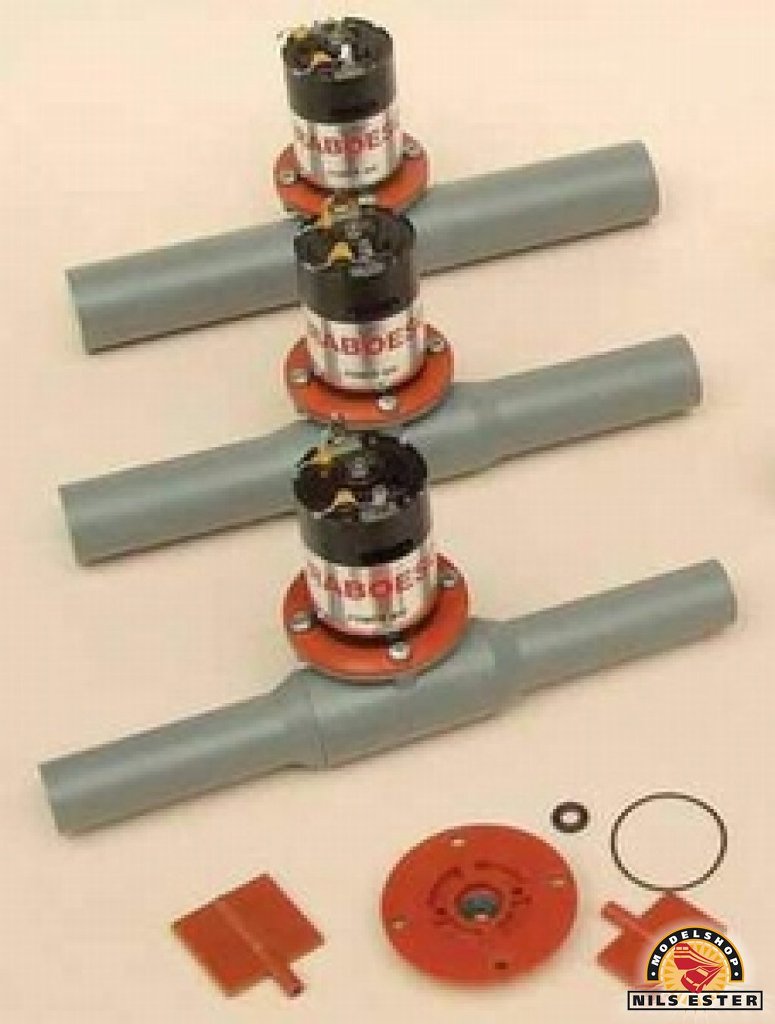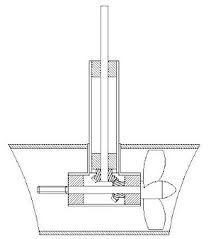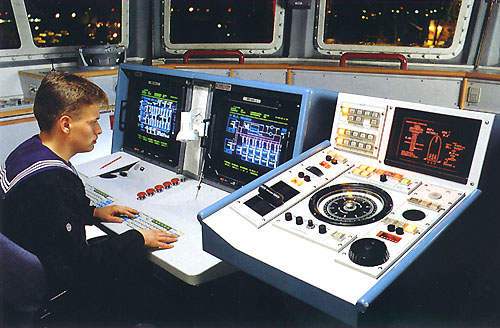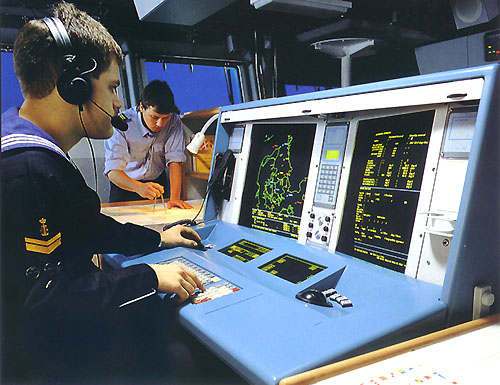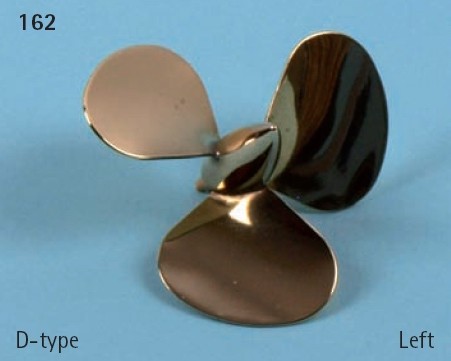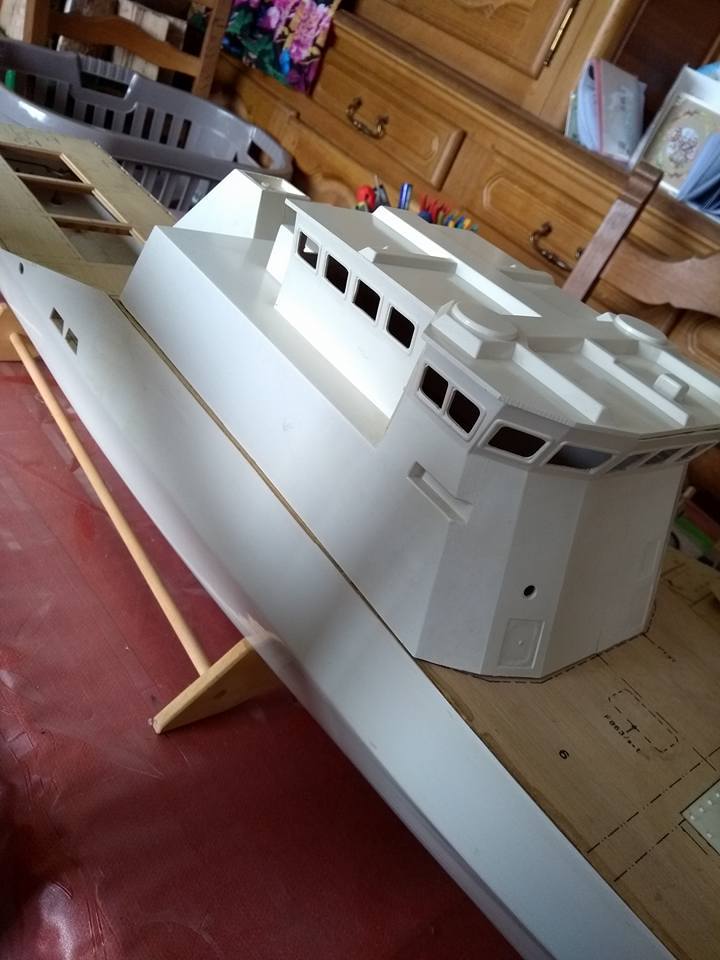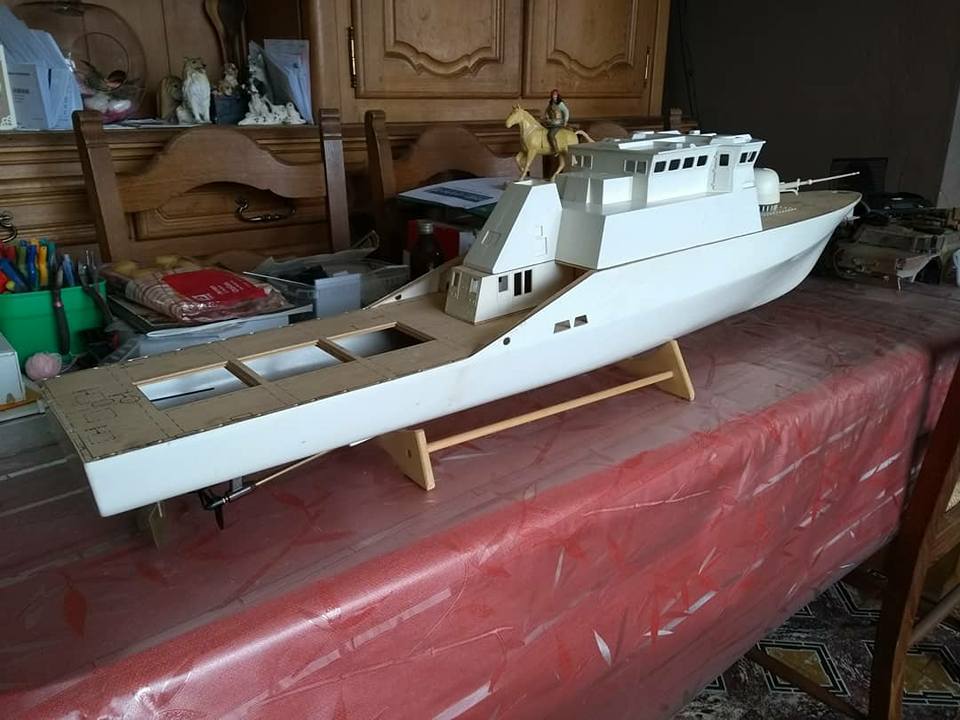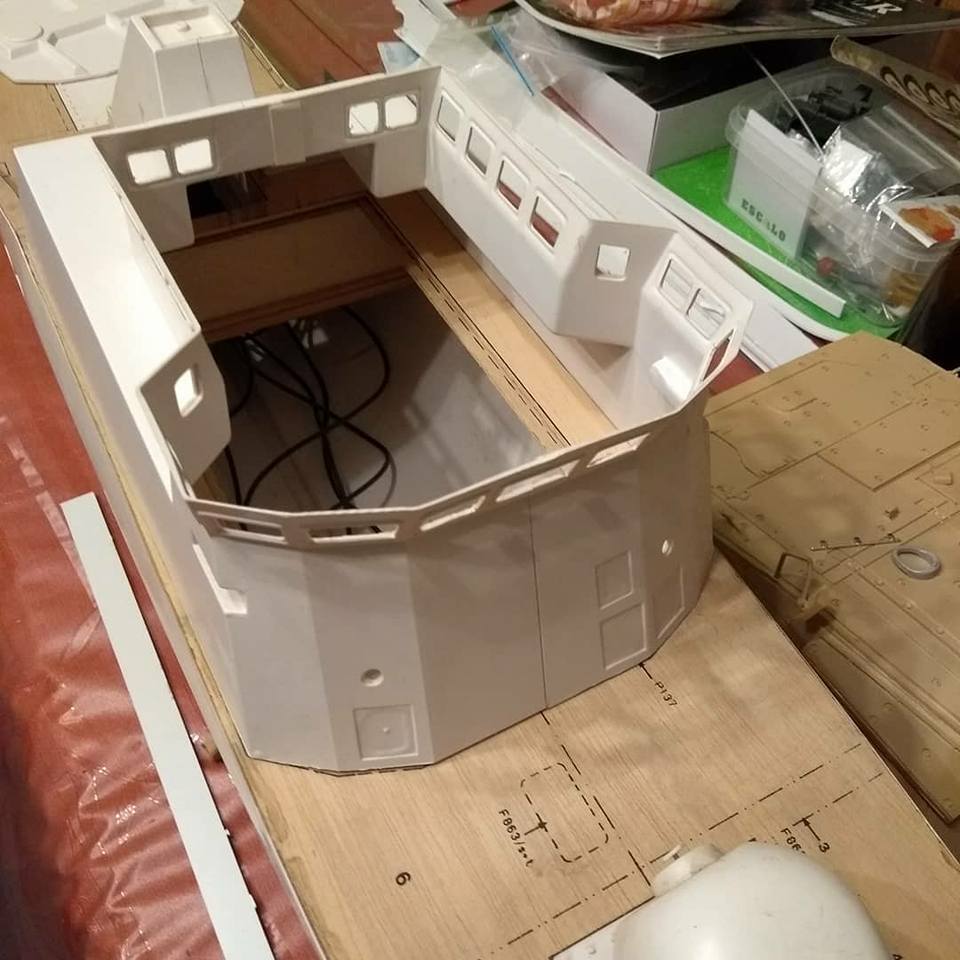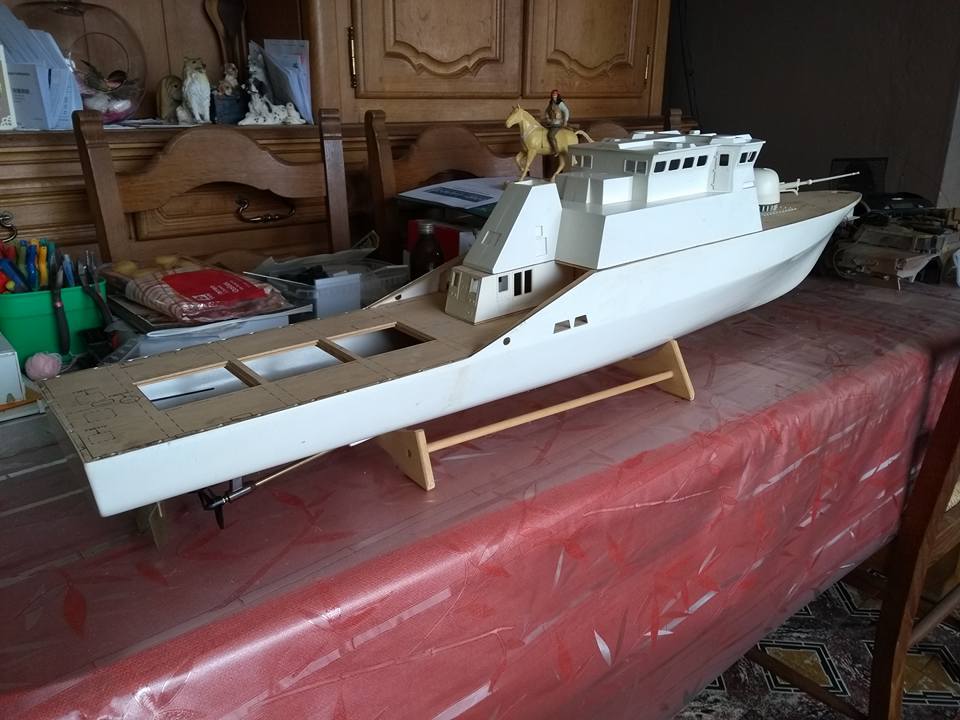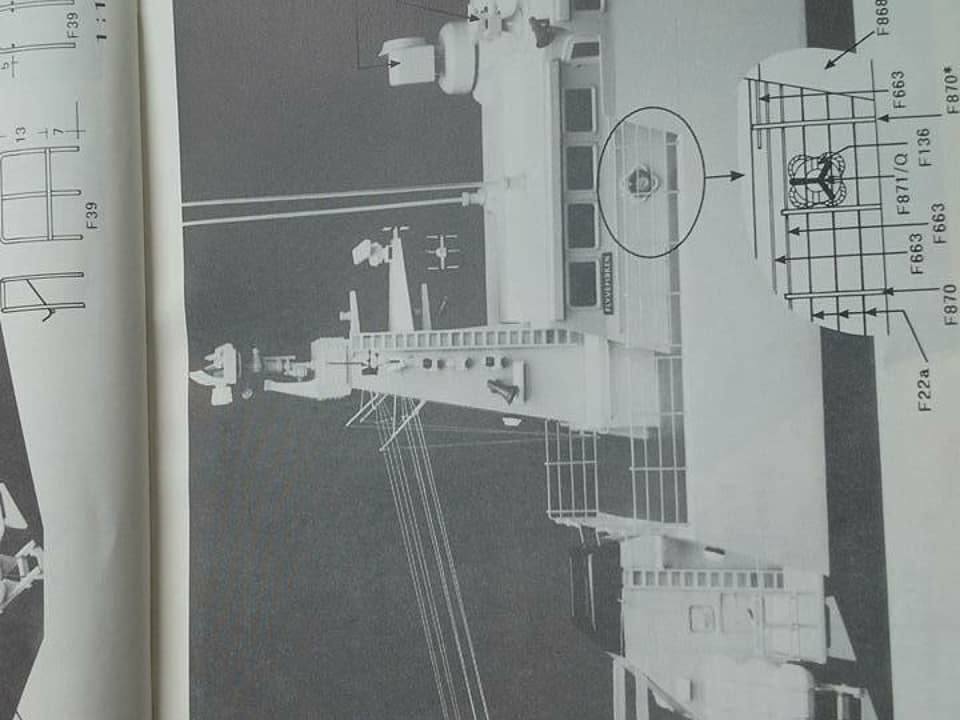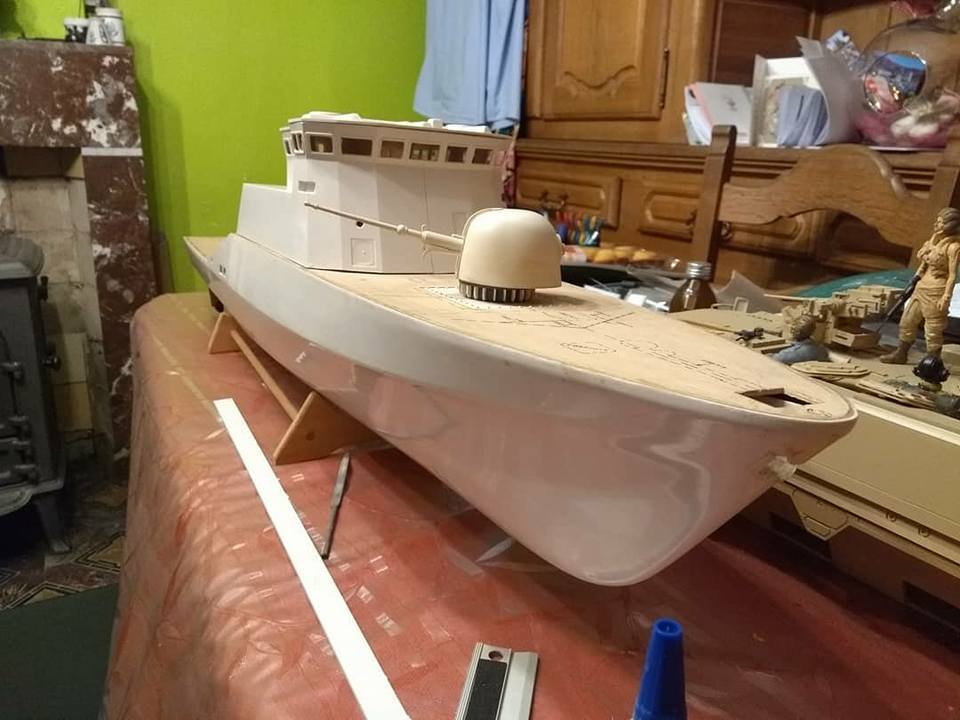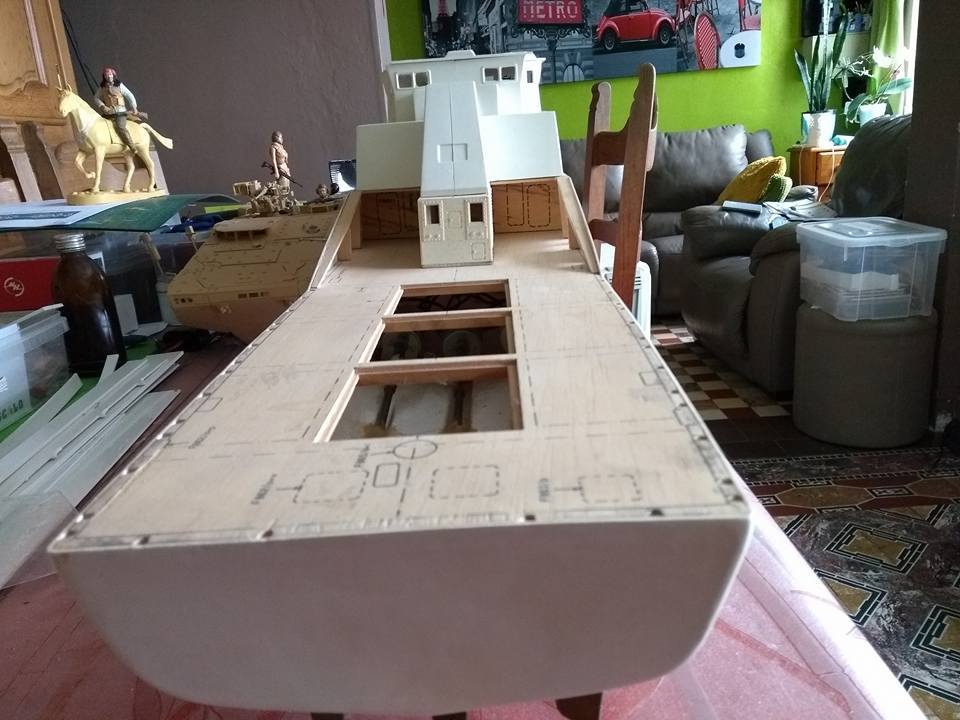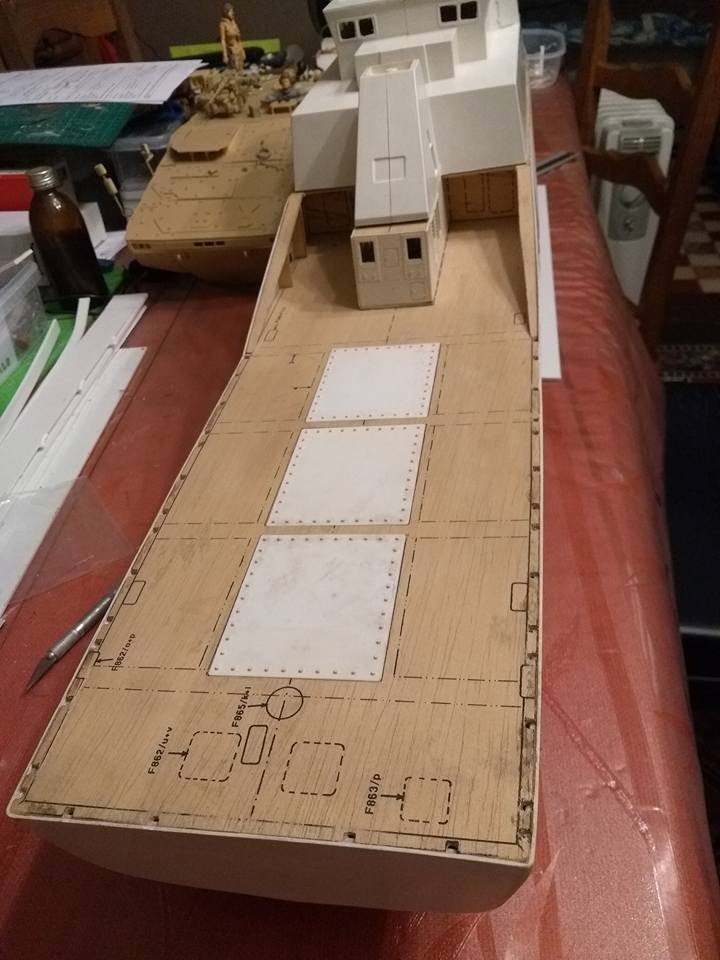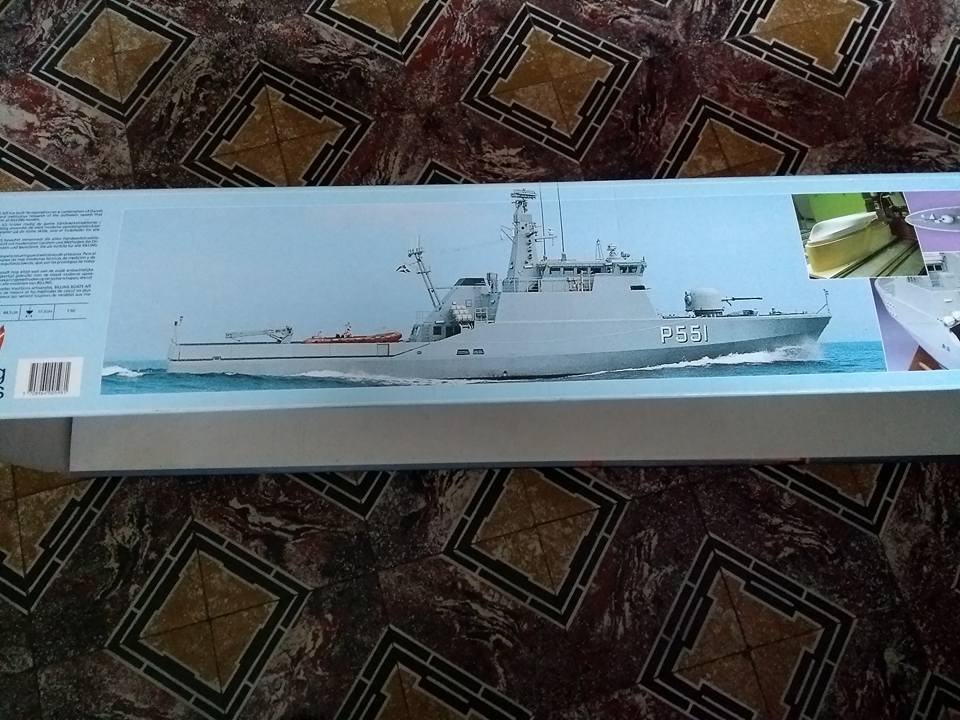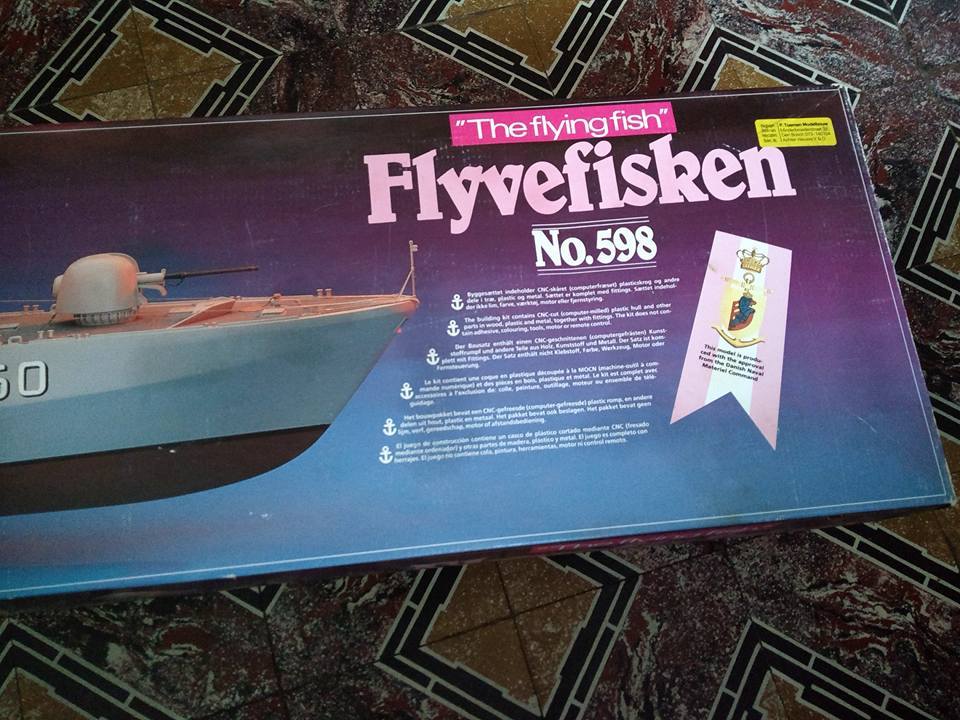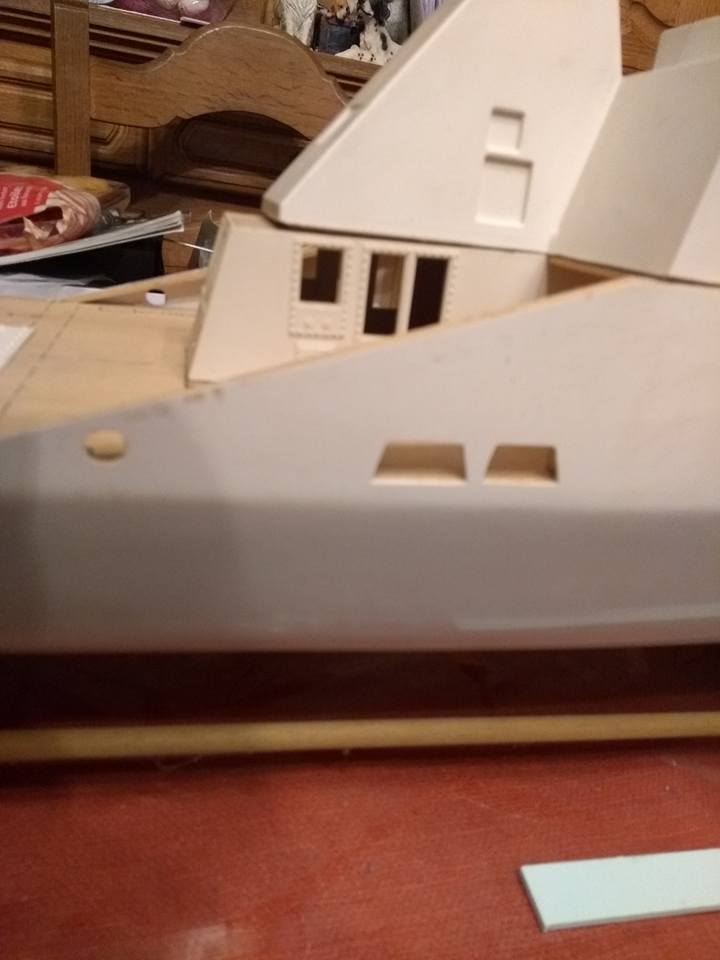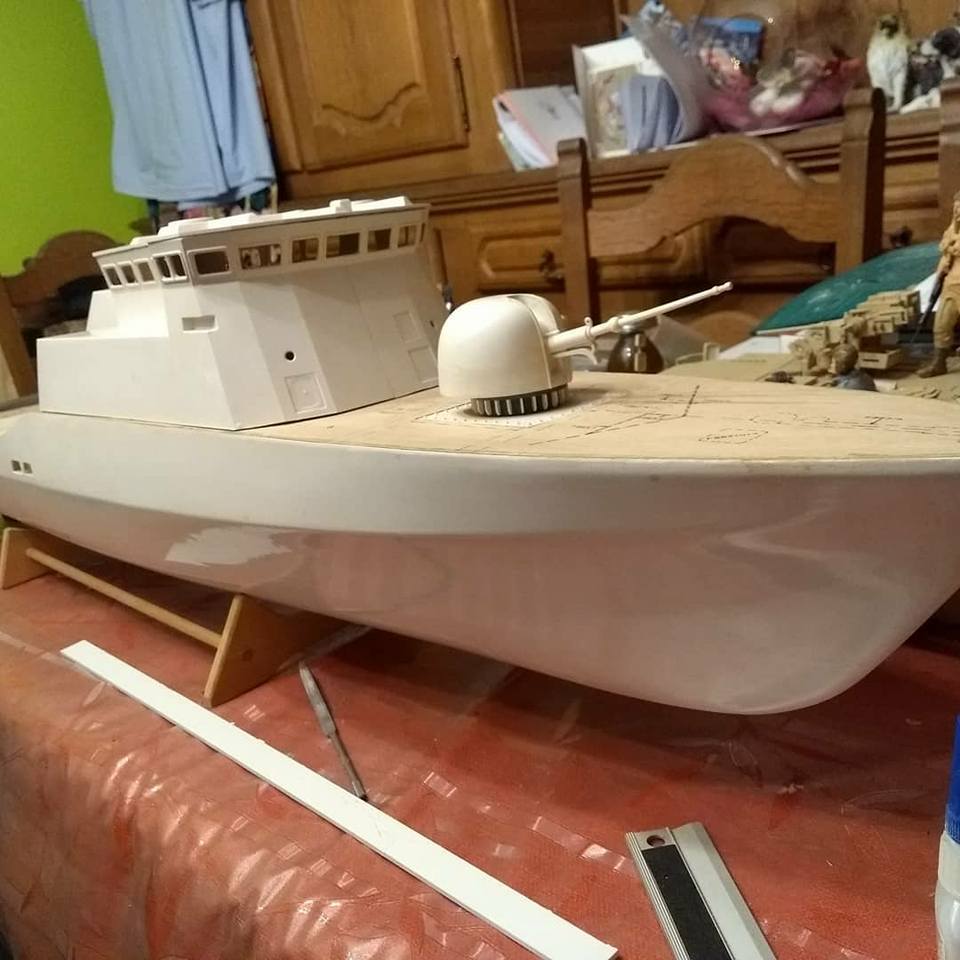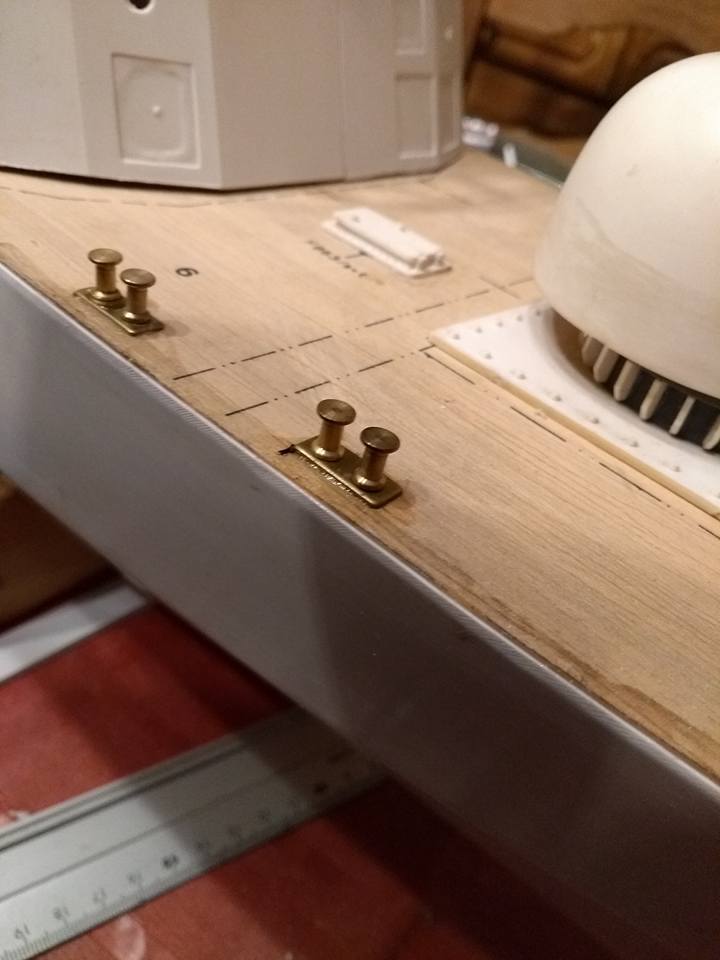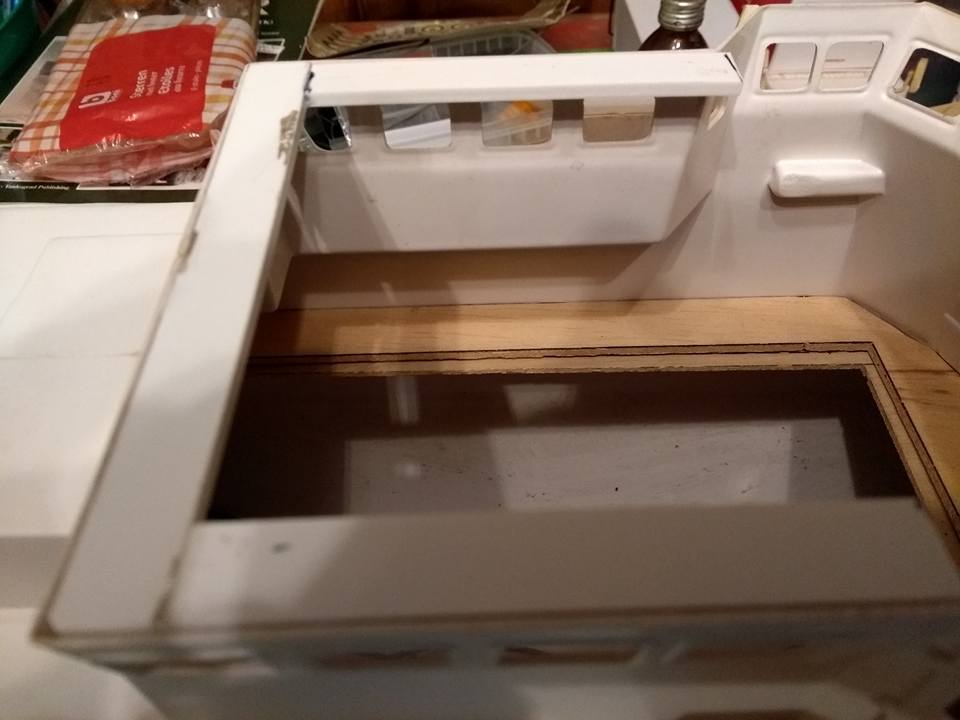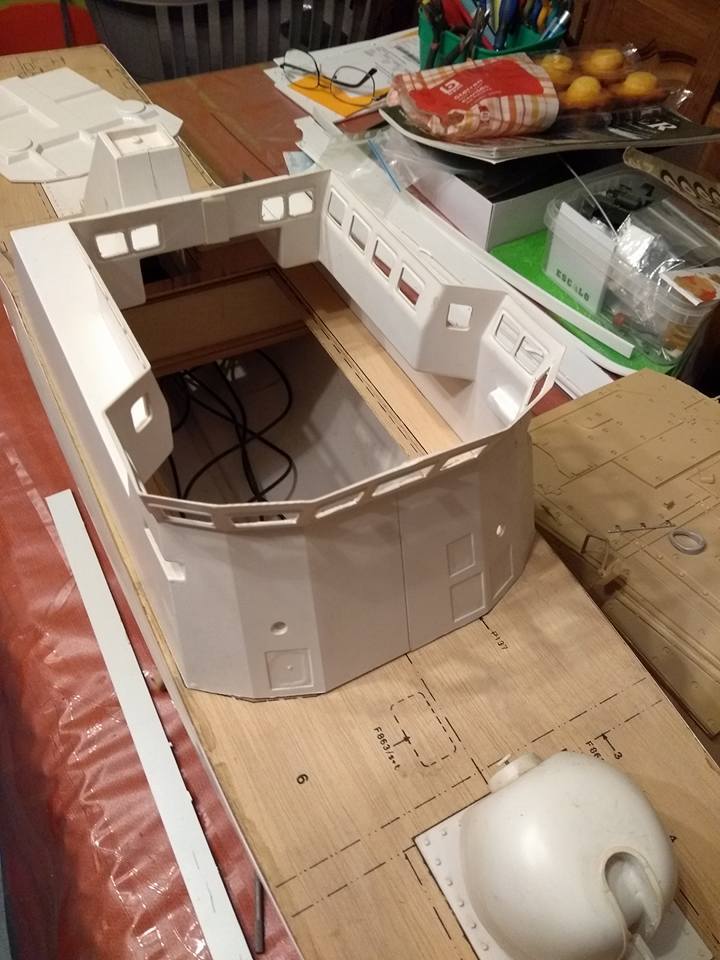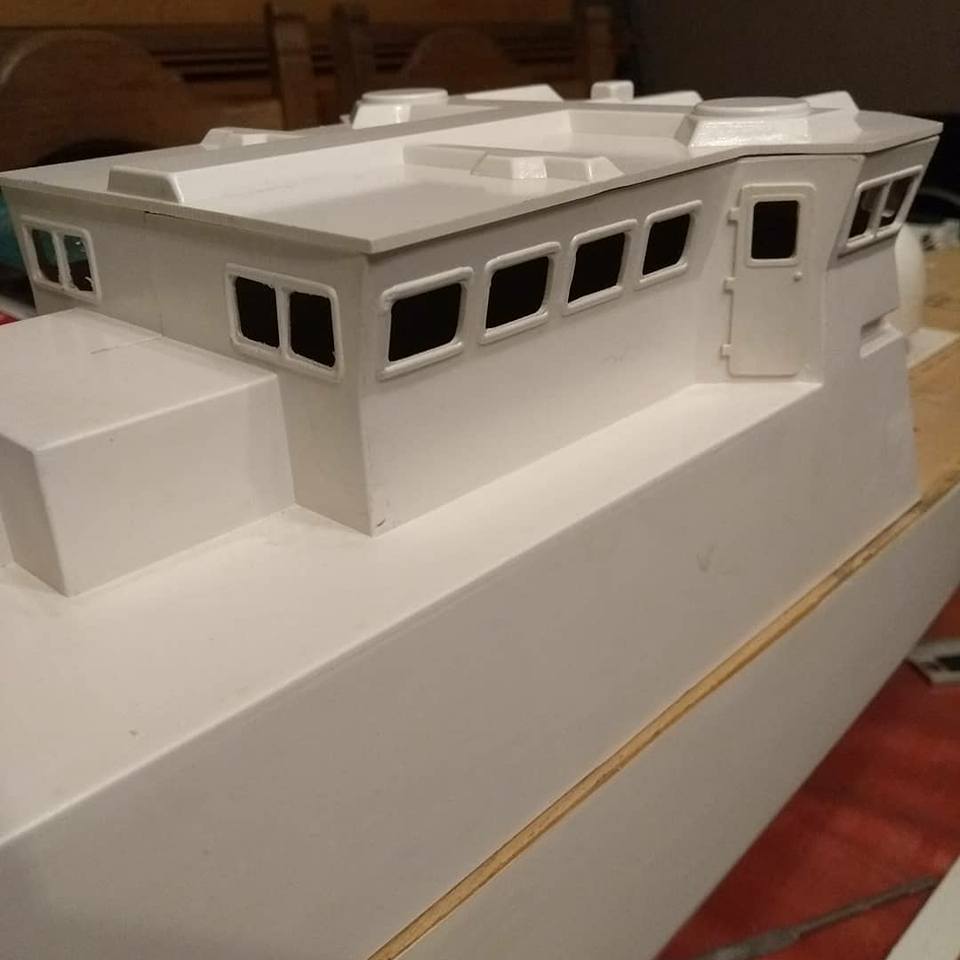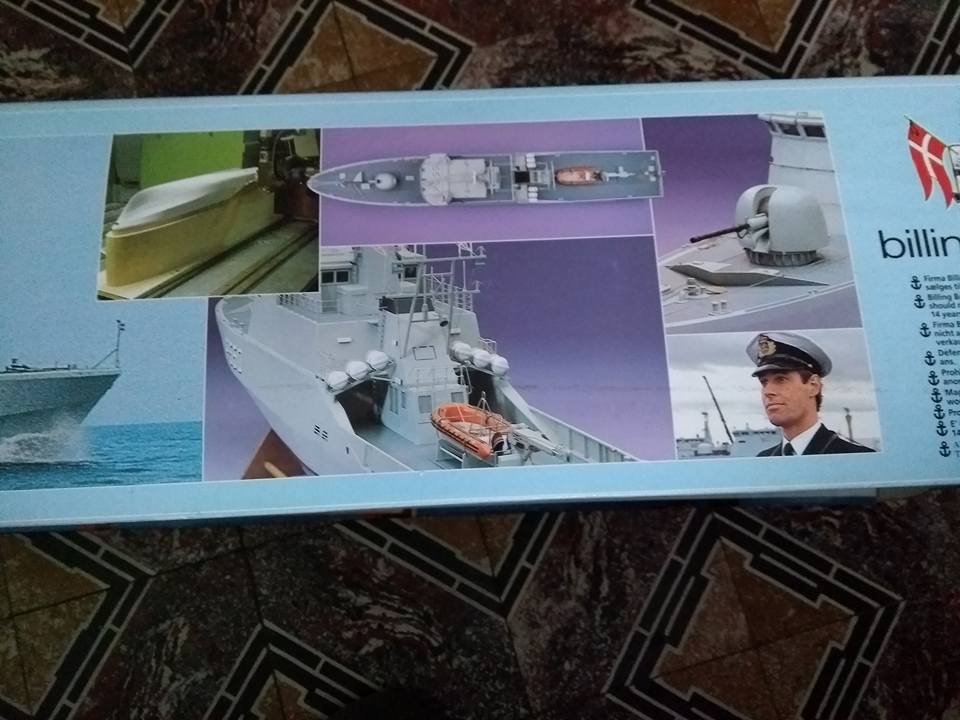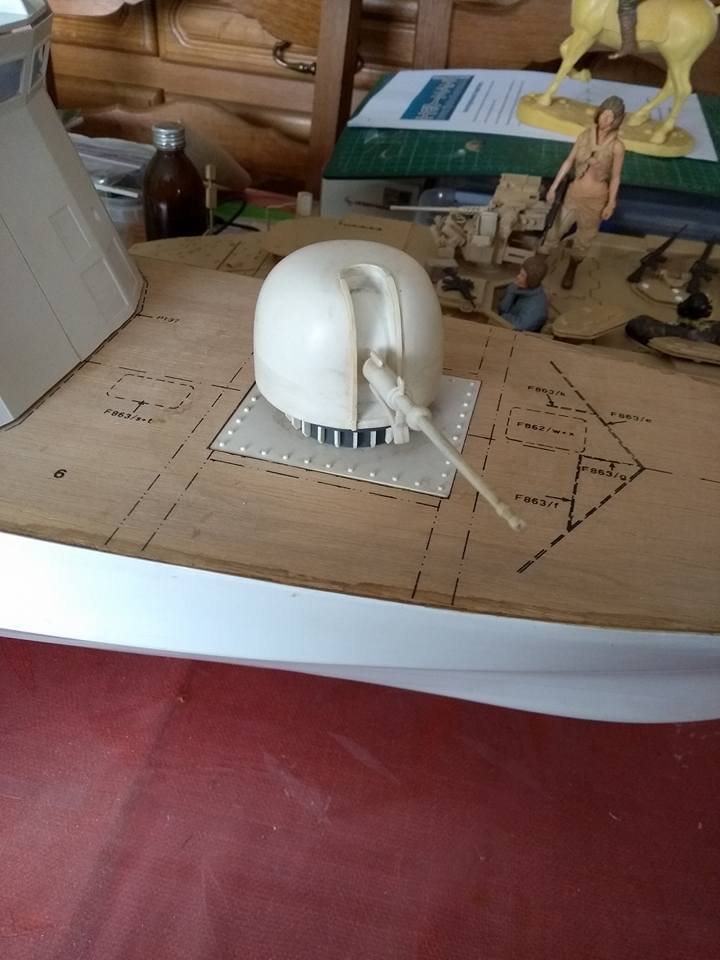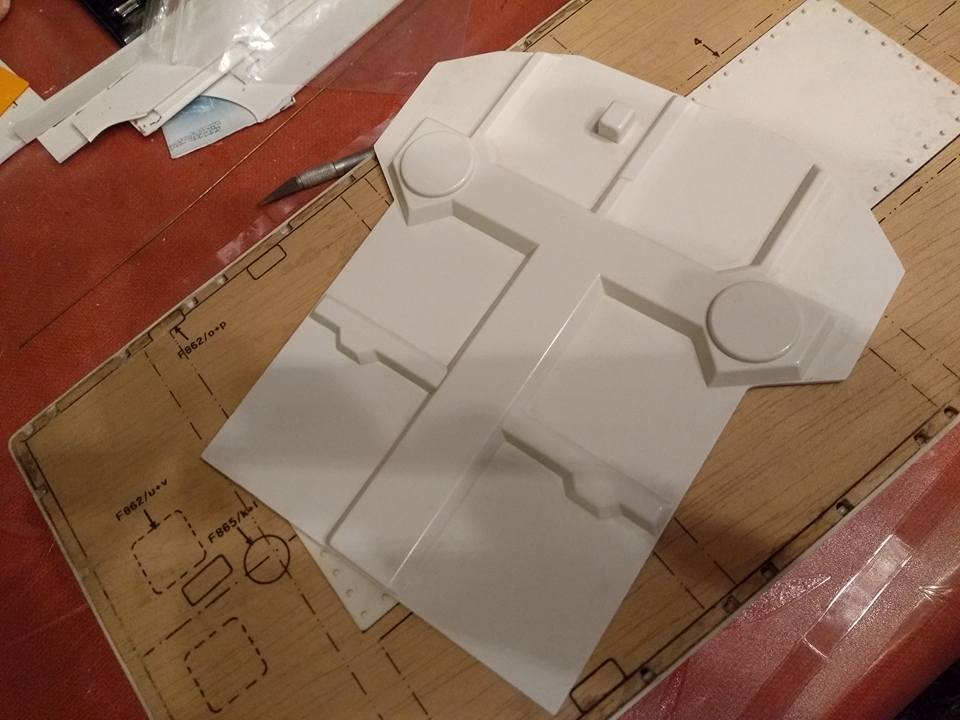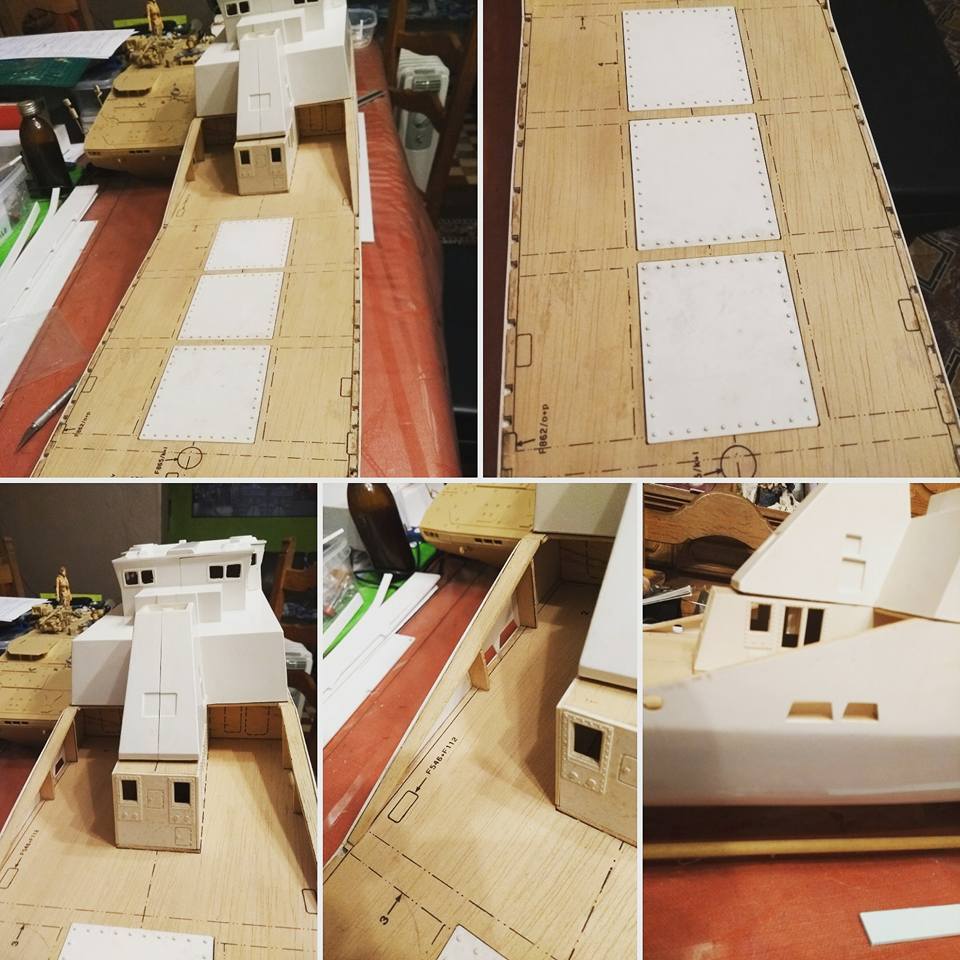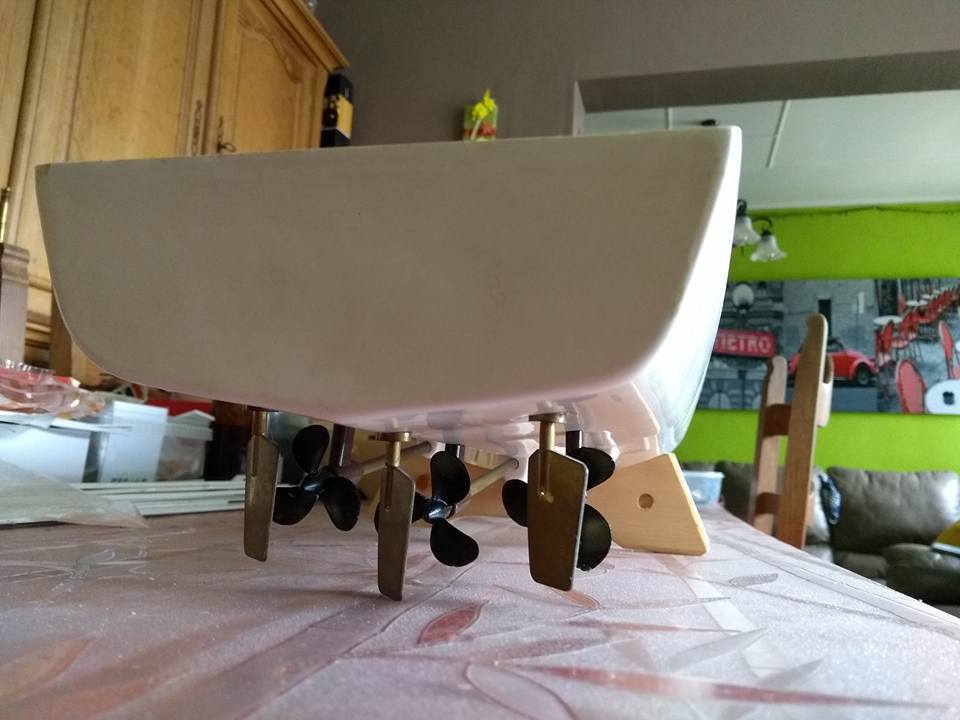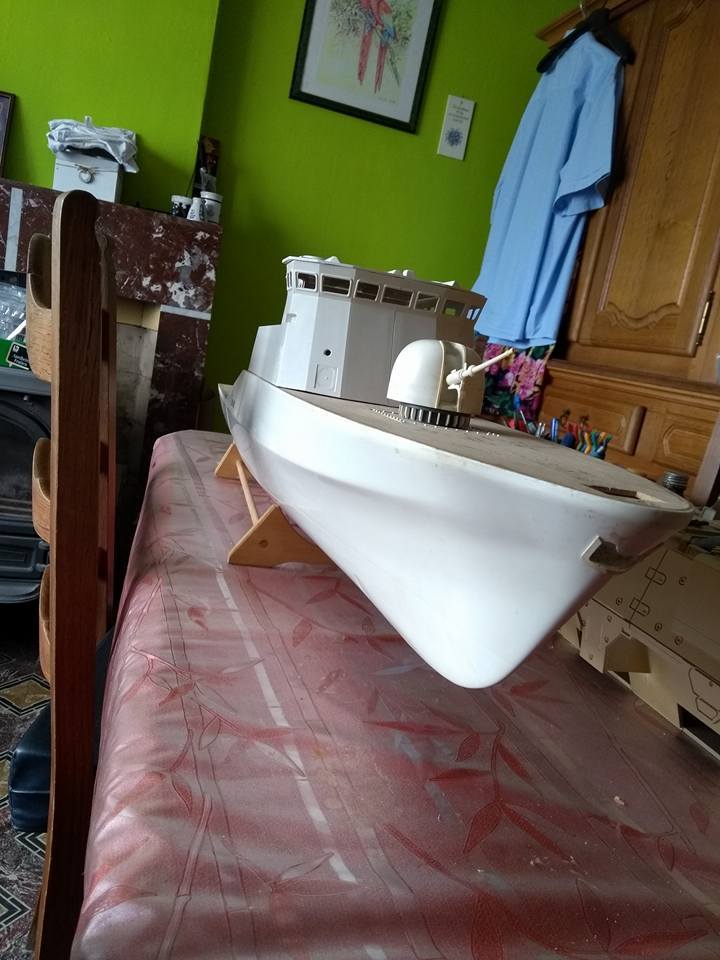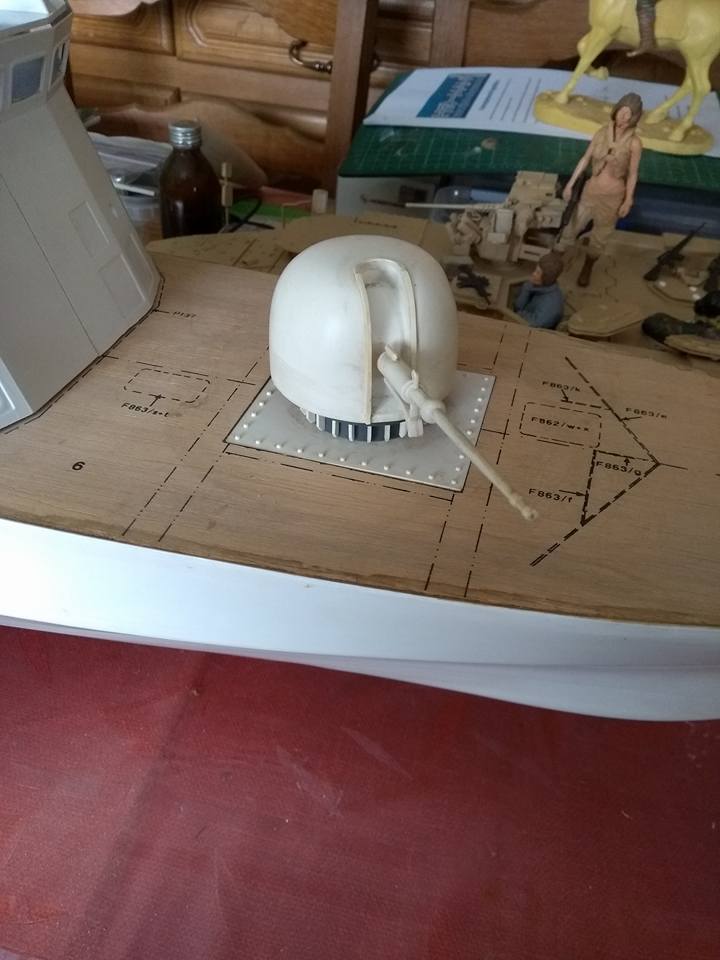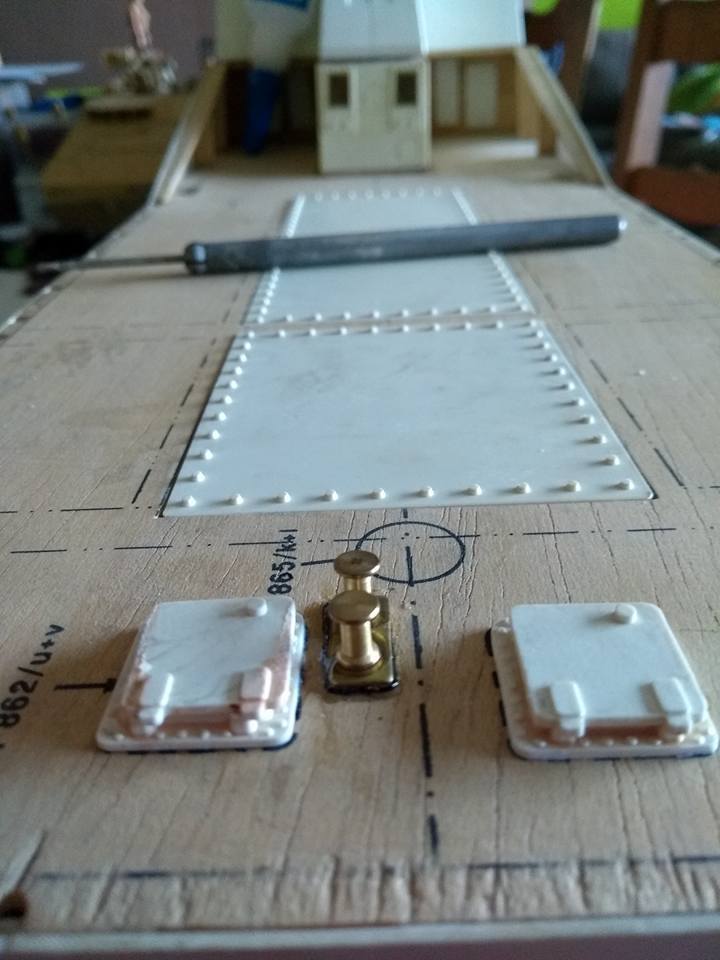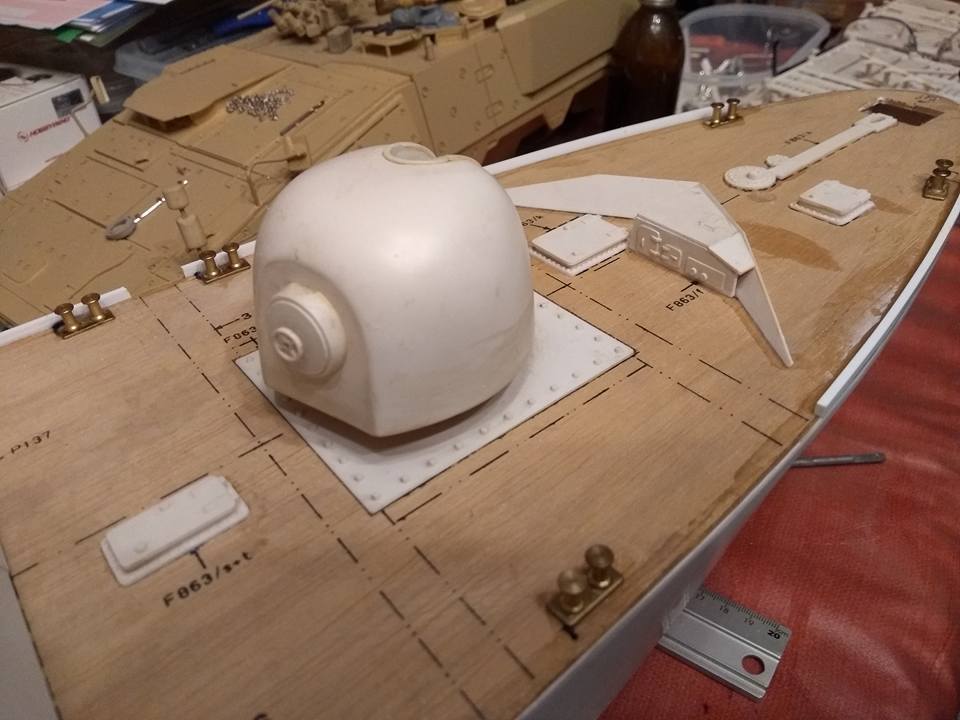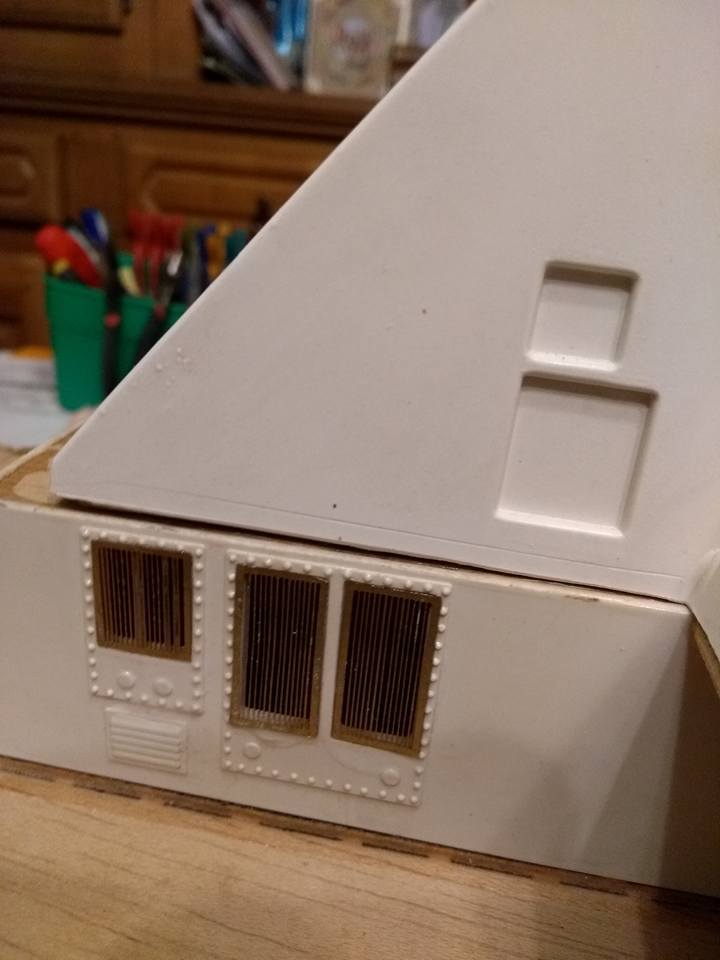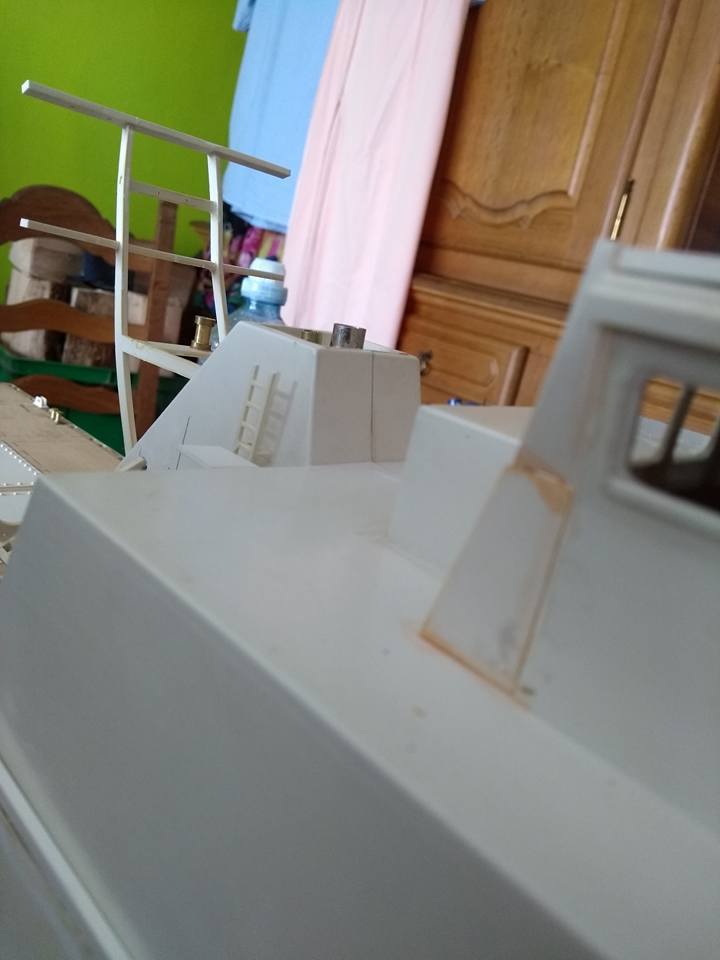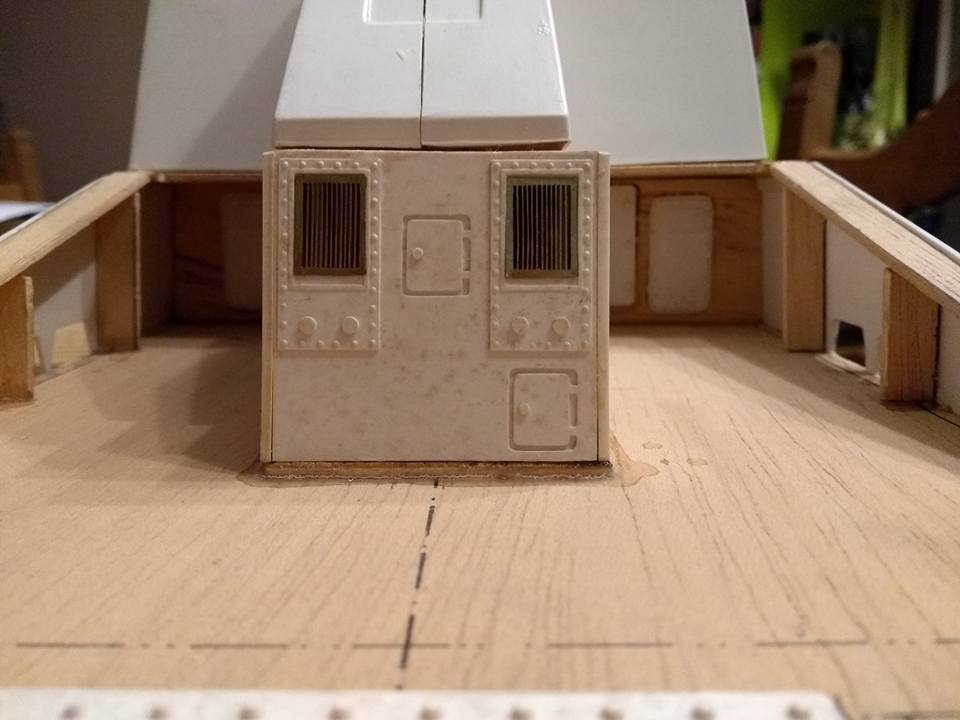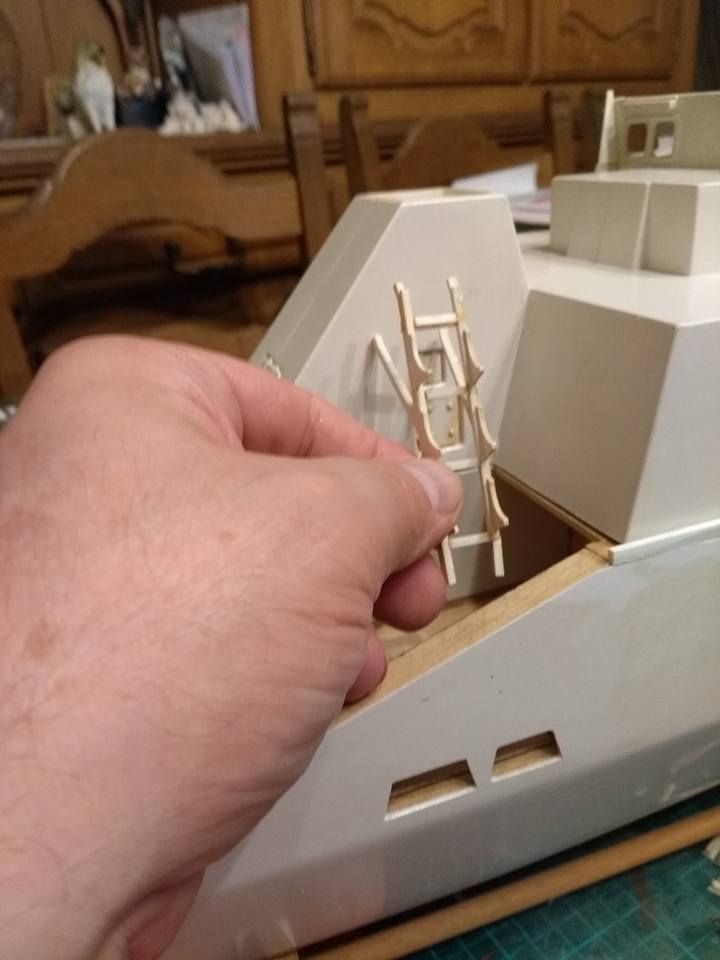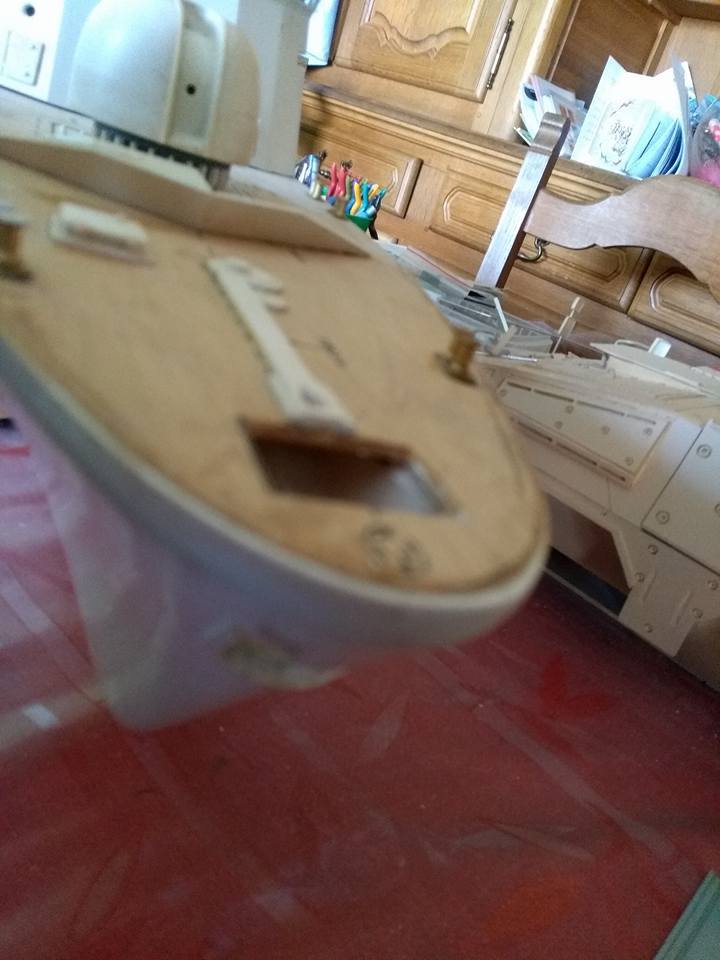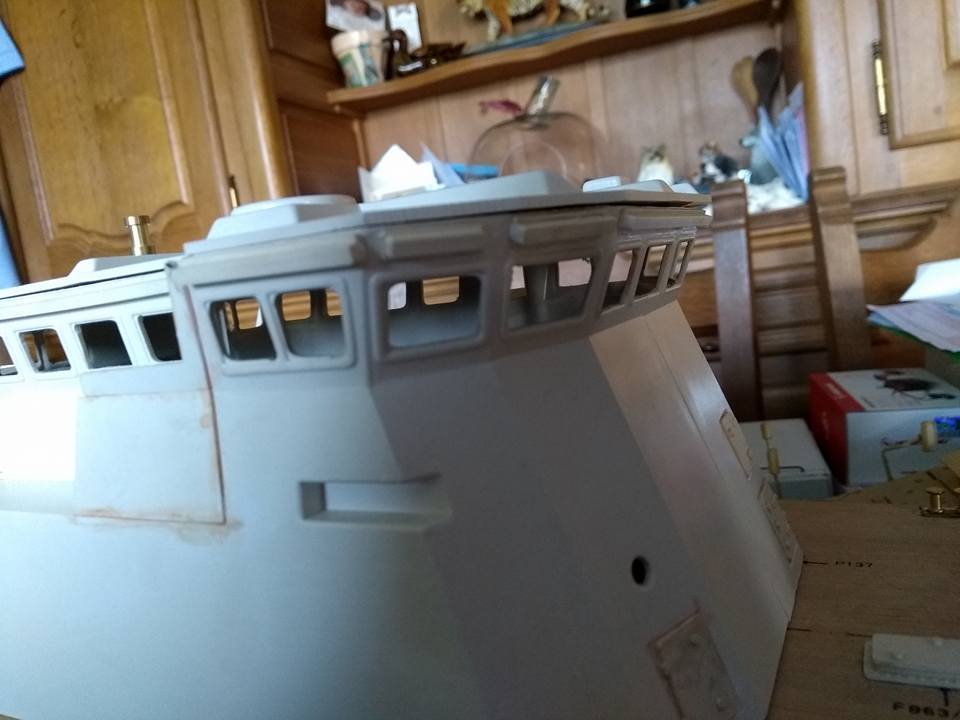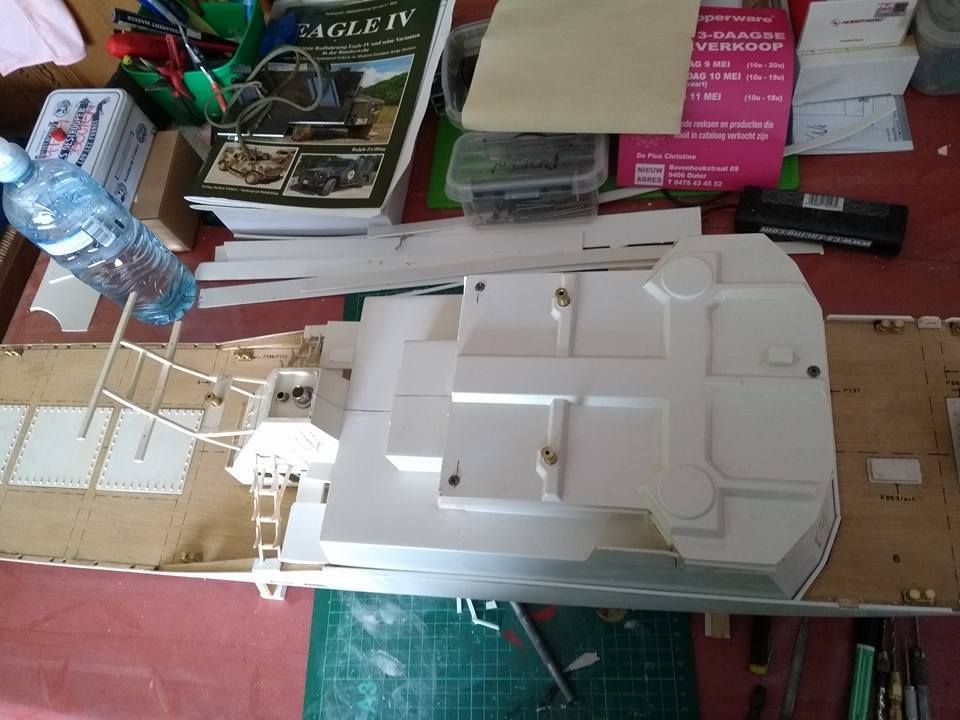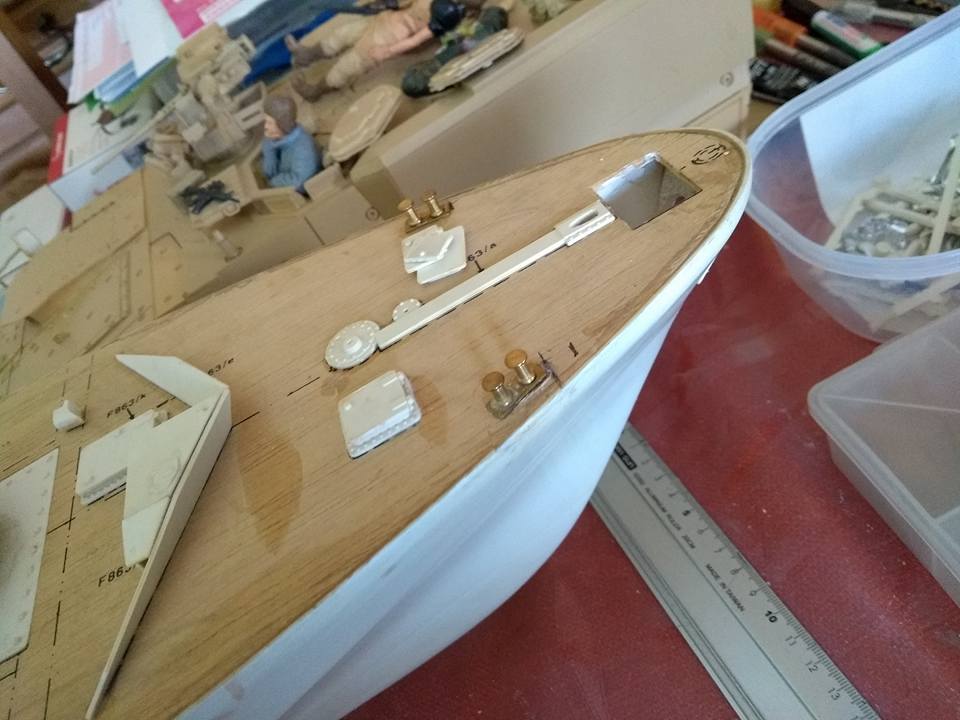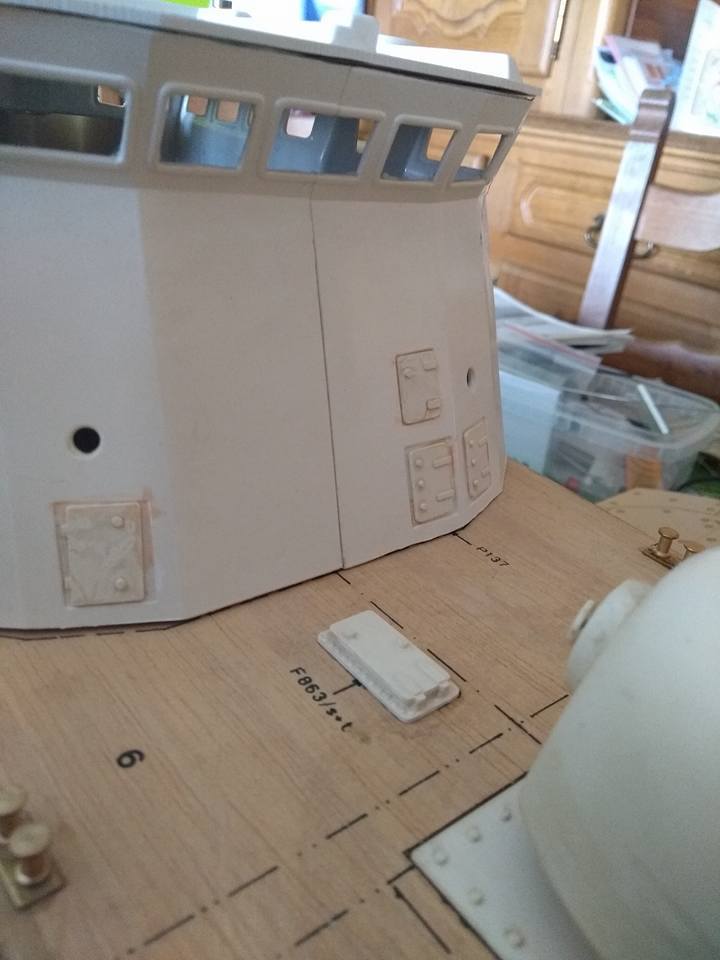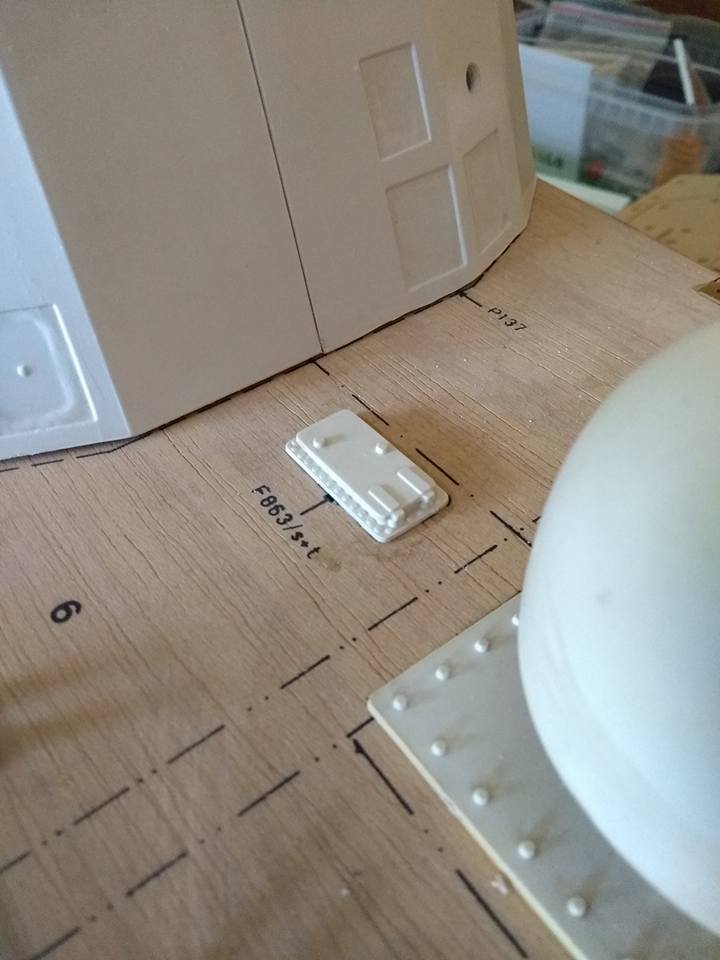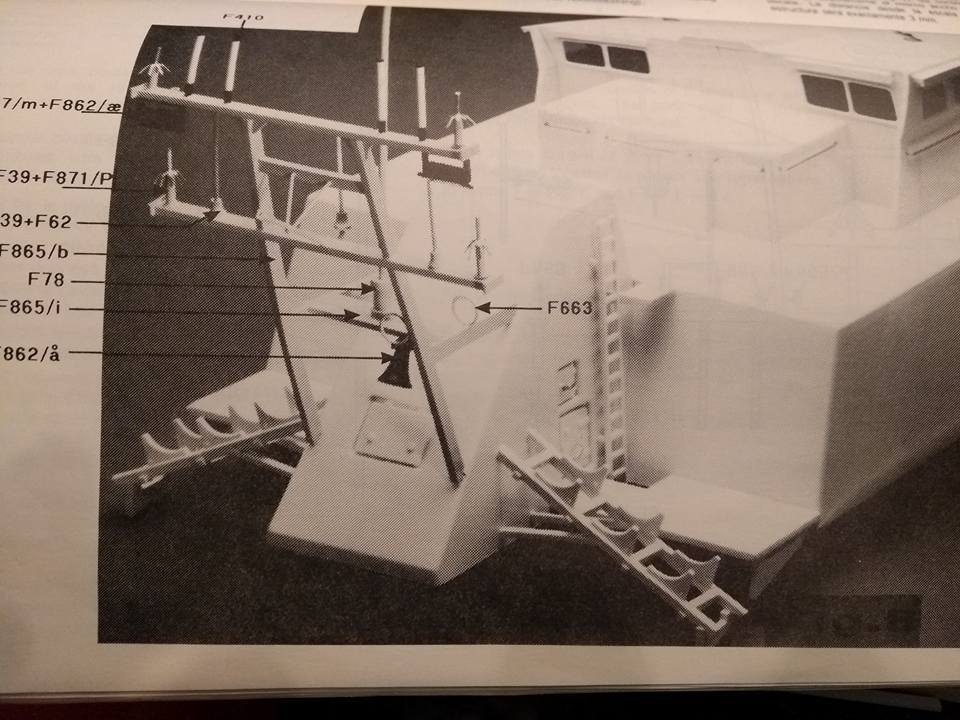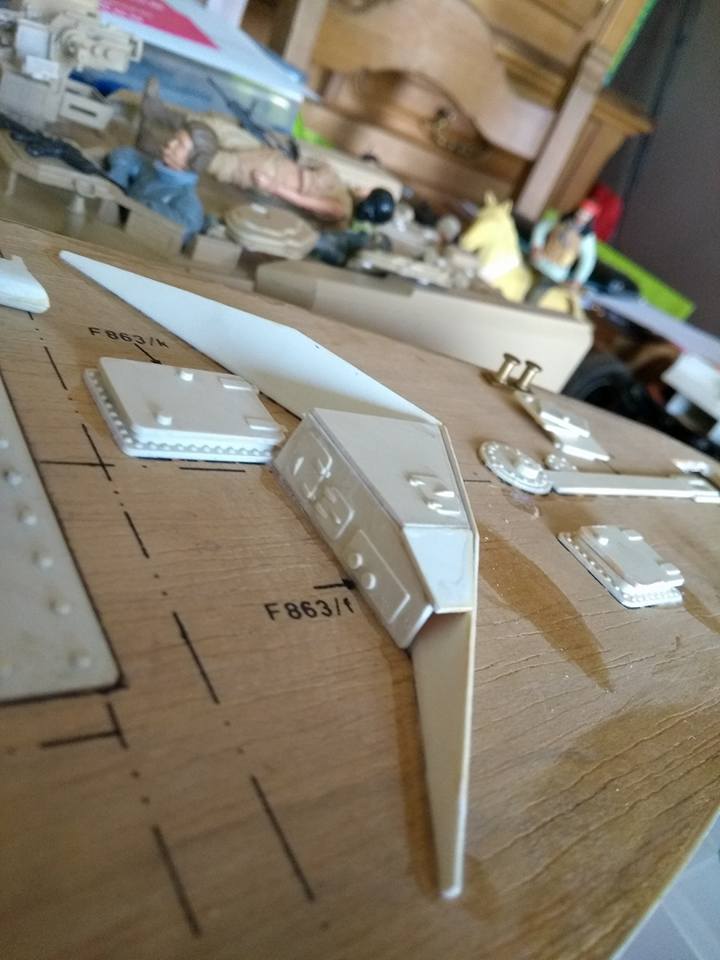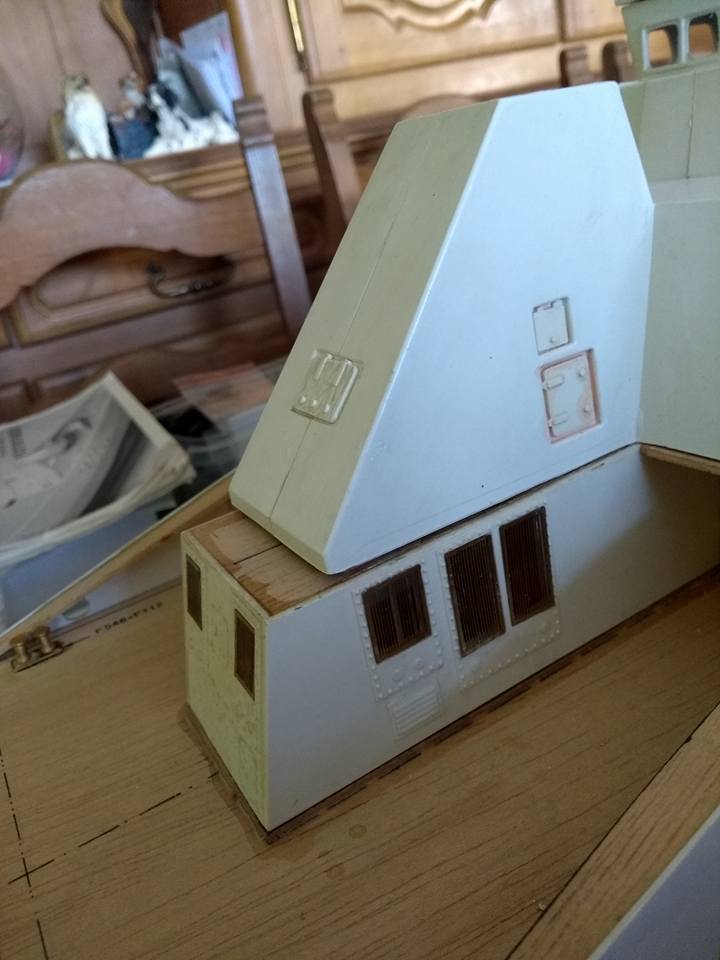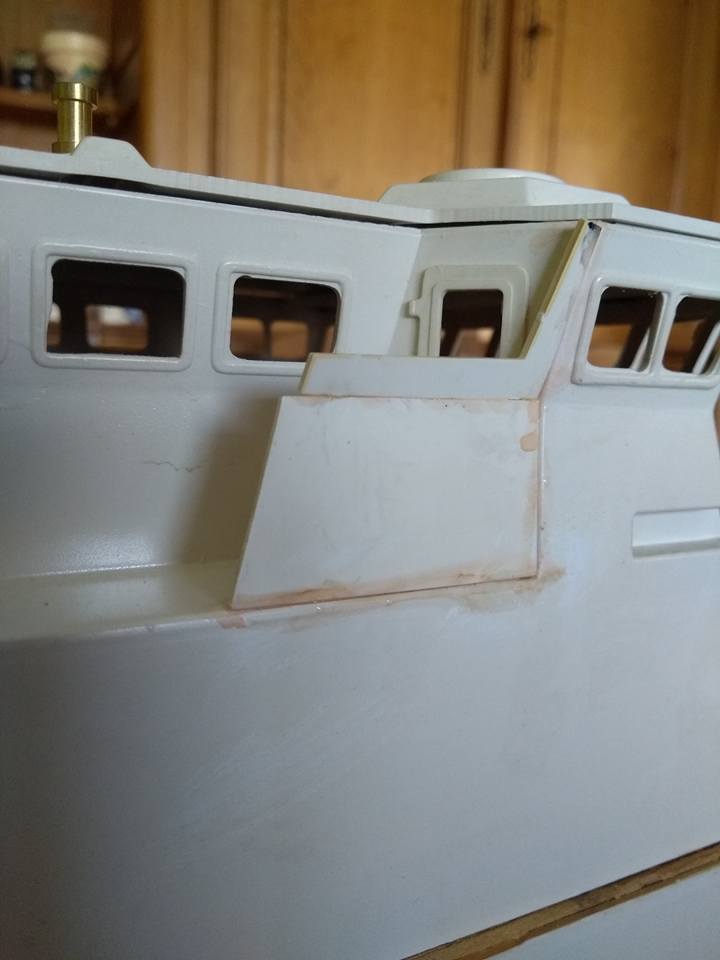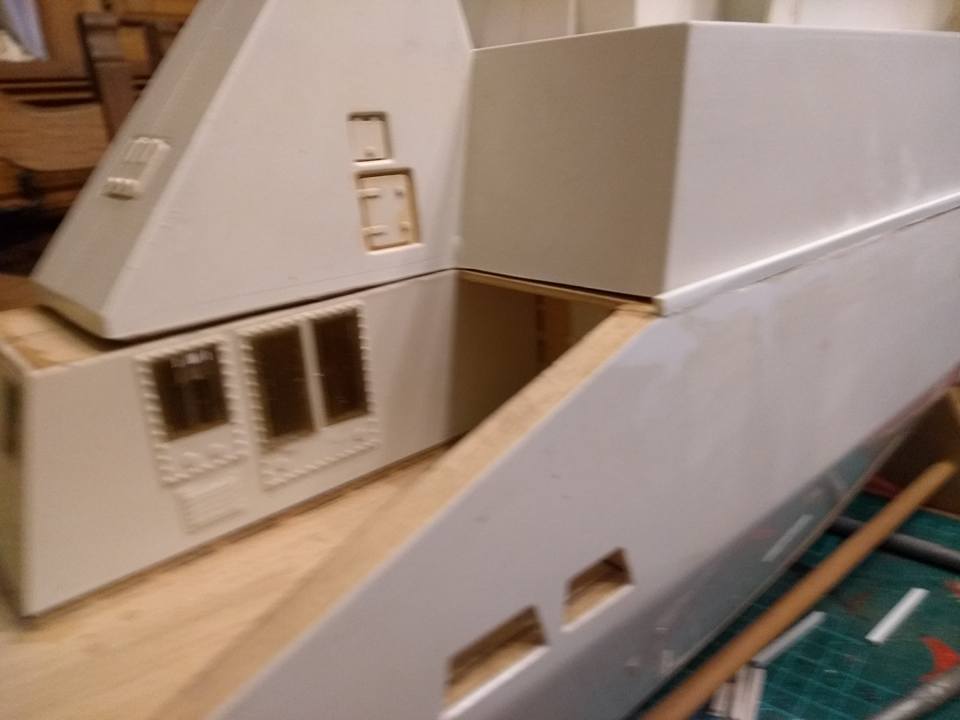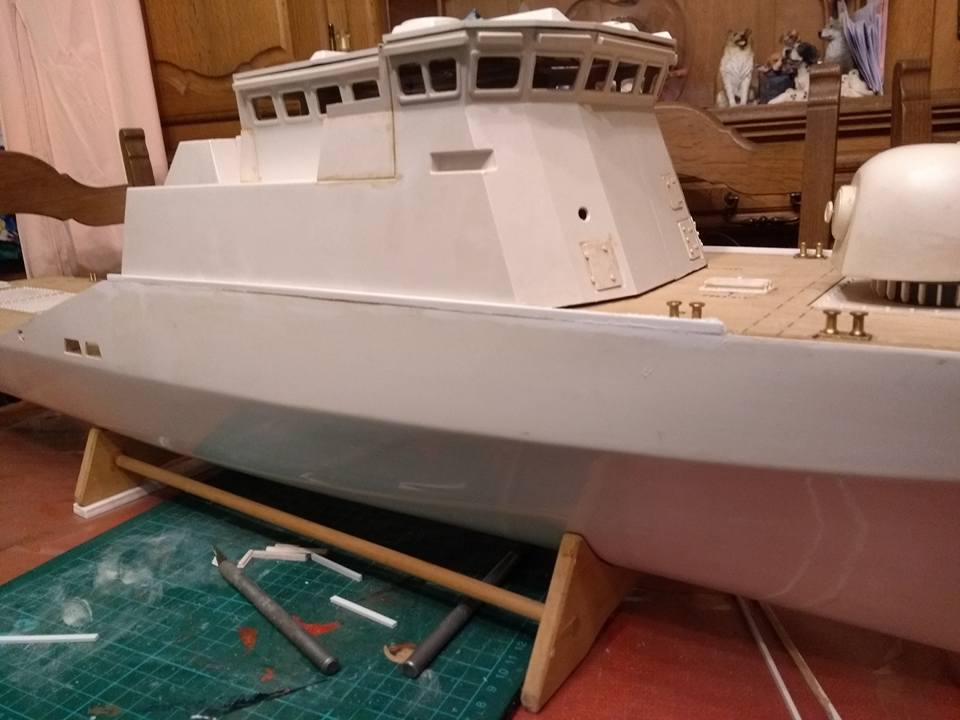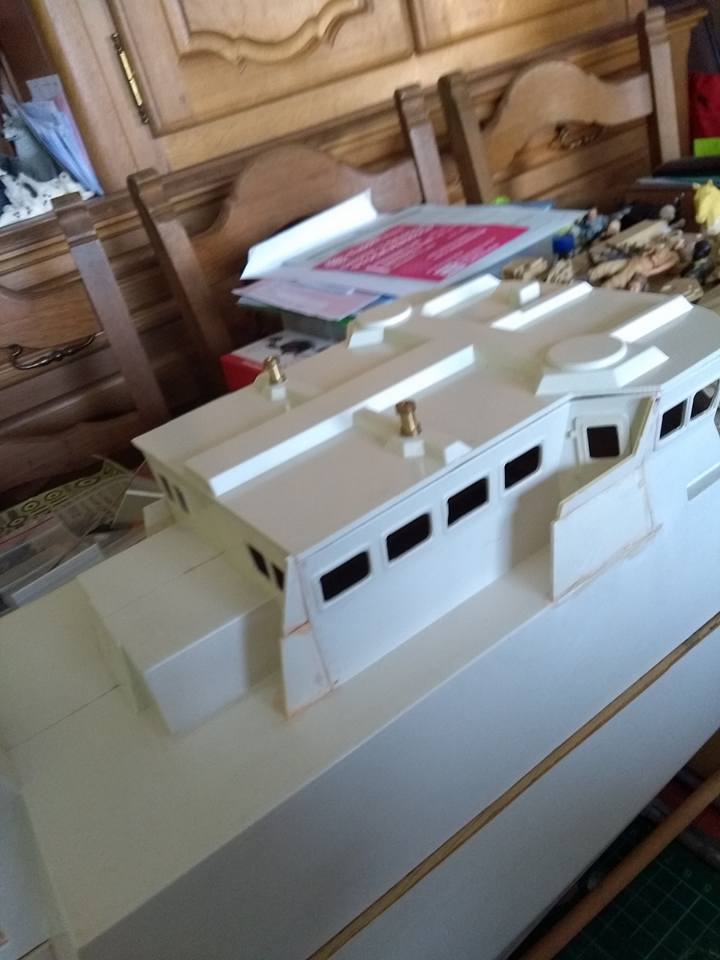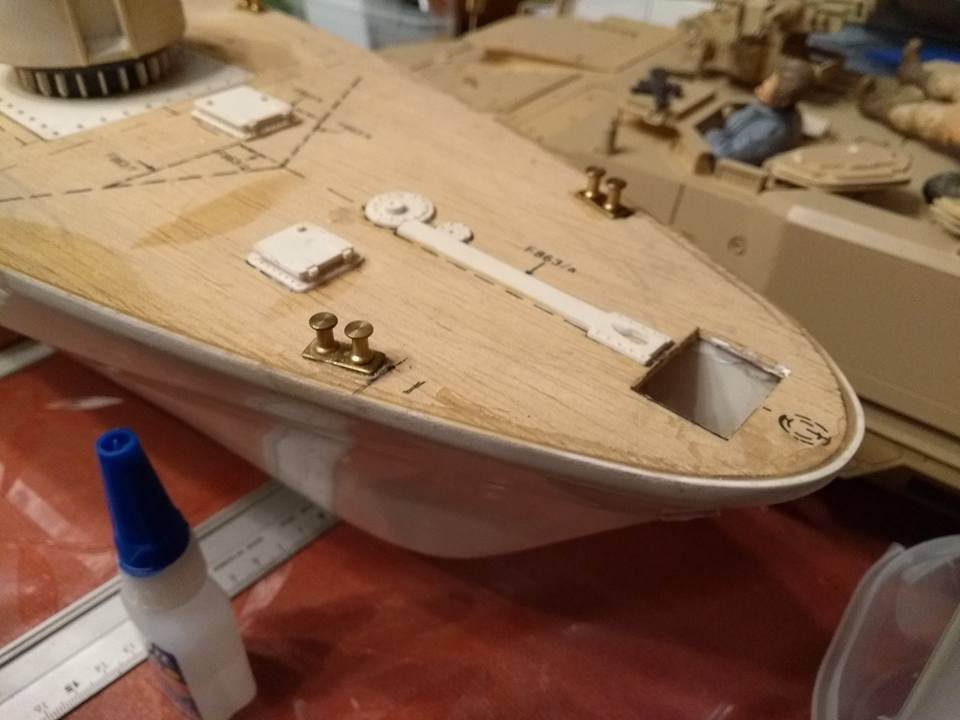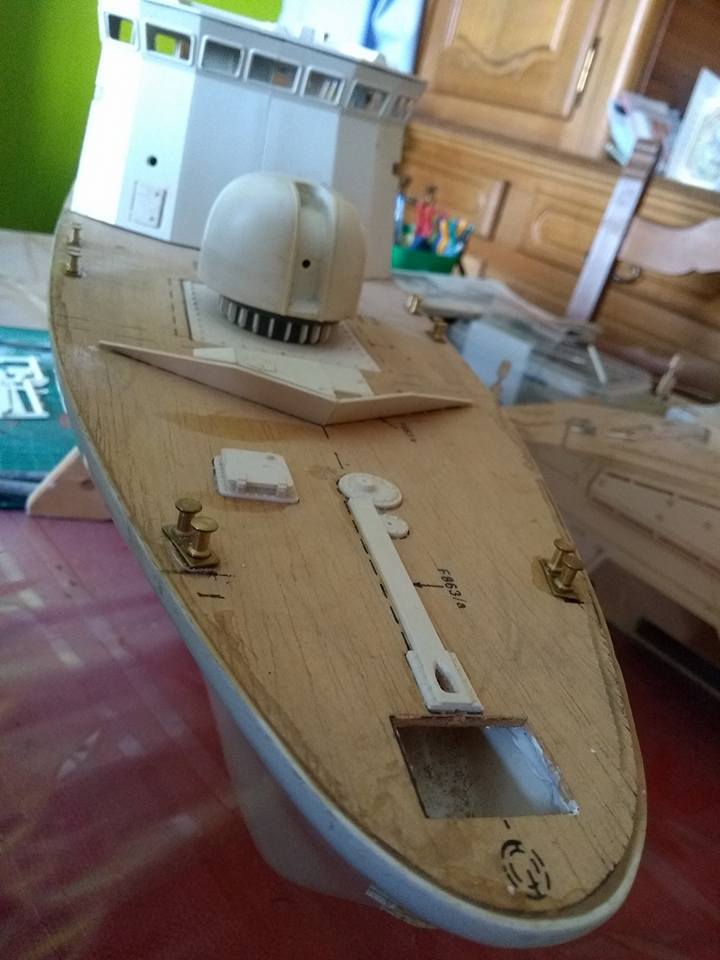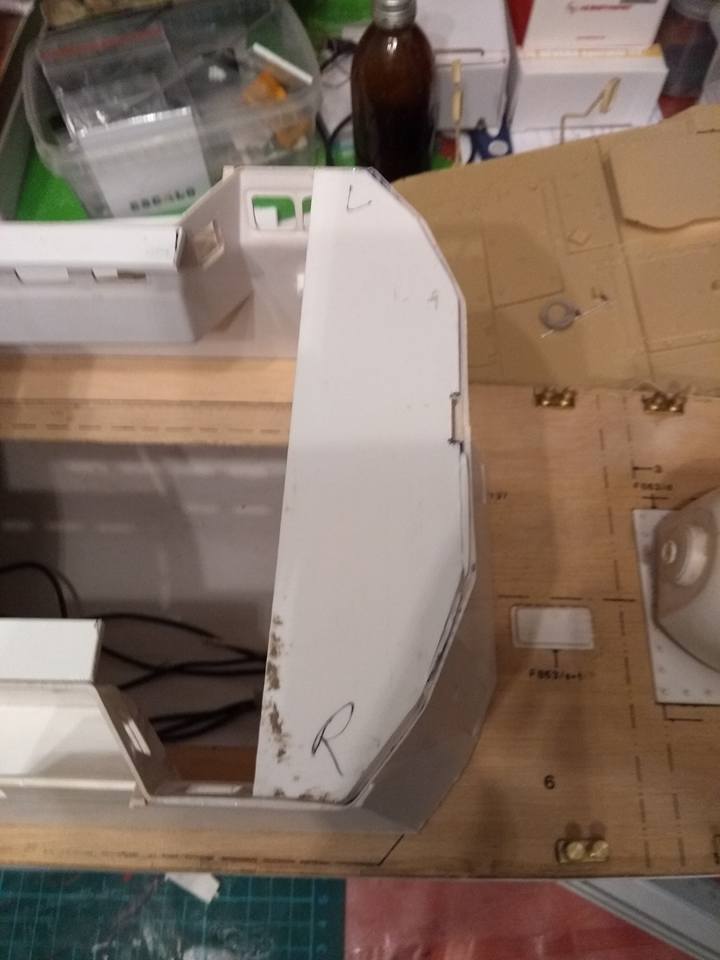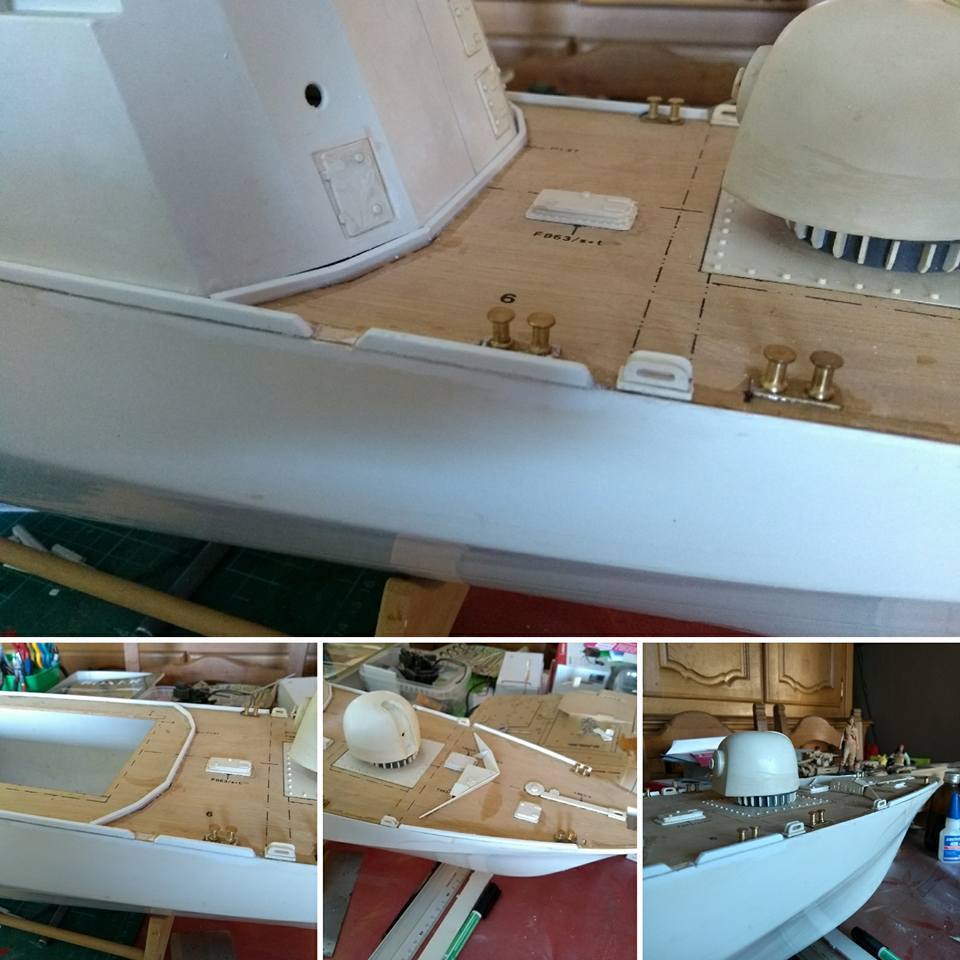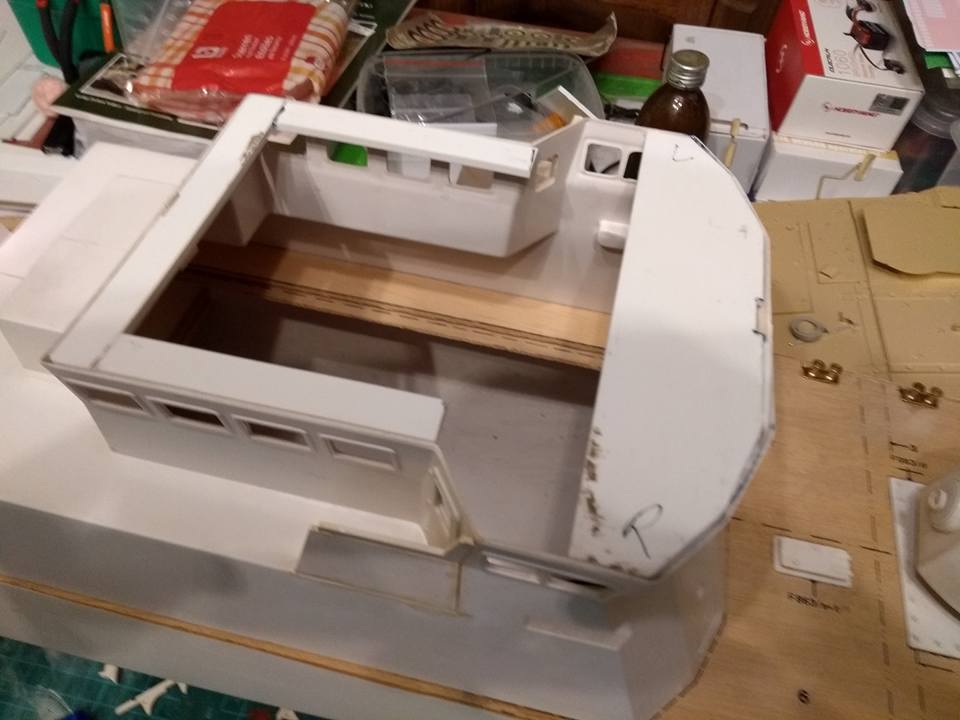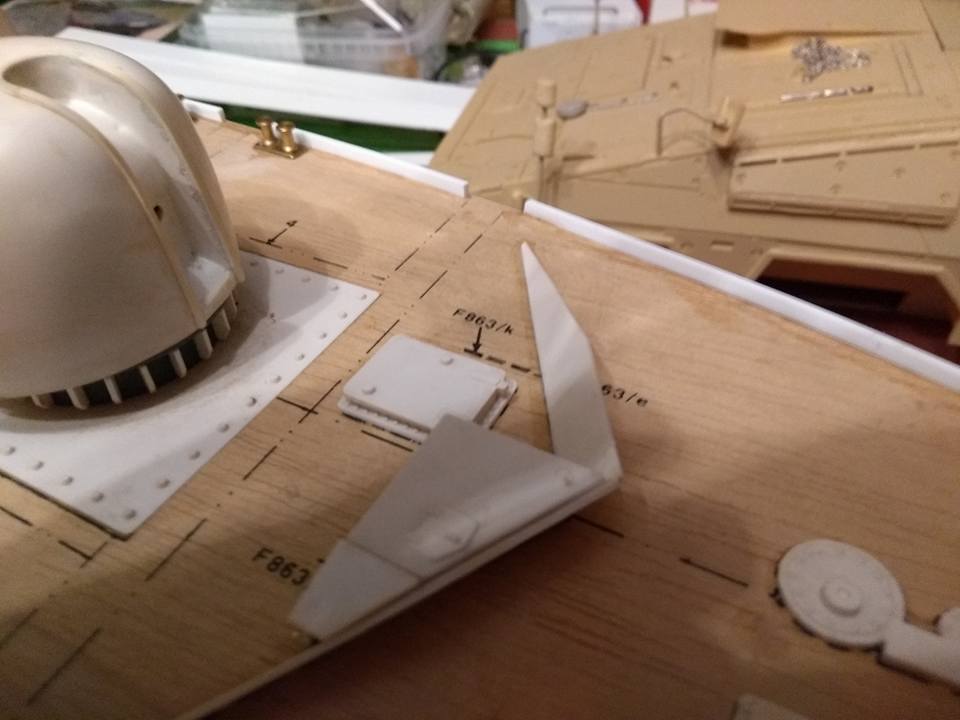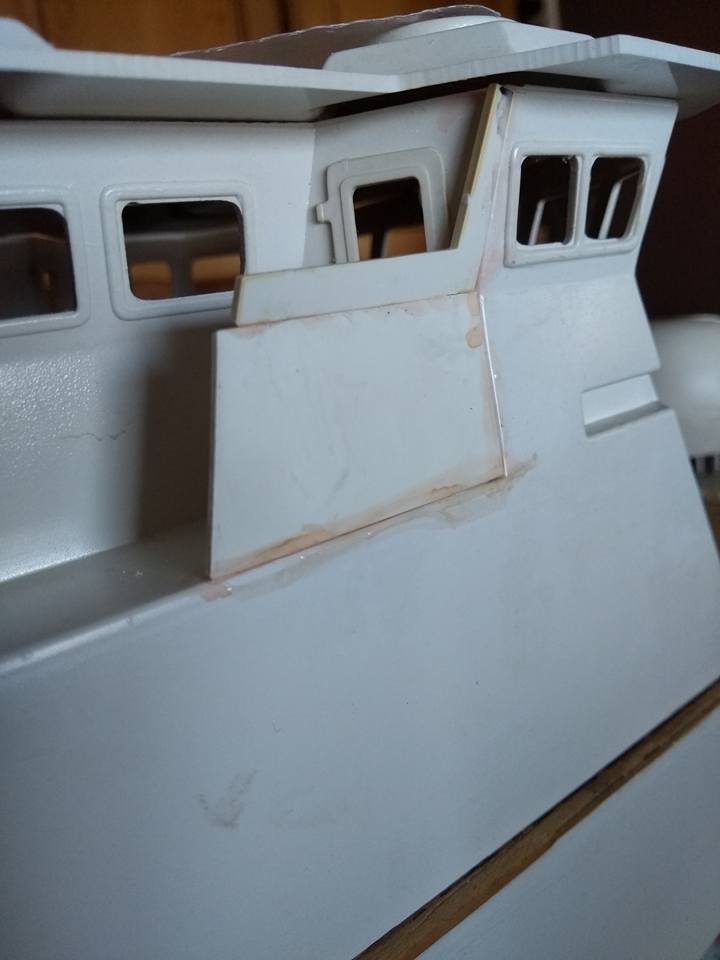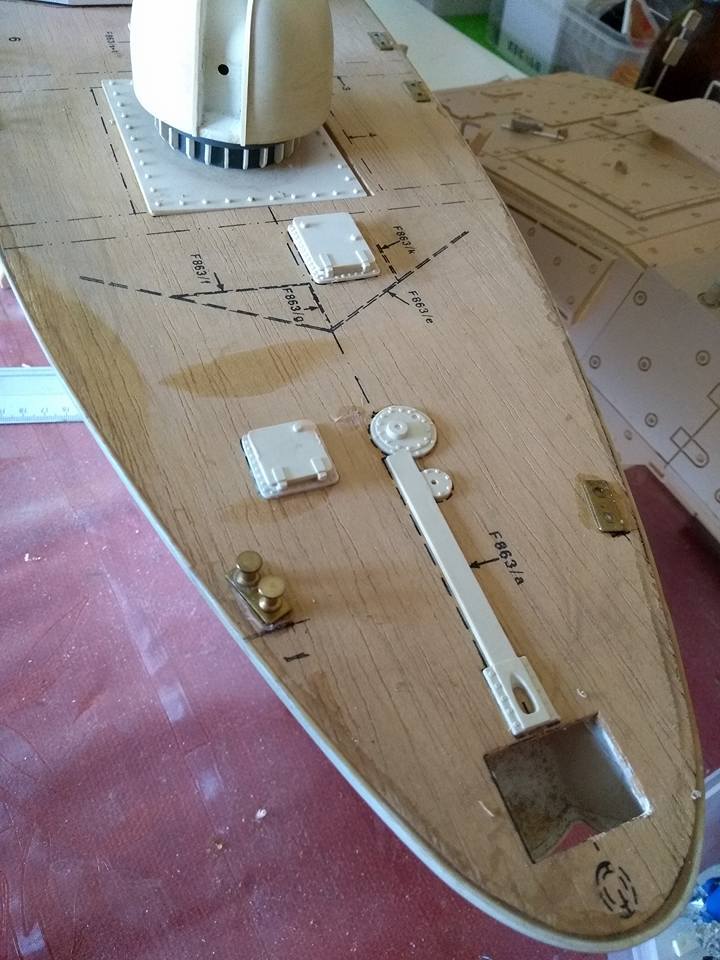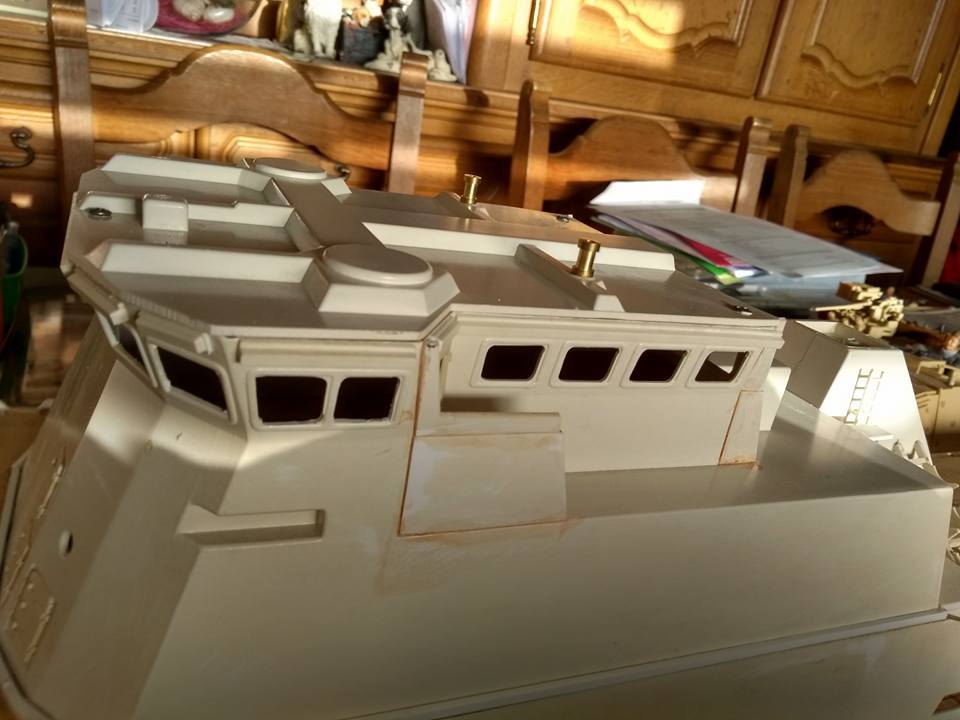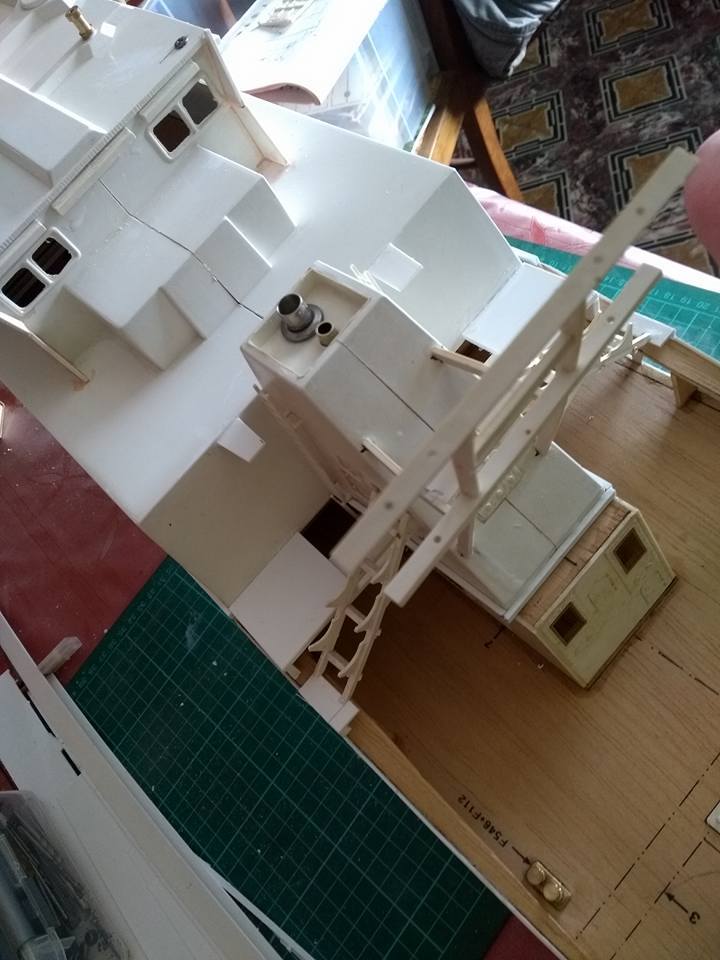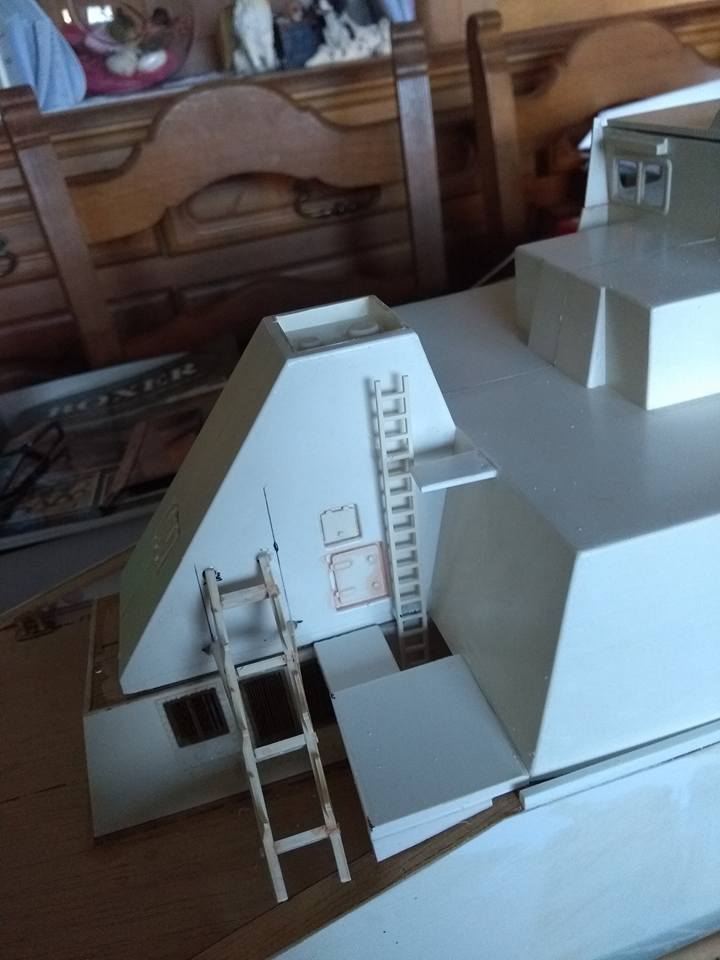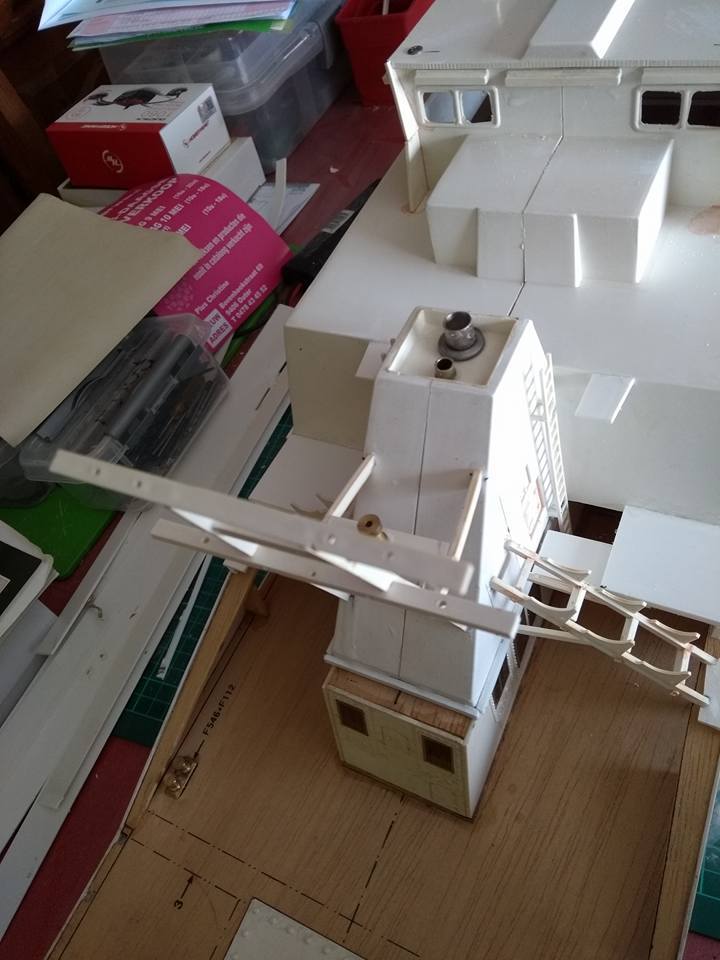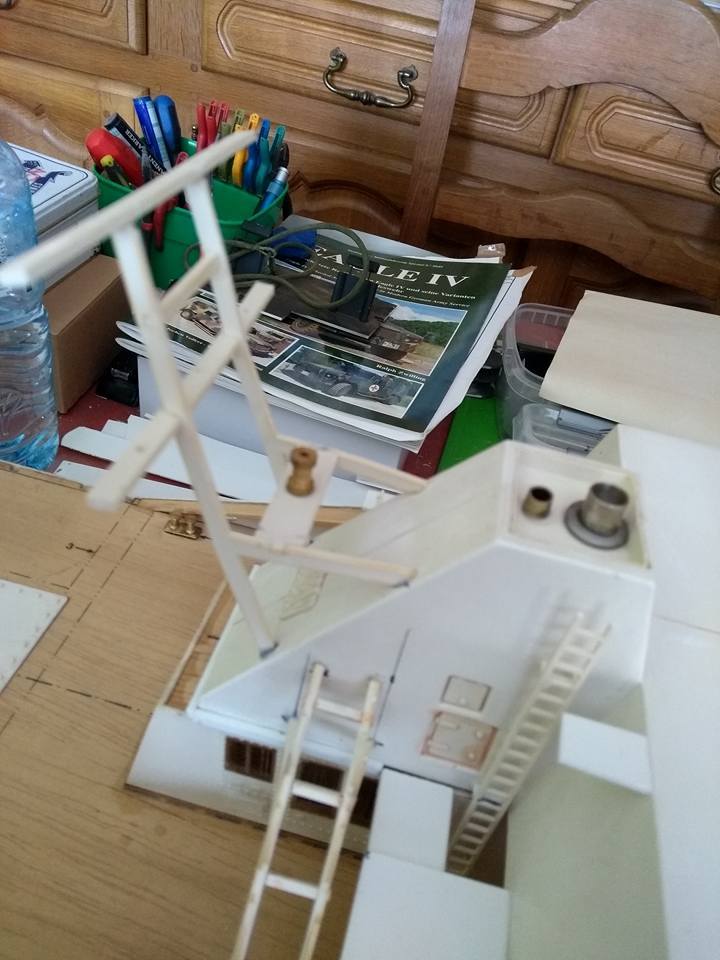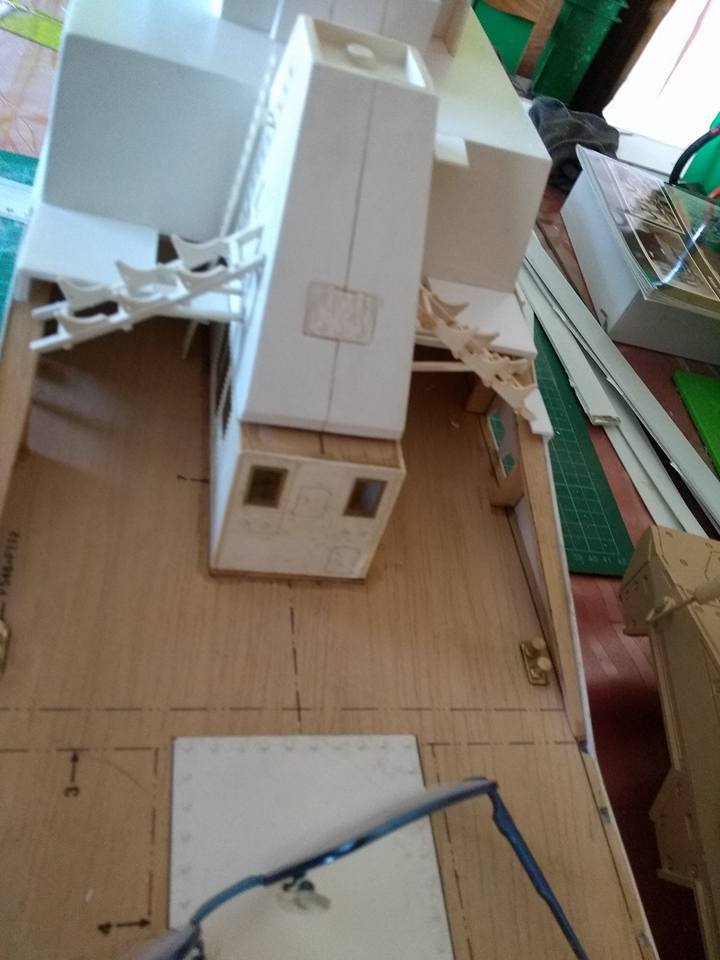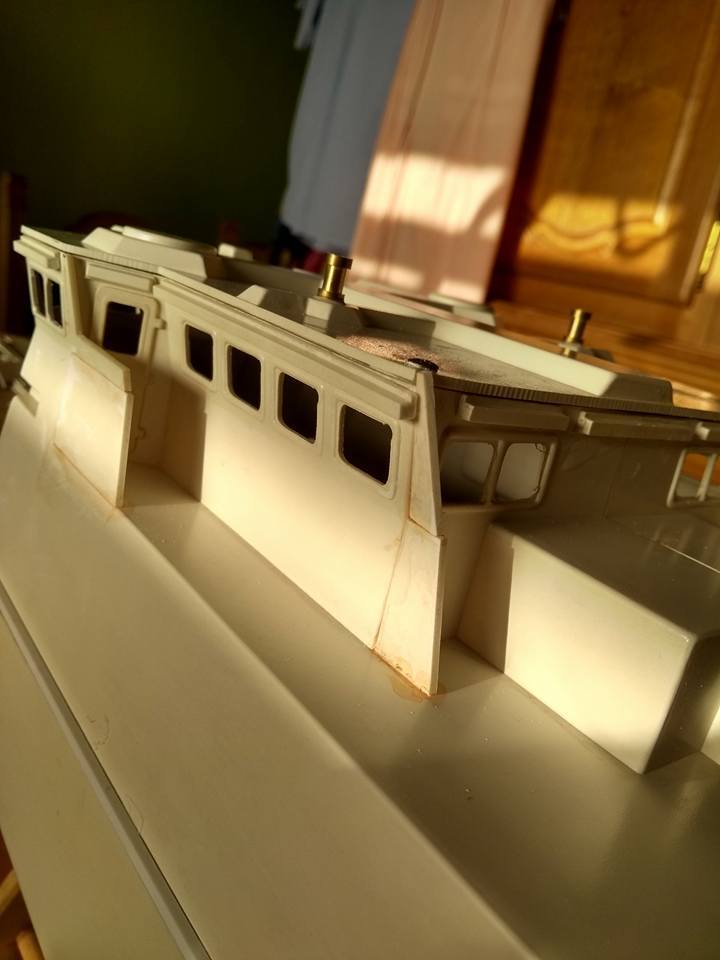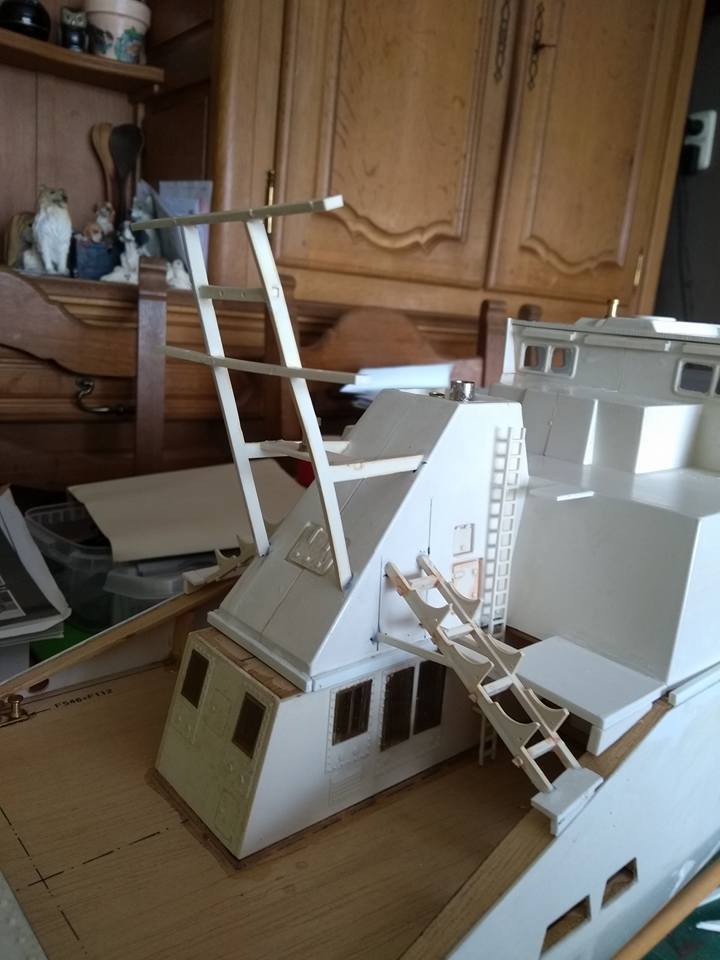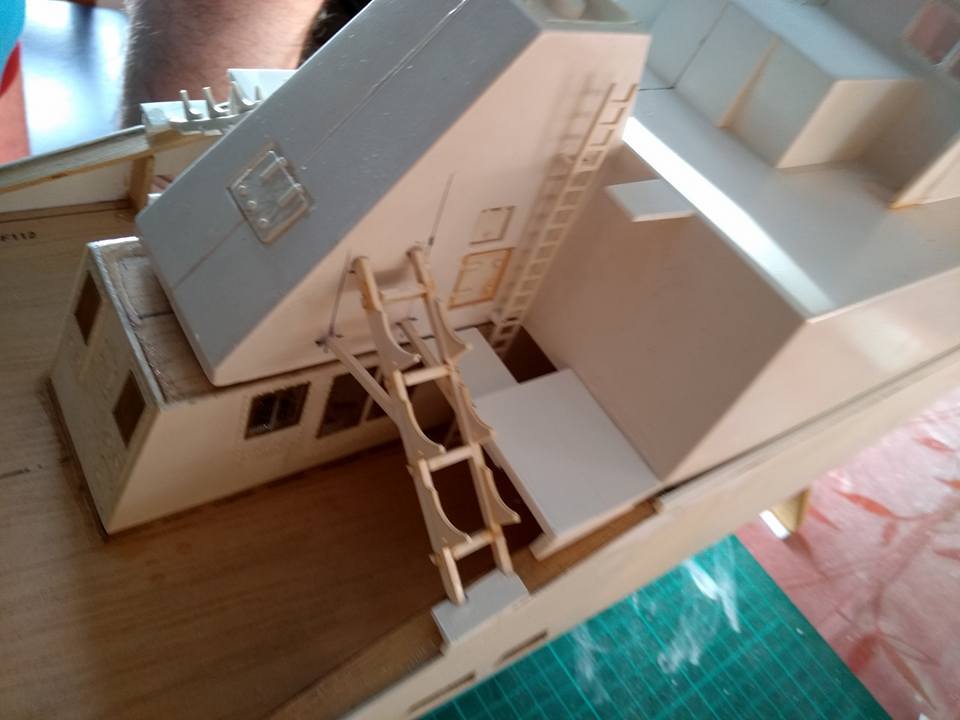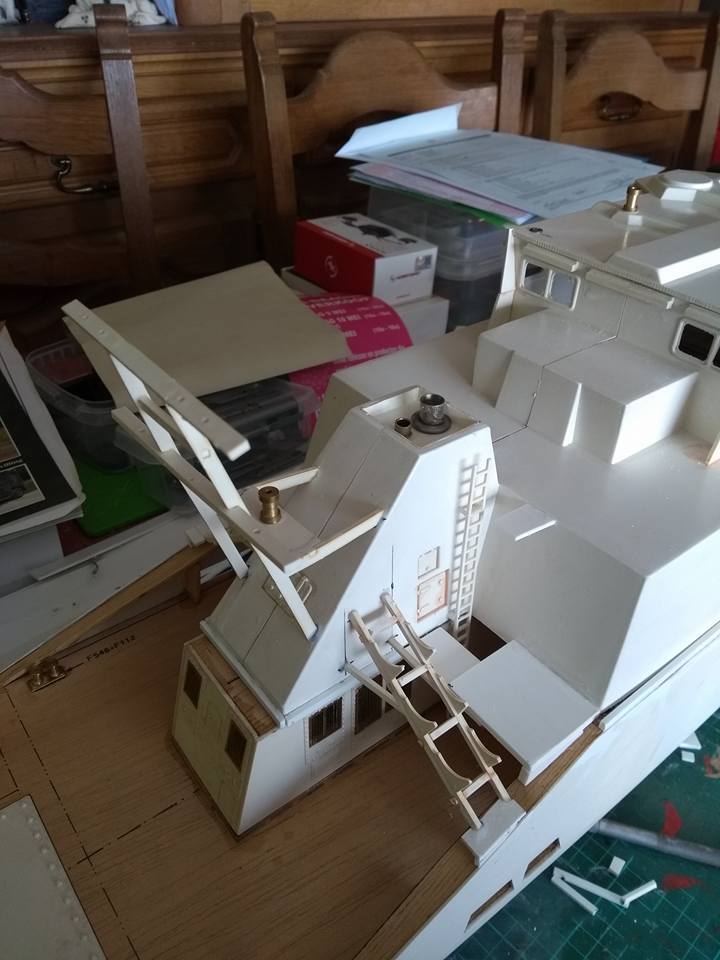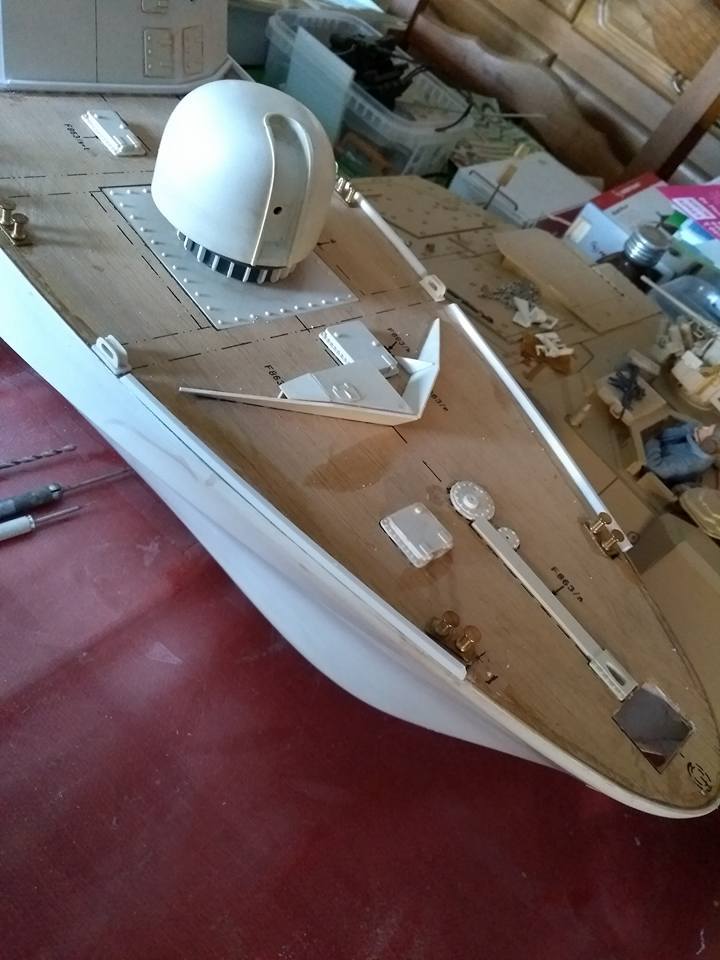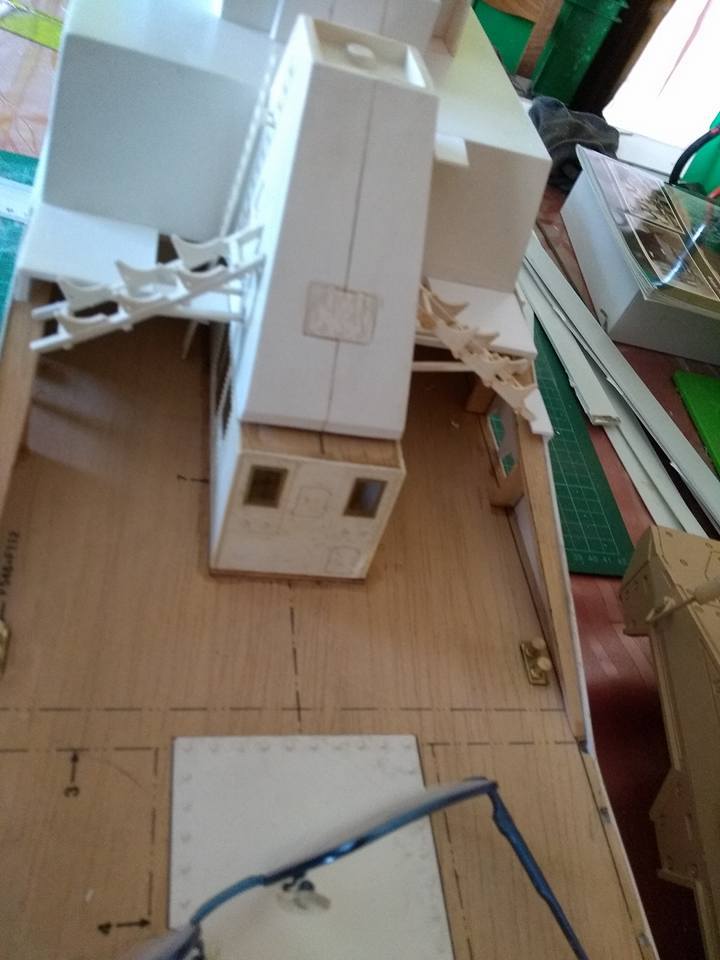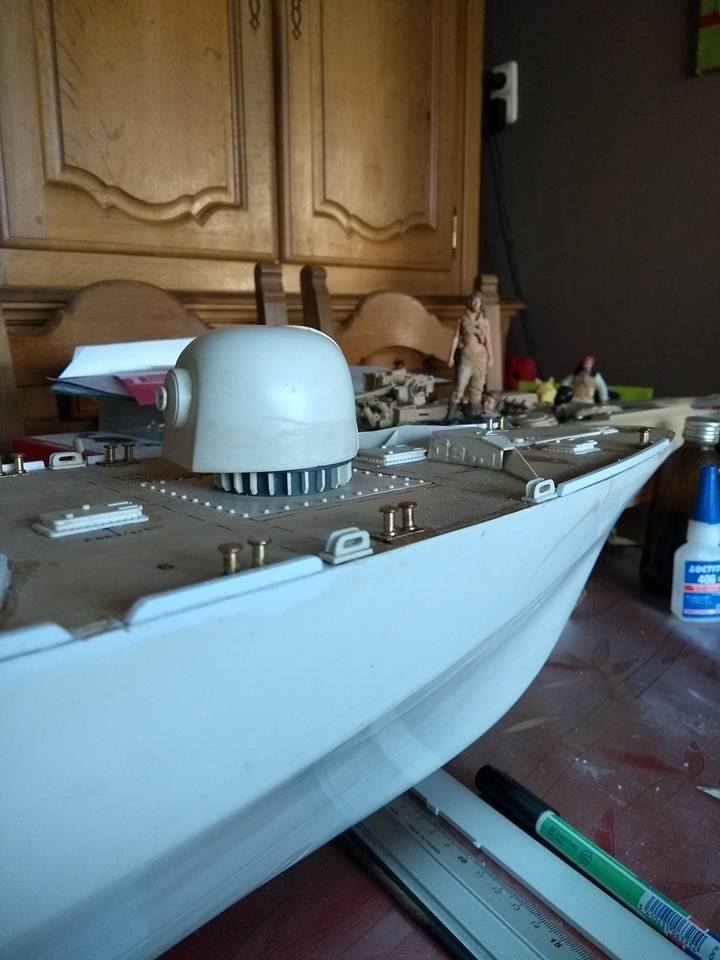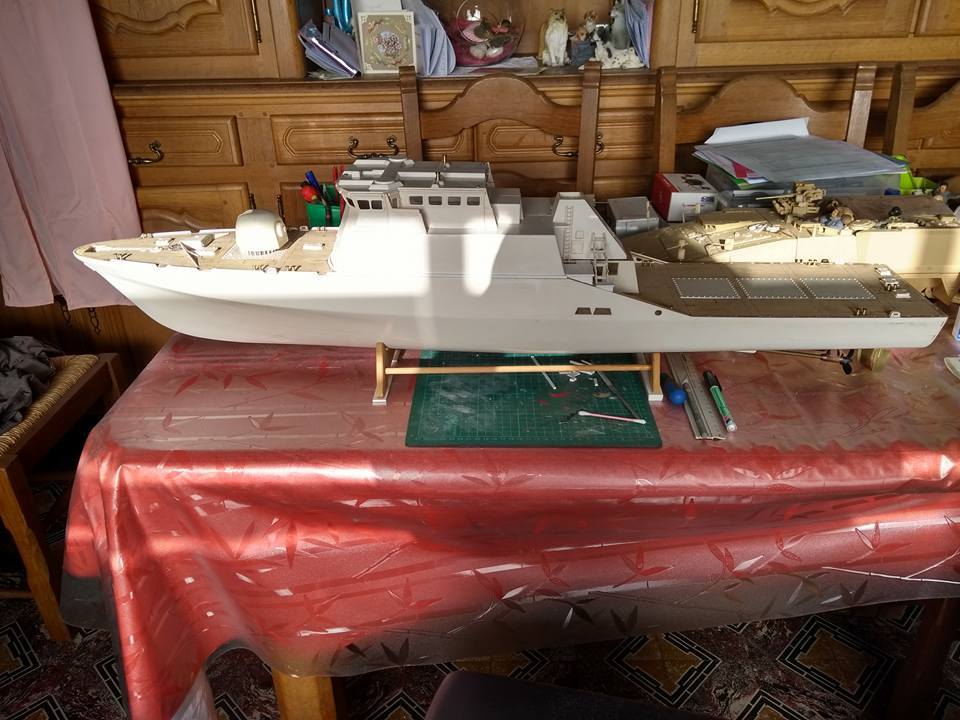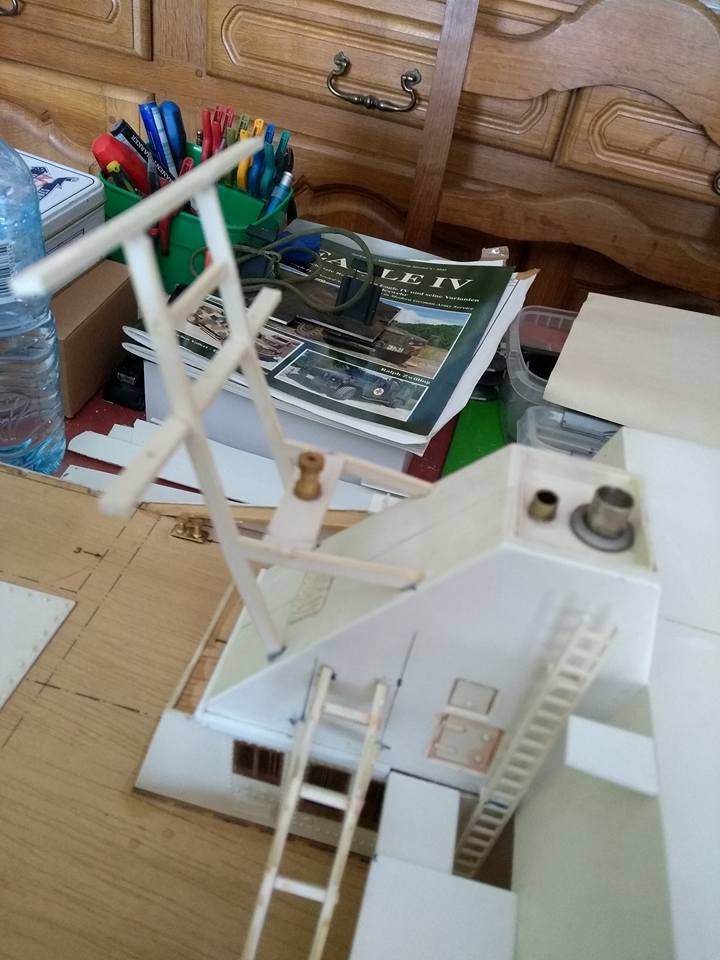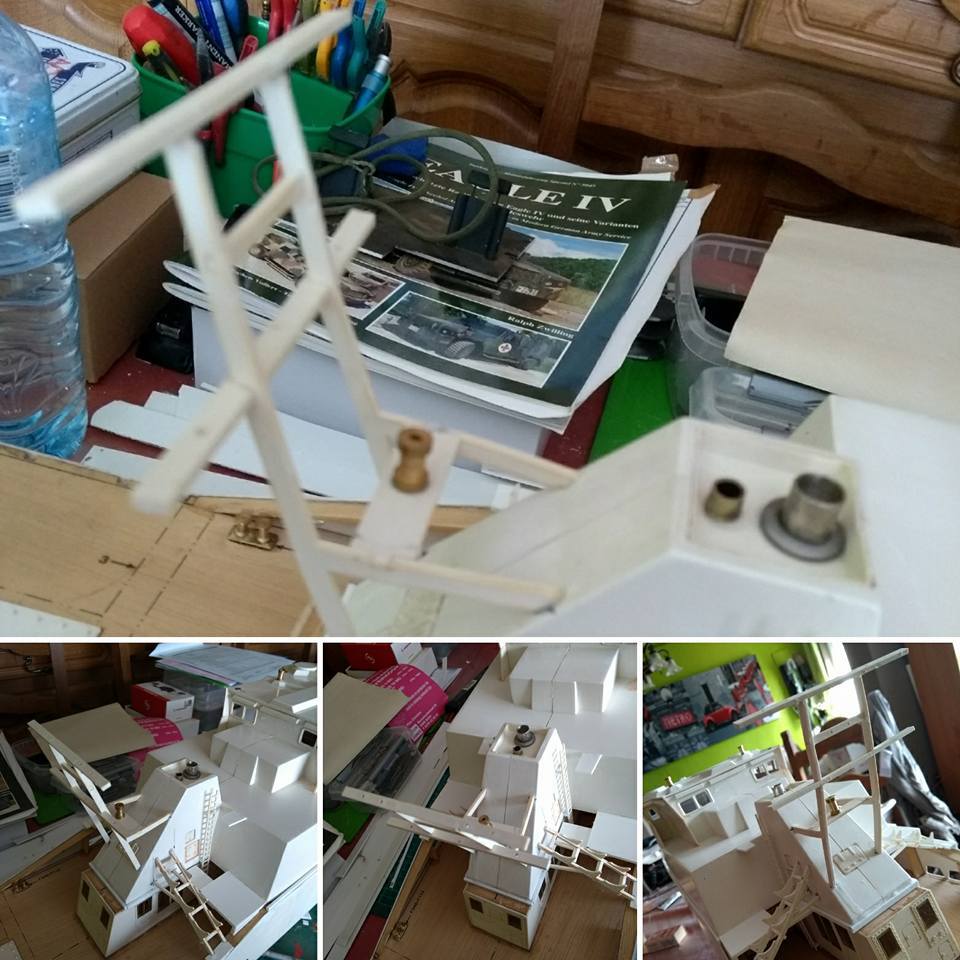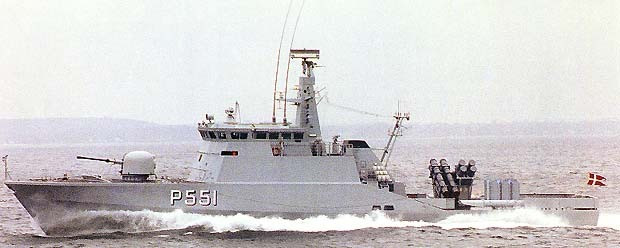Install the app
How to install the app on iOS
Follow along with the video below to see how to install our site as a web app on your home screen.
Nota: This feature may not be available in some browsers.
Je gebruikt een verouderde webbrowser. Het kan mogelijk deze of andere websites niet correct weergeven.
Het is raadzaam om je webbrowser te upgraden of een alternatieve webbrowser te gebruiken.
Het is raadzaam om je webbrowser te upgraden of een alternatieve webbrowser te gebruiken.
Flyvefisken 1/50 Billing Boats - Flex 300 klasse Danish Marine Vessel
- Topicstarter karel47
- Startdatum
StanFlex
From Wikipedia, the free encyclopedia

A mine countermeasures StanFlex module in storage at Korsure Naval Base
StanFlex (also known as STANFLEX or Standard Flex) is a modular mission payload system used by the Kongelige Danske Marine (Royal Danish Navy, KDM).
Originally conceived during the 1980s as a way of replacing several classes of minor war vessel with a single class of multi-role ships (the Flyvefisken class), the StanFlex system consists of weapons and equipment mounted in standardised containers, which can be loaded into slots on the ships. These containers can be swapped out in a short period of time, allowing the ship to switch between roles when needed.
The success of the modular payload system led the KDM to design all new warships with StanFlex slots, and to install slots on older vessels during major refits. By 2012, nine ship classes capable of carrying StanFlex payloads will be in service.
Module design and use
Stanflex modules are constructed by Monberg & Thorsen.[3] Each module is housed in a stainless steel container measuring 3 metres (9.8 ft) in length, 3.5 metres (11 ft) in width, and 2.5 metres (8.2 ft) in height.[3] Precision-machined flanges ensure that the module accurately mates up with connections for power, ventilation, communications, water, and data.[3] The weapon or system is mounted on the roof of the module, while the machinery, electronics, and supporting equipment are housed within.[3]
Modules are usually installed and replaced by a 15-ton capacity mobile crane.[3] A module can be swapped out and replaced within half an hour, and after system testing completed, the ship is ready to deploy within a few hours.[3] However, refresher training for the ship's crew will take significantly longer.[3] Standardised consoles are fitted in the combat information centre: the console's role is defined by the software installed, which can be quickly replaced.[3][4] The ease of installation and use is compared by naval personnel to another Danish product: Lego.[3]
Benefits and drawbacks
FLYVEFISKEN (1989-2008)(In English: The Flying Fish)
.jpg)
FLYVEFISKEN is here seen in the surveillance configuration.
(Photo: Royal Danish Navy)
Classification
Type:
Patrol Vessel (see the notes)
Class:
FLYVEFISKEN Class
Other Ships
in Class:
P 551 HAJEN (1st built)
P 552 HAVKATTEN
P 553 LAXEN
P 554 MAKRELEN
P 555 STØREN
P 556 SVÆRDFISKENP 557 GLENTEN (2nd built)
P 558 GRIBBEN
P 559 LOMMENP 560 RAVNEN
P 561 SKADENP 562VIBEN
P 563 SØLØVEN (3rd built)
From Wikipedia, the free encyclopedia

A mine countermeasures StanFlex module in storage at Korsure Naval Base
StanFlex (also known as STANFLEX or Standard Flex) is a modular mission payload system used by the Kongelige Danske Marine (Royal Danish Navy, KDM).
Originally conceived during the 1980s as a way of replacing several classes of minor war vessel with a single class of multi-role ships (the Flyvefisken class), the StanFlex system consists of weapons and equipment mounted in standardised containers, which can be loaded into slots on the ships. These containers can be swapped out in a short period of time, allowing the ship to switch between roles when needed.
The success of the modular payload system led the KDM to design all new warships with StanFlex slots, and to install slots on older vessels during major refits. By 2012, nine ship classes capable of carrying StanFlex payloads will be in service.
Module design and use
Stanflex modules are constructed by Monberg & Thorsen.[3] Each module is housed in a stainless steel container measuring 3 metres (9.8 ft) in length, 3.5 metres (11 ft) in width, and 2.5 metres (8.2 ft) in height.[3] Precision-machined flanges ensure that the module accurately mates up with connections for power, ventilation, communications, water, and data.[3] The weapon or system is mounted on the roof of the module, while the machinery, electronics, and supporting equipment are housed within.[3]
Modules are usually installed and replaced by a 15-ton capacity mobile crane.[3] A module can be swapped out and replaced within half an hour, and after system testing completed, the ship is ready to deploy within a few hours.[3] However, refresher training for the ship's crew will take significantly longer.[3] Standardised consoles are fitted in the combat information centre: the console's role is defined by the software installed, which can be quickly replaced.[3][4] The ease of installation and use is compared by naval personnel to another Danish product: Lego.[3]
Benefits and drawbacks
- Unused modules can be stored in controlled conditions, reducing the need for preventative maintenance.[1]
- Ships do not need to be taken out of service when equipment requires maintenance, and vice versa.[1]
- New weapons and systems can be installed on the vessels by fitting them to a module, instead of refitting the entire ship.[1]
- When a ship or class is removed from service, the modules can be reused by other vessels.[2] Similarly, as they do not have to be built into the ship, modular weapons and systems do not have to be factored into the purchase cost of a new vessel: in 2006, a proposed 6,000-ton frigate design for the KDM was predicted to cost DKK 1.6 billion per ship (USD 285 million), while similar projects in other European nations were slated to cost between DKK 2.6 billion and DKK 6.3 billion (USD 463 million to 1.12 billion).[2]
- The multi-role ships are slightly less efficient than a dedicated ship in a particular role, but the ability to be quickly reequipped for other roles more than makes up for this.[3]
FLYVEFISKEN (1989-2008)(In English: The Flying Fish)
.jpg)
FLYVEFISKEN is here seen in the surveillance configuration.
(Photo: Royal Danish Navy)
Classification
Type:
Patrol Vessel (see the notes)
Class:
FLYVEFISKEN Class
Other Ships
in Class:
P 551 HAJEN (1st built)
P 552 HAVKATTEN
P 553 LAXEN
P 554 MAKRELEN
P 555 STØREN
P 556 SVÆRDFISKENP 557 GLENTEN (2nd built)
P 558 GRIBBEN
P 559 LOMMENP 560 RAVNEN
P 561 SKADENP 562VIBEN
P 563 SØLØVEN (3rd built)
specs of those flex 300 vessels
Built by:
DANYARD, Aalborg (The hull was molded at Karlskrona Varvet, Sweden)
Design:
Naval Material Command
Laid down:
August 15, 1985
Launched:
April 26, 1996
Commissioned:
December 19, 1989
Decommissioned:
May 30, 2008
Pennant Number:
P550
Int'l Call Sign:
OVDA
Displacement:
450 tons
Dimensions:
Length:
Beam:
Draught:
-
(LOA) 54.00 m
(LWL) 50.00 m
9.00 m
Norm 2.60 m
Max. 3.00 m
Complement:
19-29 men, depending on configuration
Propulsion:
1 ea General Electric Gas Turbines 5,680 Hp
2 ea MTU Diesel Engines 5,440 Hp
3 ea Rexroth Aux. Engines
1 ea Bowthruster
3 ea Propellers
Range:
2,400 nautical miles at 18 knots
Armament:
1 ea 76 mm Gun Mk M/85 LvSa (all versions)
2 ea 12.7 mm Heavy Machine Gun M/01 LvSa
Further (depending on task):
4 ea Harpoon SSM (2x2) or
8 ea Harpoon SSM (2x4) and
1 ea Sea Sparrow SAM VLS Mk.48 Mod.0 (1x6)
or
2 ea Sea Sparrow SAM VLS Mk.48 Mod.0 (2x6)
Extraordinary:
1 ea VDS (Variable Depth Sonar)
4 ea Anti Submarine Torpedoes MU-90 M/04 (2x2)
or
60 mines (max 60 tons)
Previously also:
2 ea 533 mm Torpedo Tubes (2x1)
Speed:
+30 knob (gas turbines) / 20 knob (diesels)
History
Military Service:
June 17, 1988
Adoption by Næstved Community
May 30, 2008
Decommissioned and handed over to the Lithuanian Navy
The Patrol Vessels of the FLYVEFISKEN Class, also named as the Standard Flex 300 type, is capable of switching between several rolls/configurations by a planned container system.
The different containers will make it possible to change the role of the ship from a clean surveillance role to a guided missile vessel or Mine Hunter within hours.
Built by:
DANYARD, Aalborg (The hull was molded at Karlskrona Varvet, Sweden)
Design:
Naval Material Command
Laid down:
August 15, 1985
Launched:
April 26, 1996
Commissioned:
December 19, 1989
Decommissioned:
May 30, 2008
Pennant Number:
P550
Int'l Call Sign:
OVDA
Displacement:
450 tons
Dimensions:
Length:
Beam:
Draught:
-
(LOA) 54.00 m
(LWL) 50.00 m
9.00 m
Norm 2.60 m
Max. 3.00 m
Complement:
19-29 men, depending on configuration
Propulsion:
1 ea General Electric Gas Turbines 5,680 Hp
2 ea MTU Diesel Engines 5,440 Hp
3 ea Rexroth Aux. Engines
1 ea Bowthruster
3 ea Propellers
Range:
2,400 nautical miles at 18 knots
Armament:
1 ea 76 mm Gun Mk M/85 LvSa (all versions)
2 ea 12.7 mm Heavy Machine Gun M/01 LvSa
Further (depending on task):
4 ea Harpoon SSM (2x2) or
8 ea Harpoon SSM (2x4) and
1 ea Sea Sparrow SAM VLS Mk.48 Mod.0 (1x6)
or
2 ea Sea Sparrow SAM VLS Mk.48 Mod.0 (2x6)
Extraordinary:
1 ea VDS (Variable Depth Sonar)
4 ea Anti Submarine Torpedoes MU-90 M/04 (2x2)
or
60 mines (max 60 tons)
Previously also:
2 ea 533 mm Torpedo Tubes (2x1)
Speed:
+30 knob (gas turbines) / 20 knob (diesels)
History
Military Service:
June 17, 1988
Adoption by Næstved Community
May 30, 2008
Decommissioned and handed over to the Lithuanian Navy
The Patrol Vessels of the FLYVEFISKEN Class, also named as the Standard Flex 300 type, is capable of switching between several rolls/configurations by a planned container system.
The different containers will make it possible to change the role of the ship from a clean surveillance role to a guided missile vessel or Mine Hunter within hours.
Ben nog altijd bezig met opzoekingen omtrent mn skaden en aan een aantal projecten bezig leo 2a5 en een mrap op 1/16
Als ik de fotos goed interpreteer is met die lanceerinrichtingen een kraan niet mogelijk, dus op achterkant komt de dubbele 2x2 harpoon mk48 en in midden 3x2 sea sparrow lanceerinrichting , die verdeling heeft waarschijnlijk te maken met de gewichtsverdeling en stabiliteit bij het afvuren me dunkt
Als ik de fotos goed interpreteer is met die lanceerinrichtingen een kraan niet mogelijk, dus op achterkant komt de dubbele 2x2 harpoon mk48 en in midden 3x2 sea sparrow lanceerinrichting , die verdeling heeft waarschijnlijk te maken met de gewichtsverdeling en stabiliteit bij het afvuren me dunkt
TIMBERWOLF
Forum veteraan
heel mooi gemaakt
tot spijt in mn hart moet ik deze boot verkopen , werkte er graag aan maar de tijd mankeerd , als iemand er in geinteresserd is met alle voorhande toebehoren had ik er graag 300 euro voor, plannen , beslag etc alles
het heeft geen zin hem hier langer te laten staan , de ruimte is te beperkt en de boxer neemt zoveel tijd in beslag
het heeft geen zin hem hier langer te laten staan , de ruimte is te beperkt en de boxer neemt zoveel tijd in beslag
